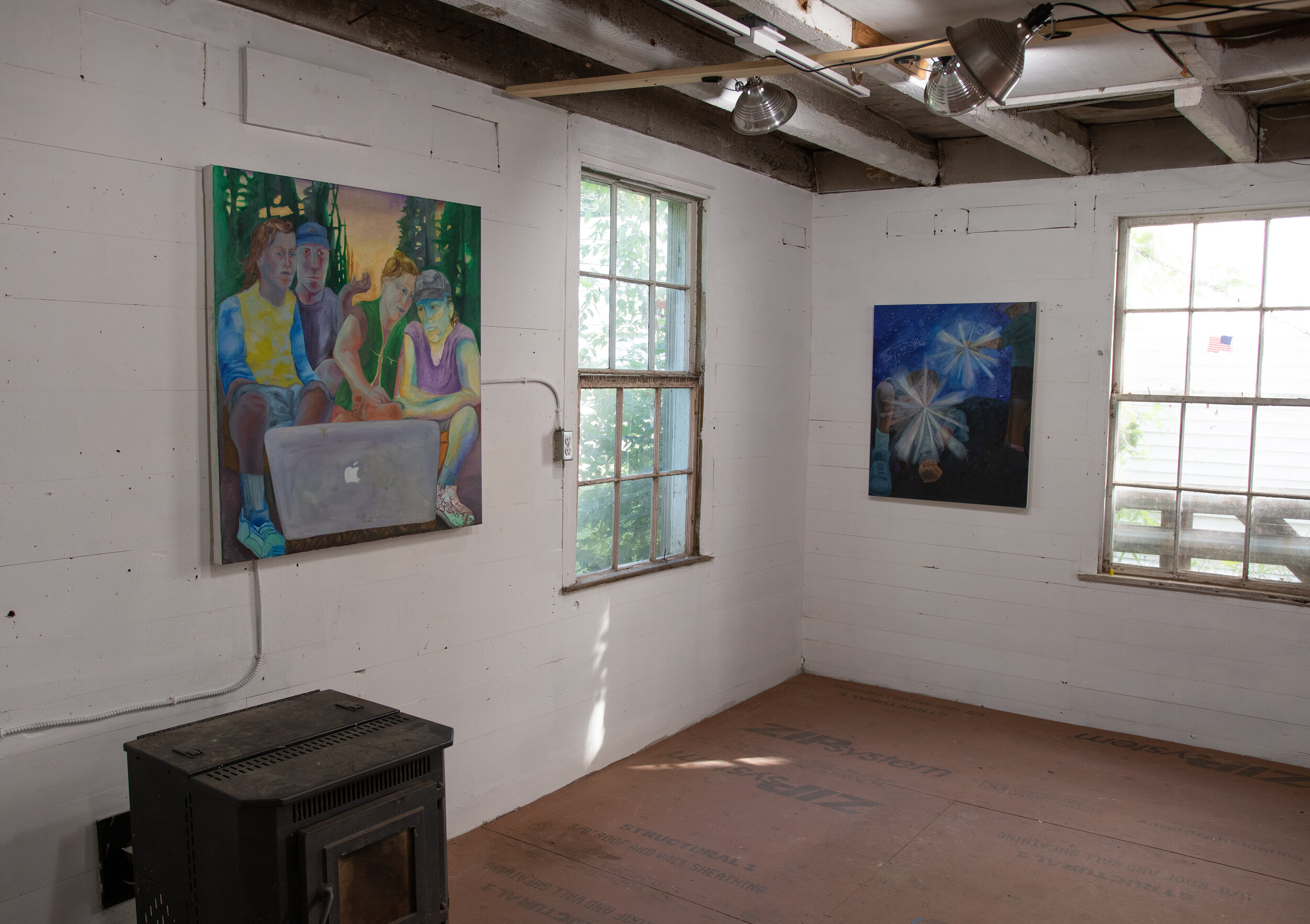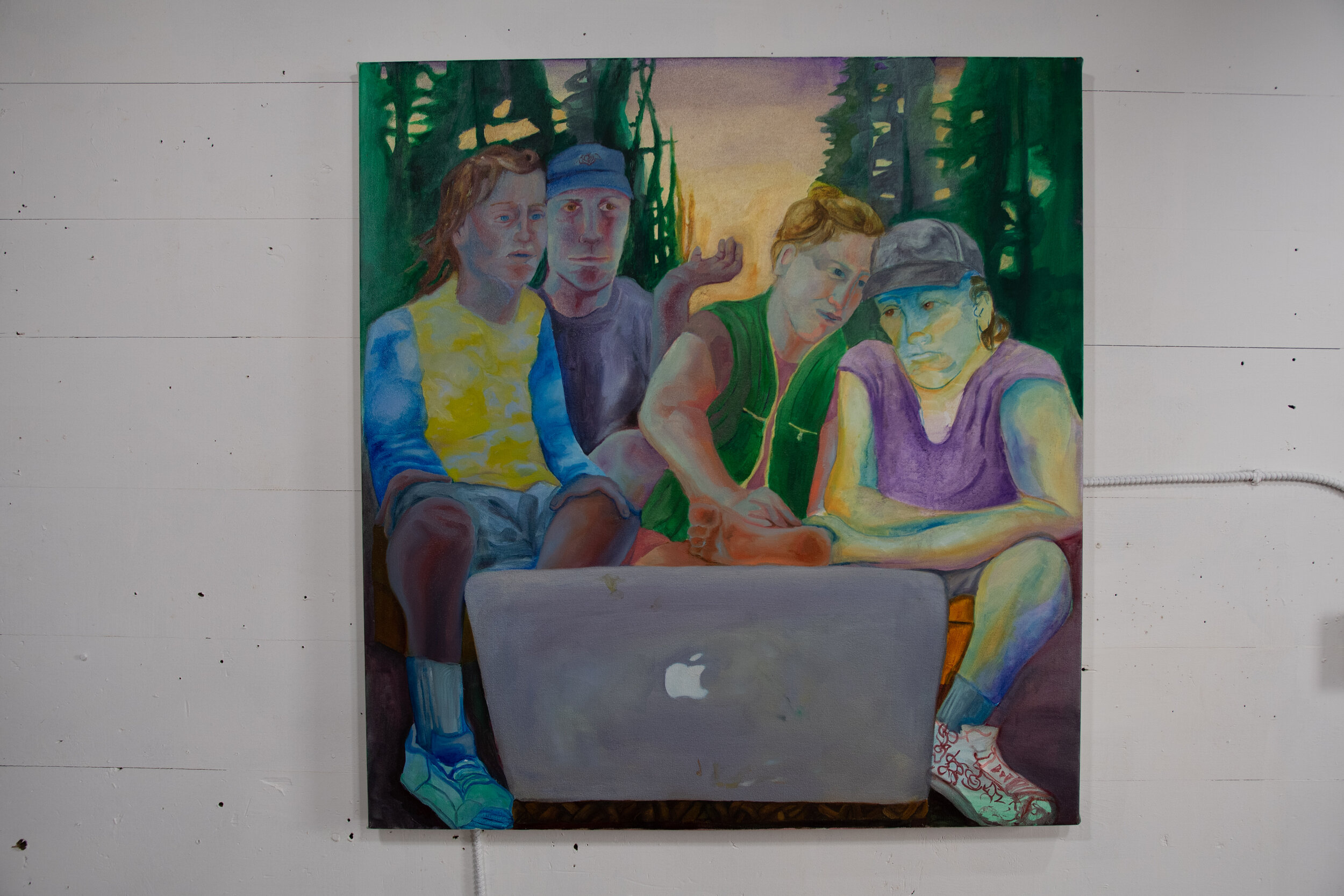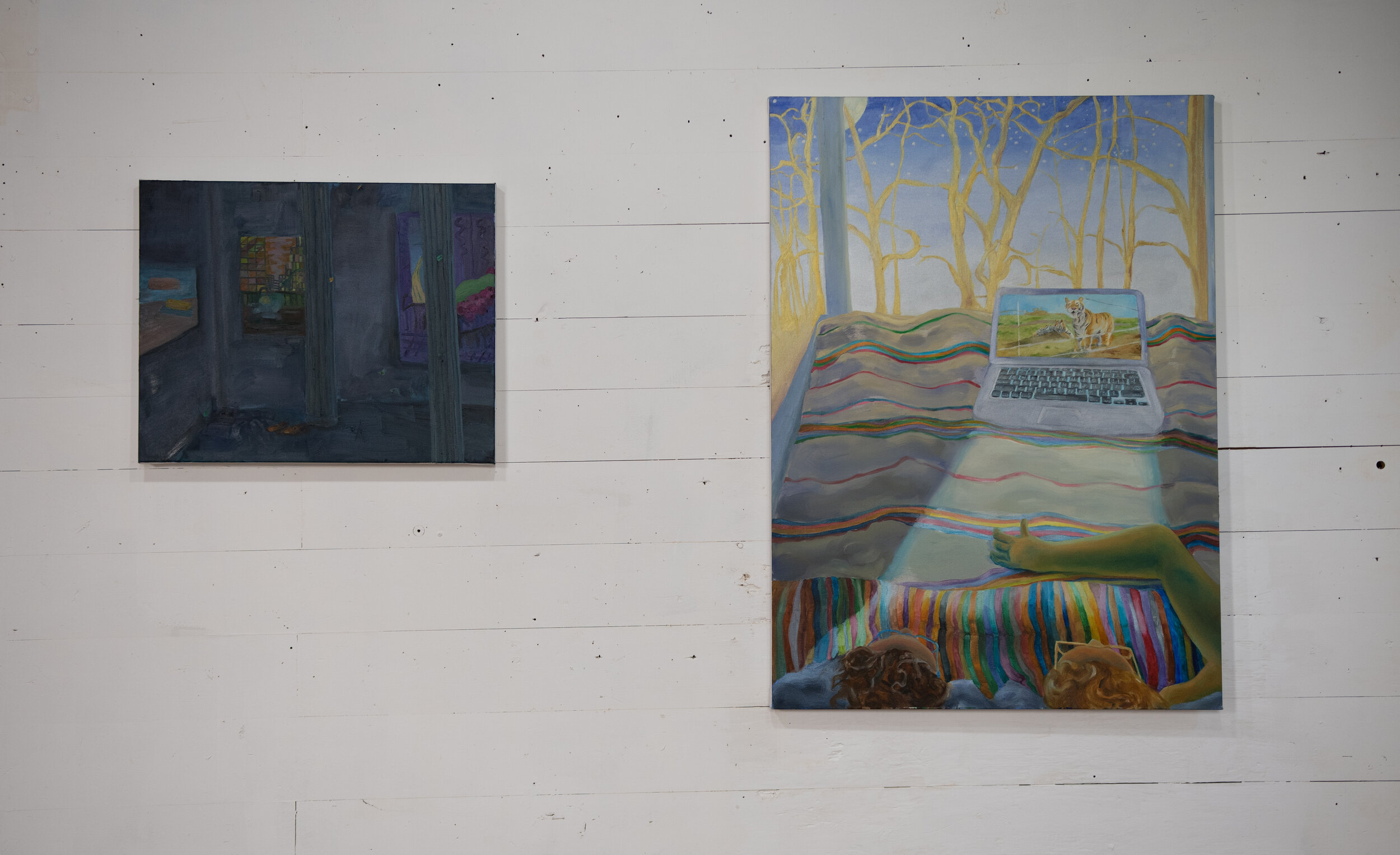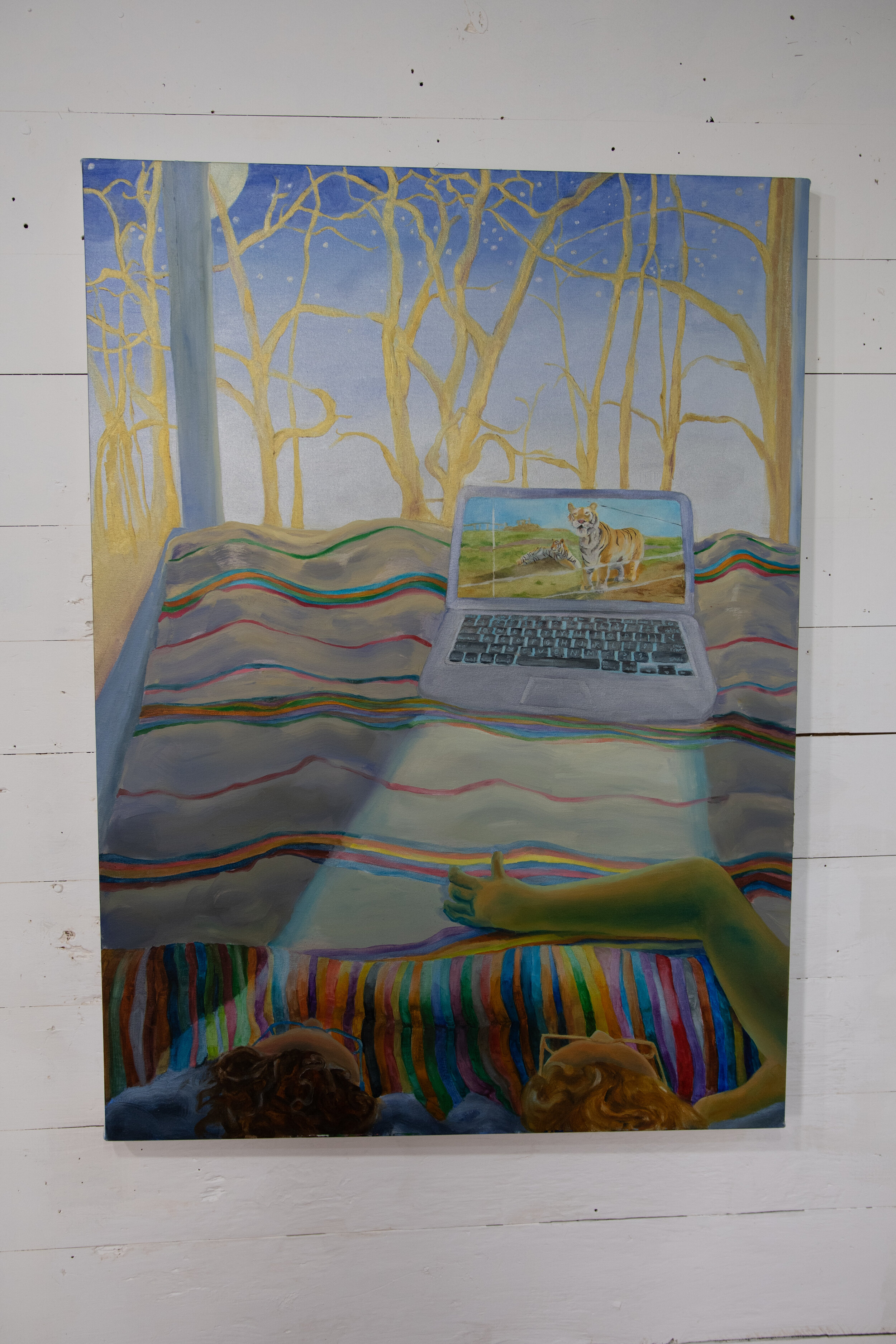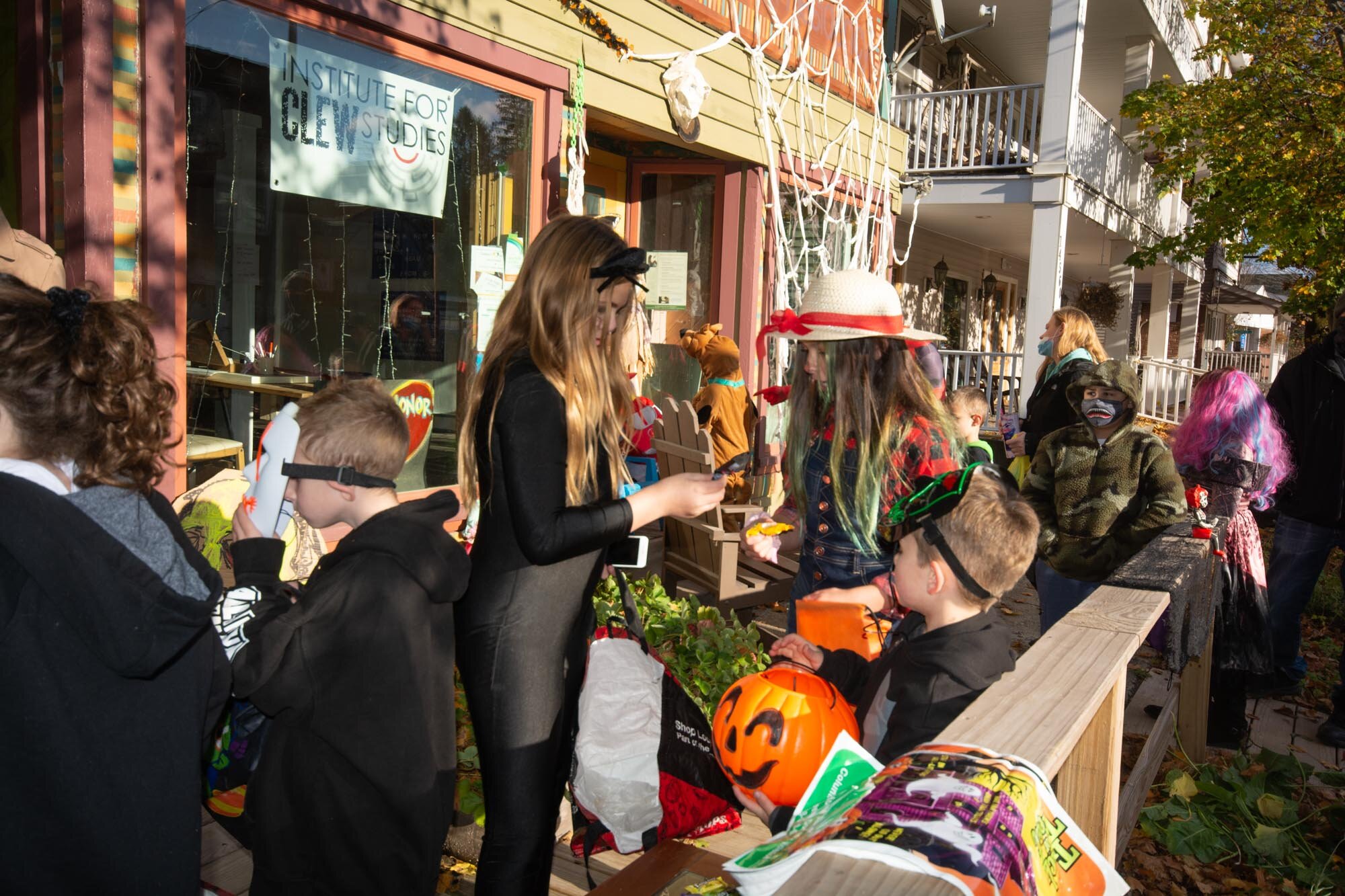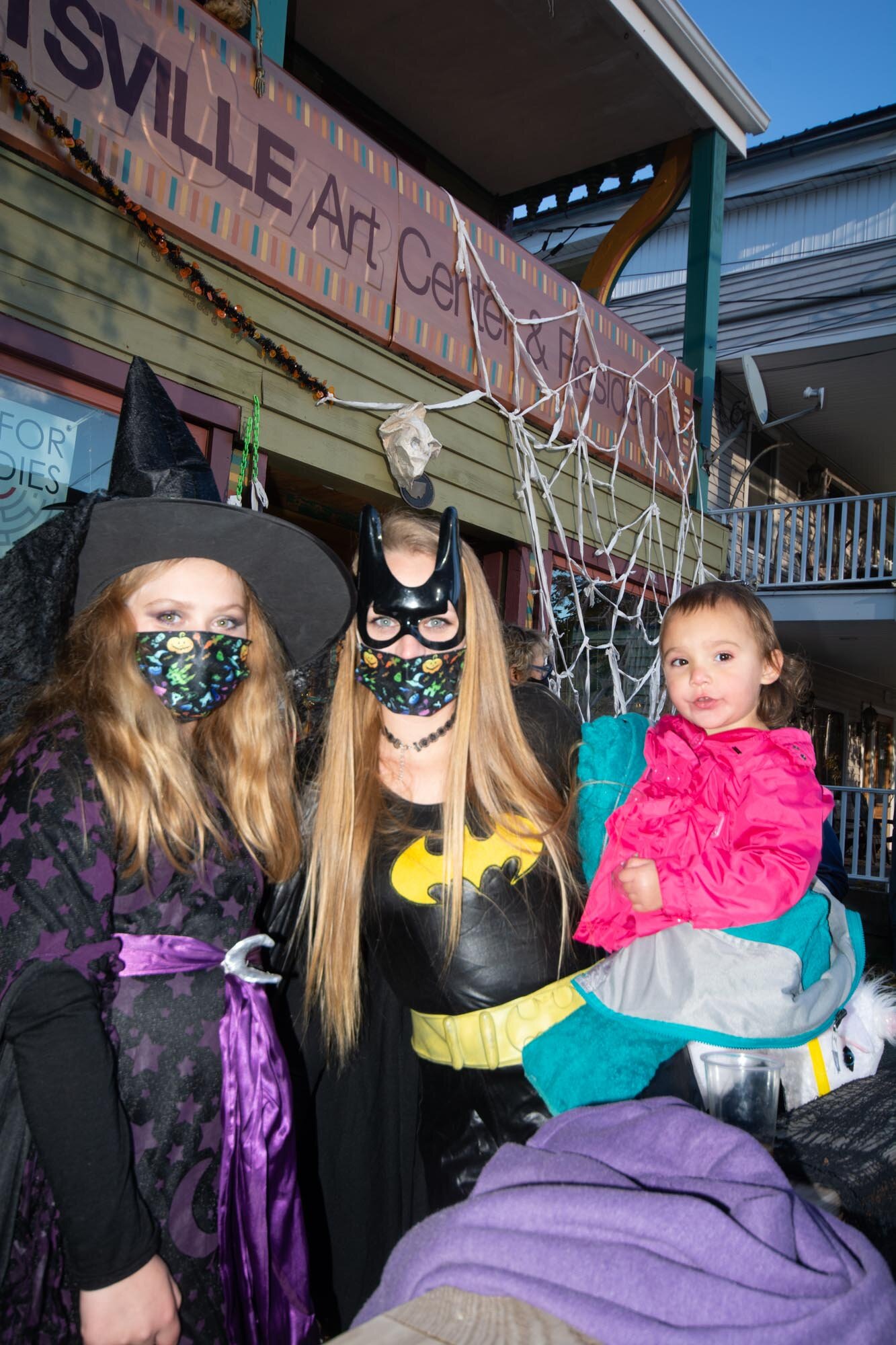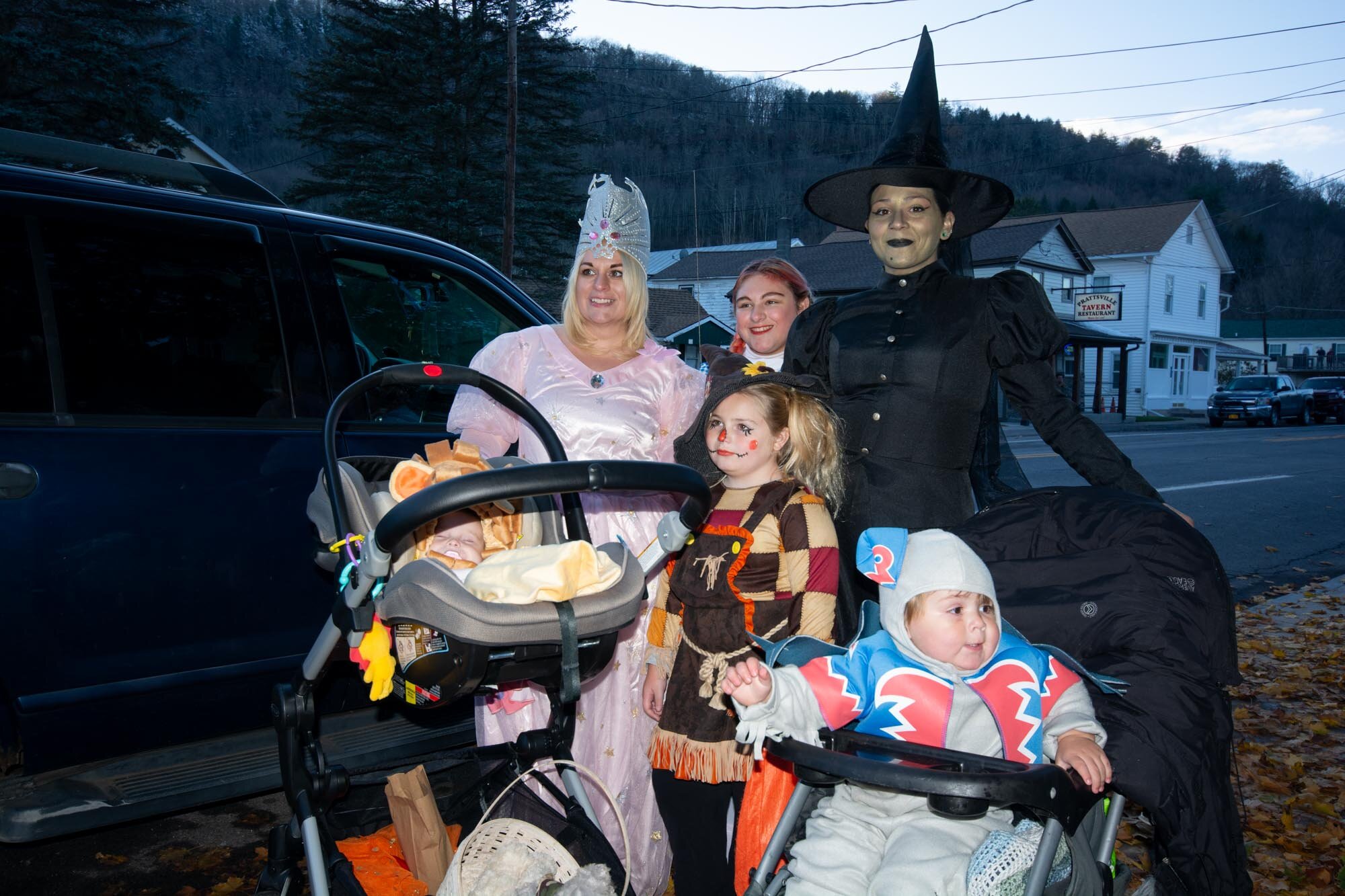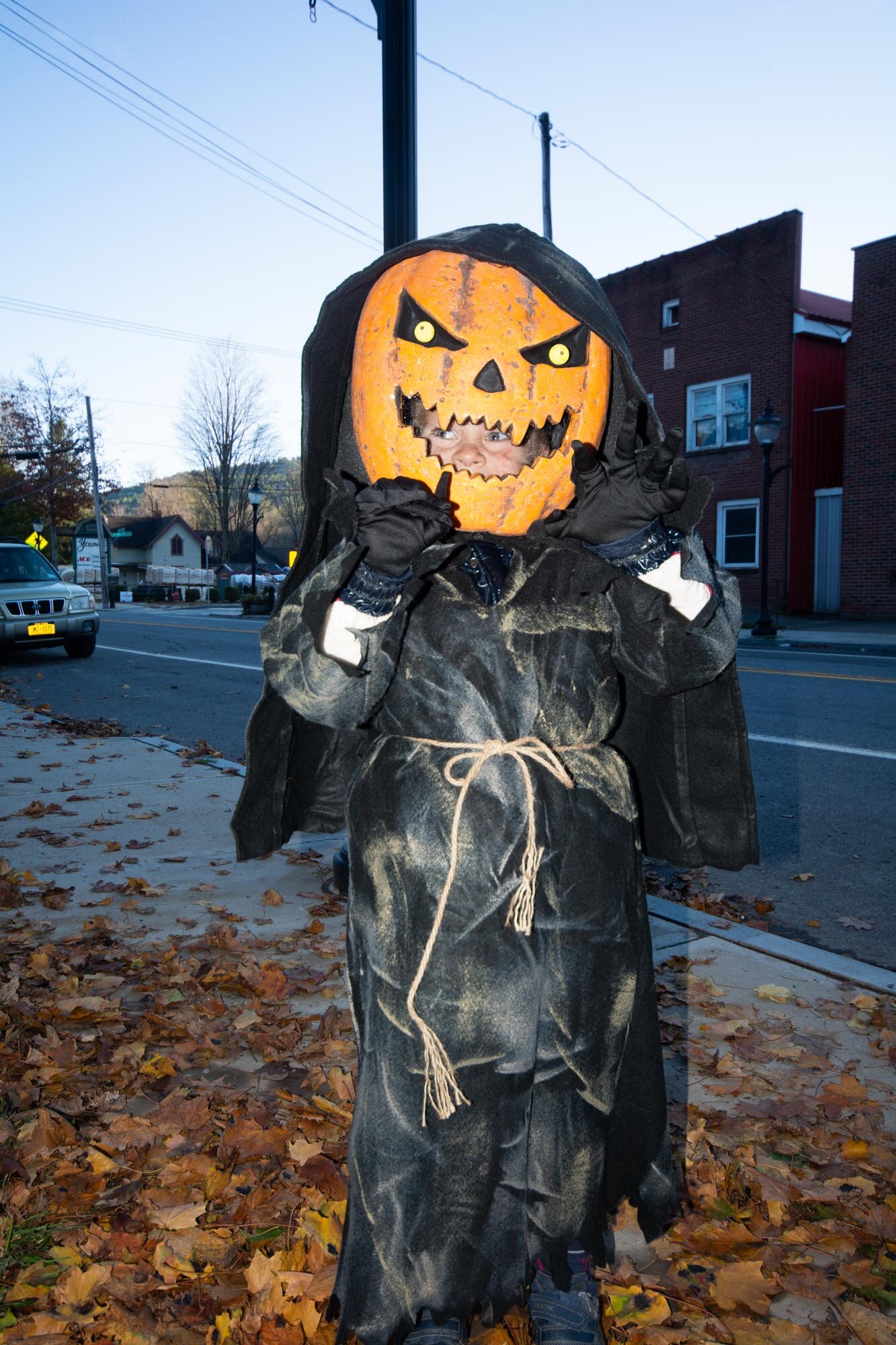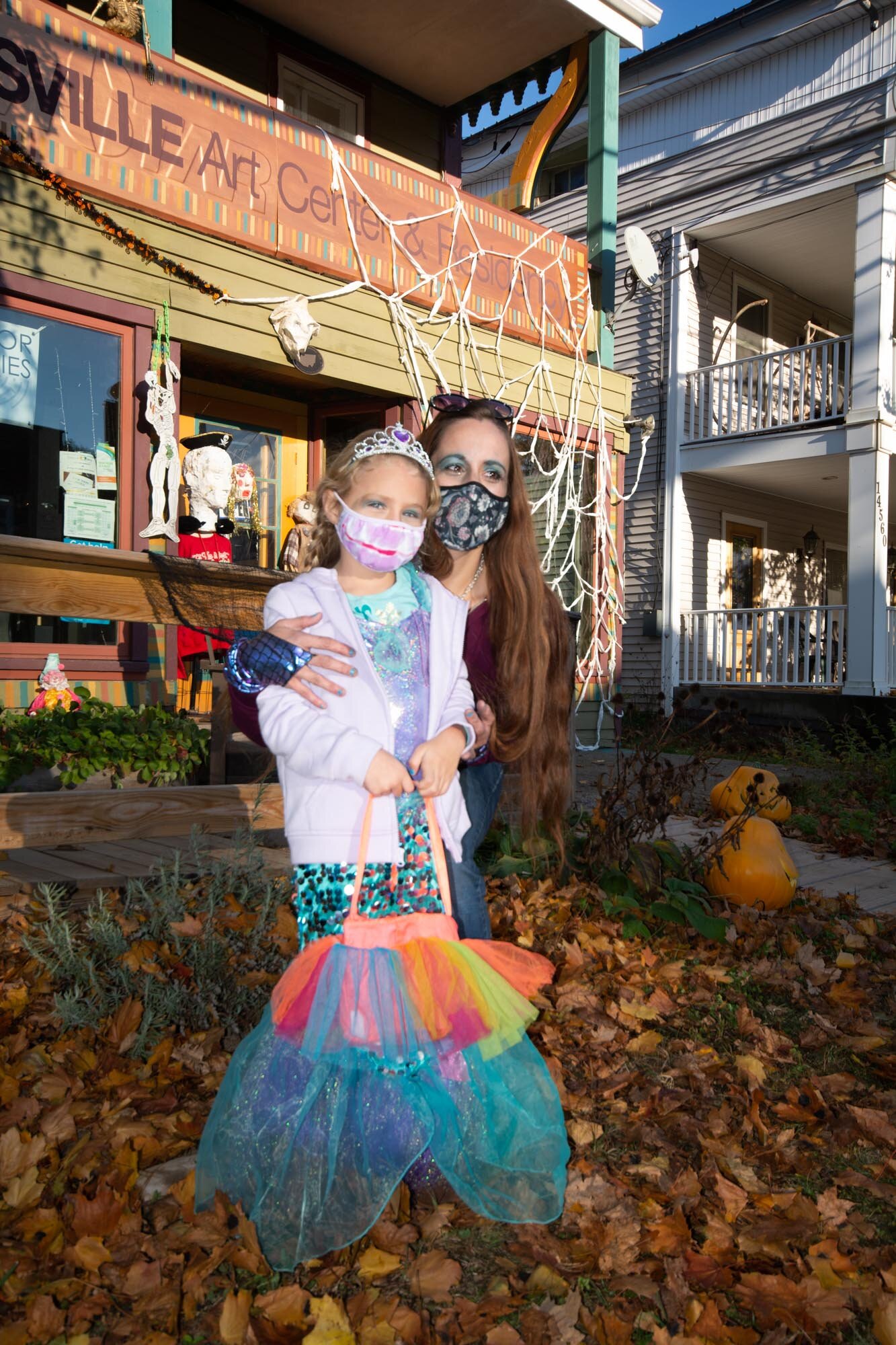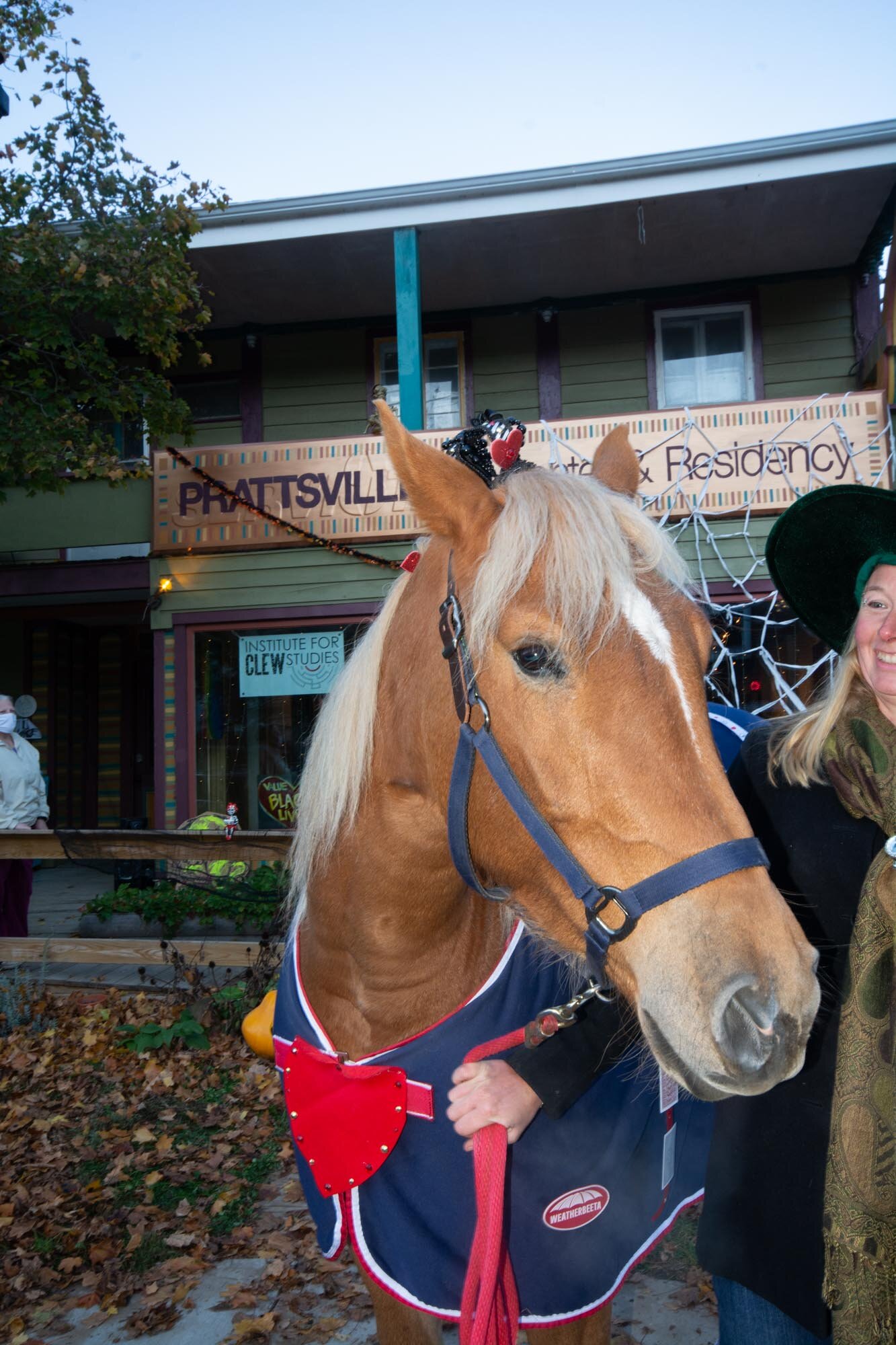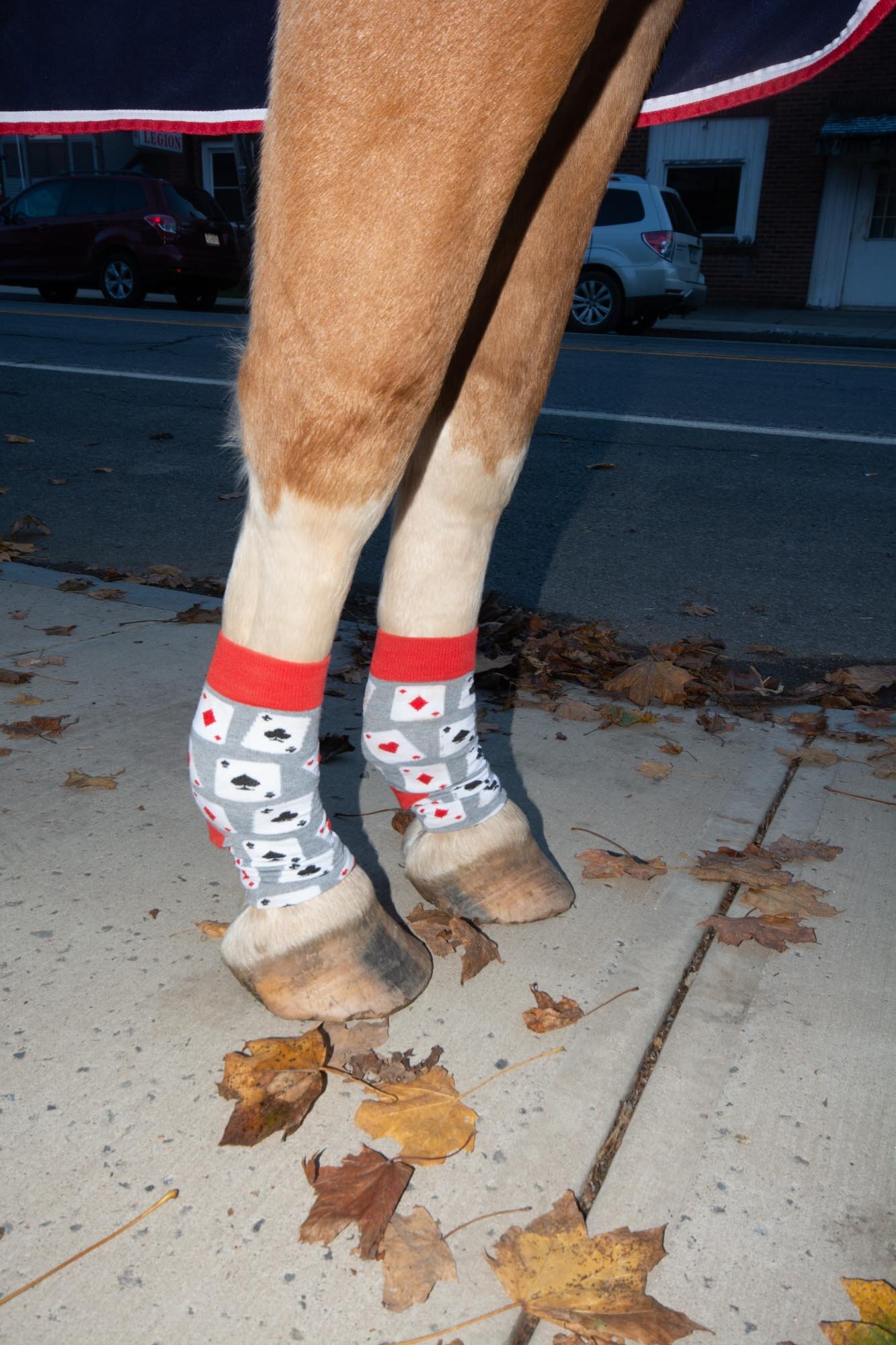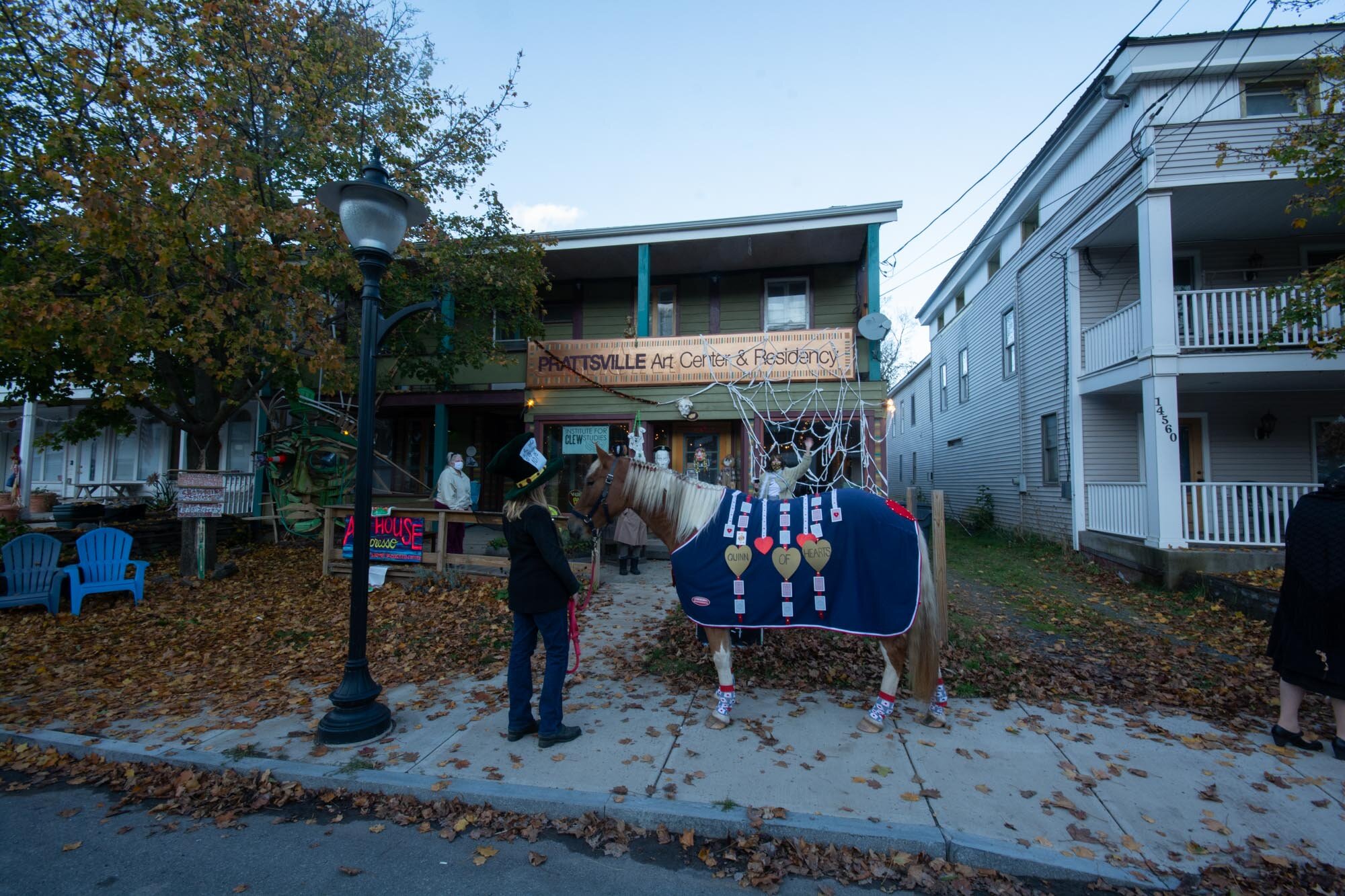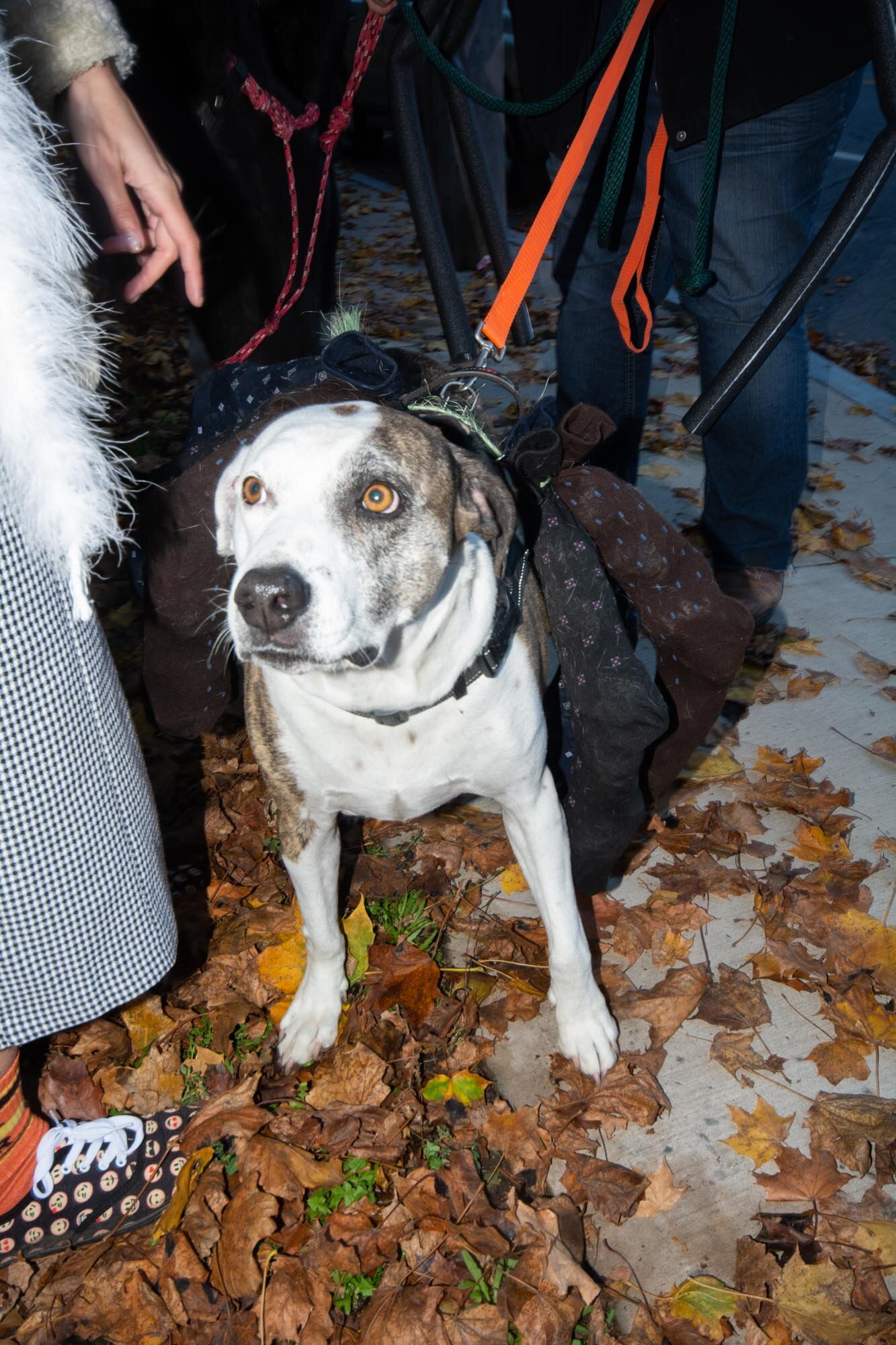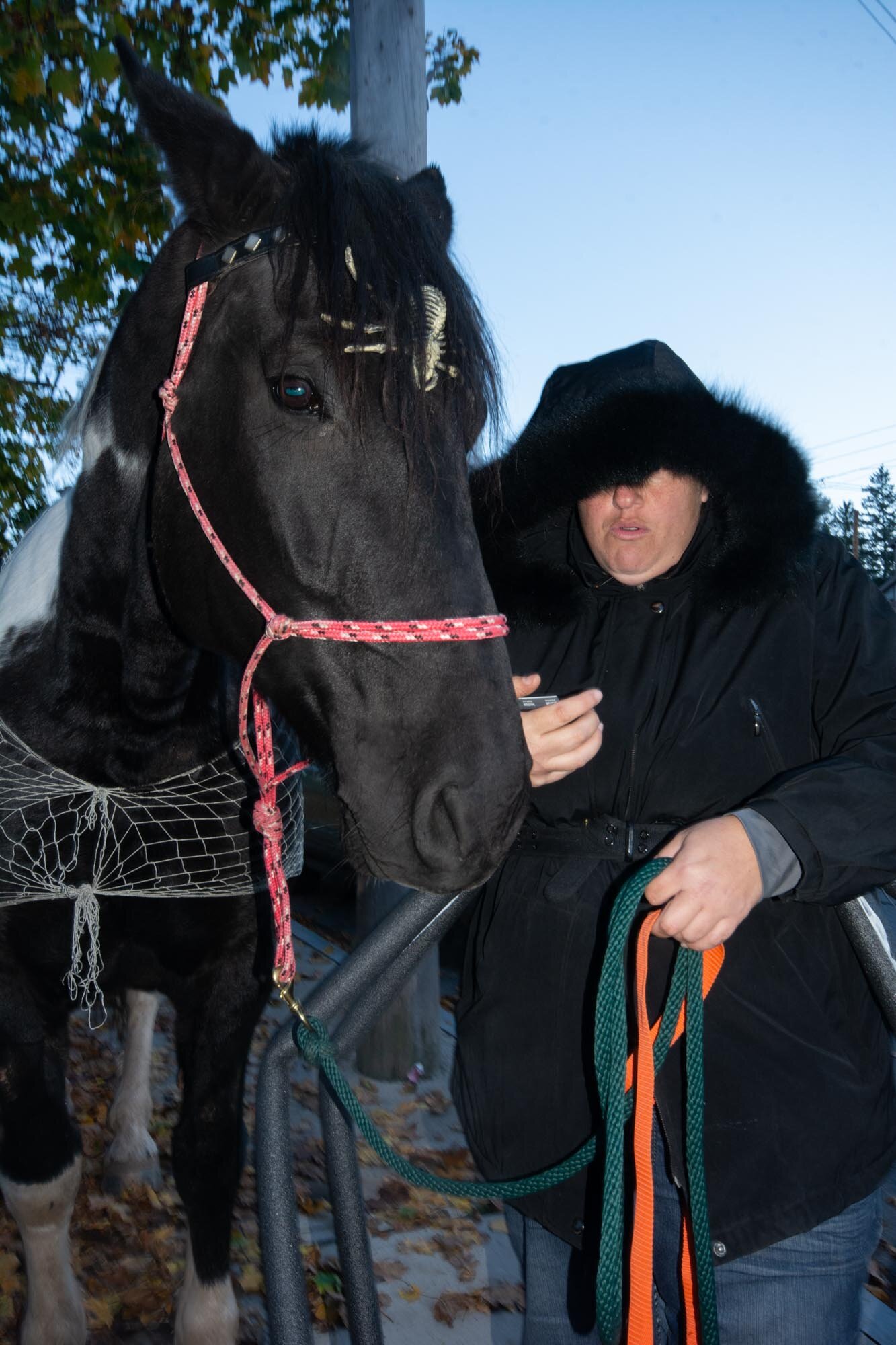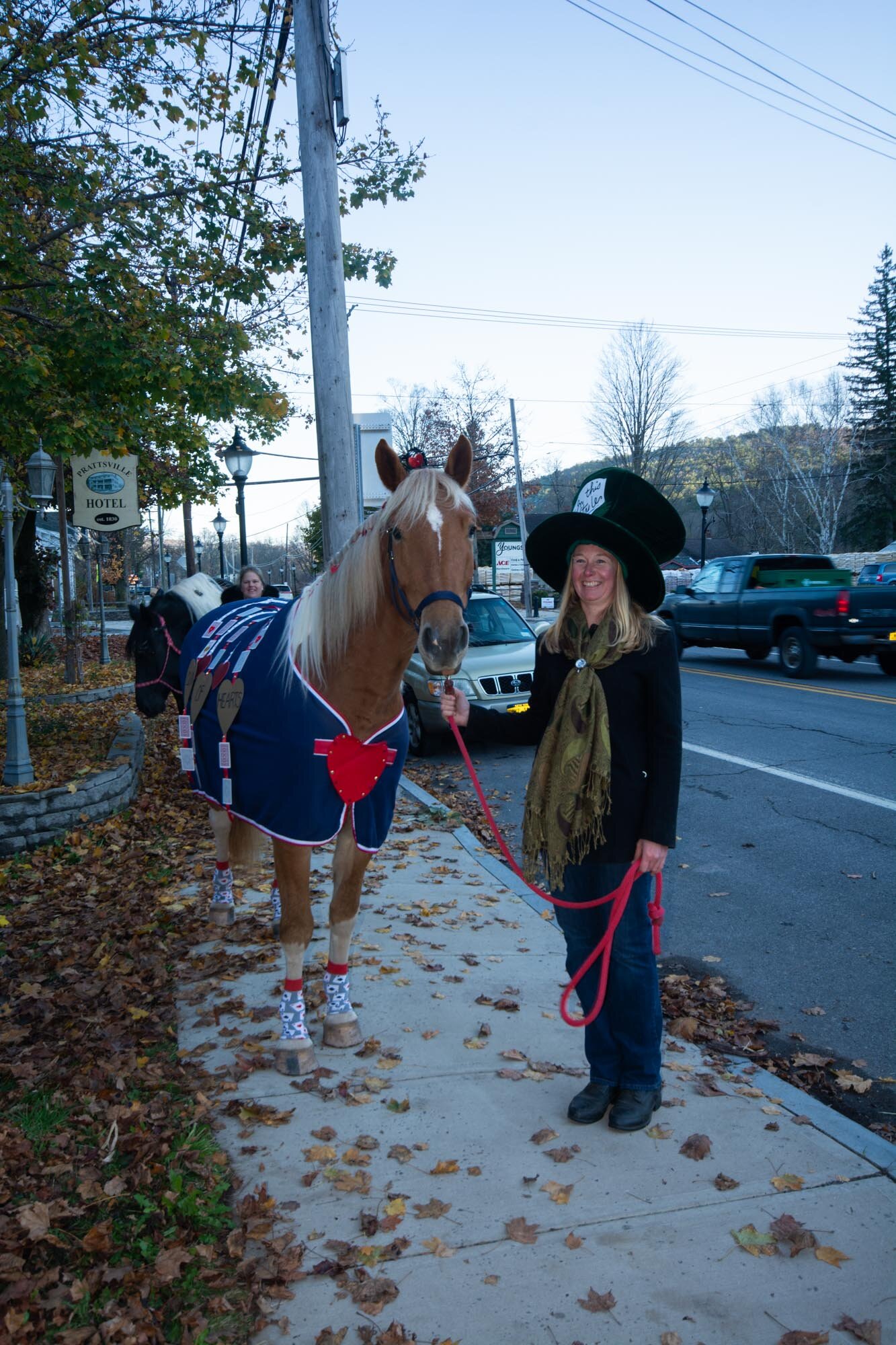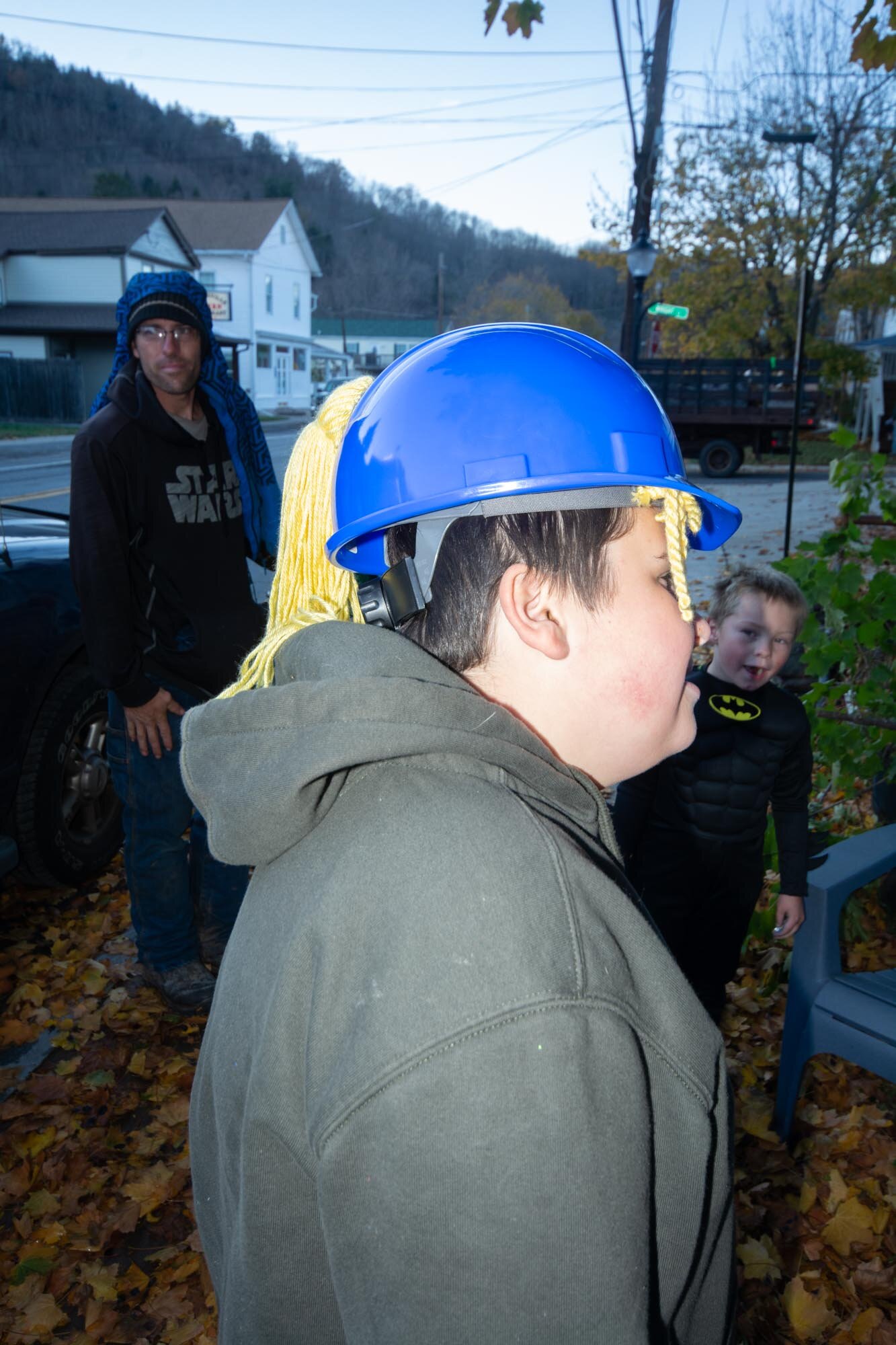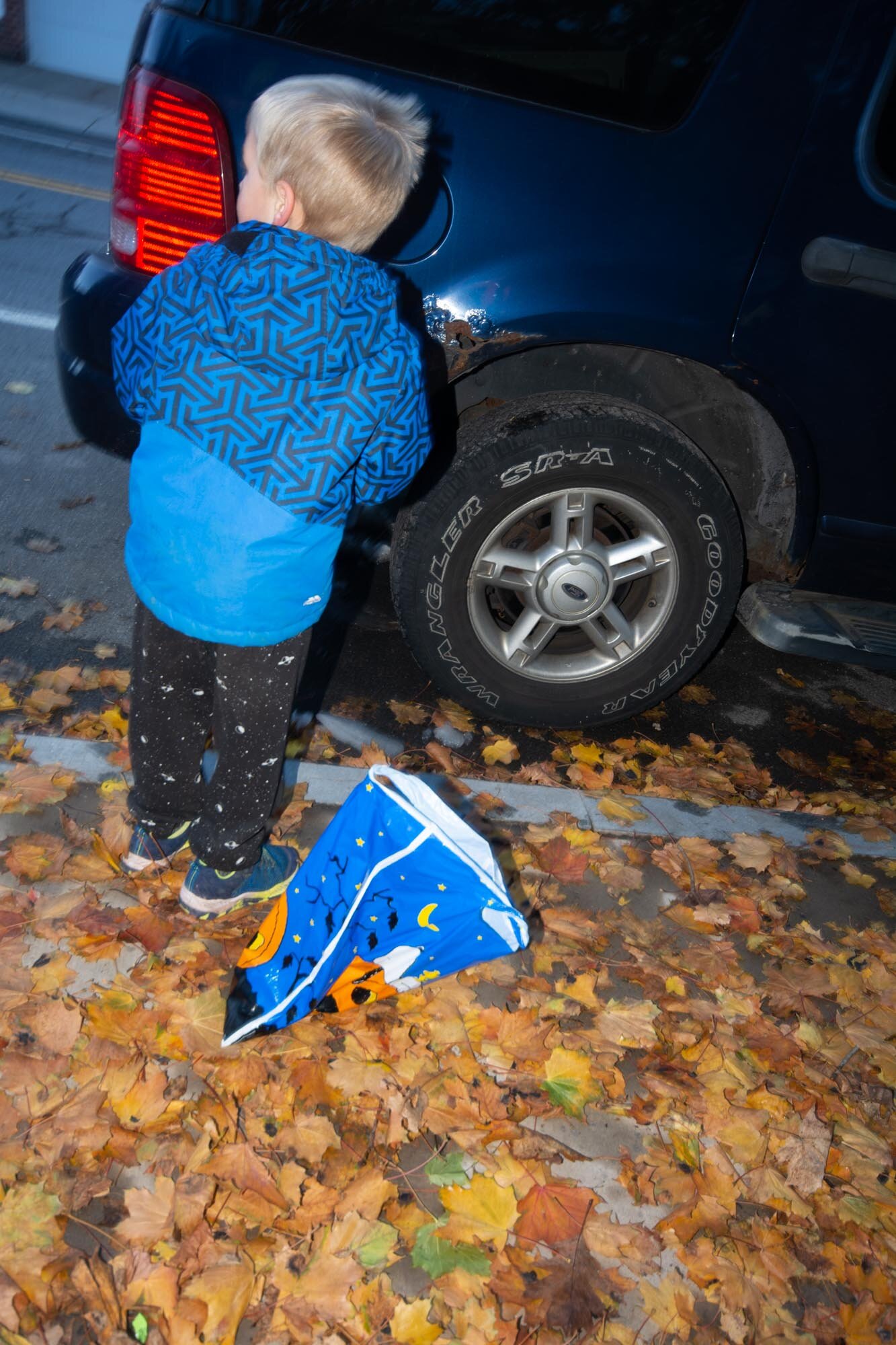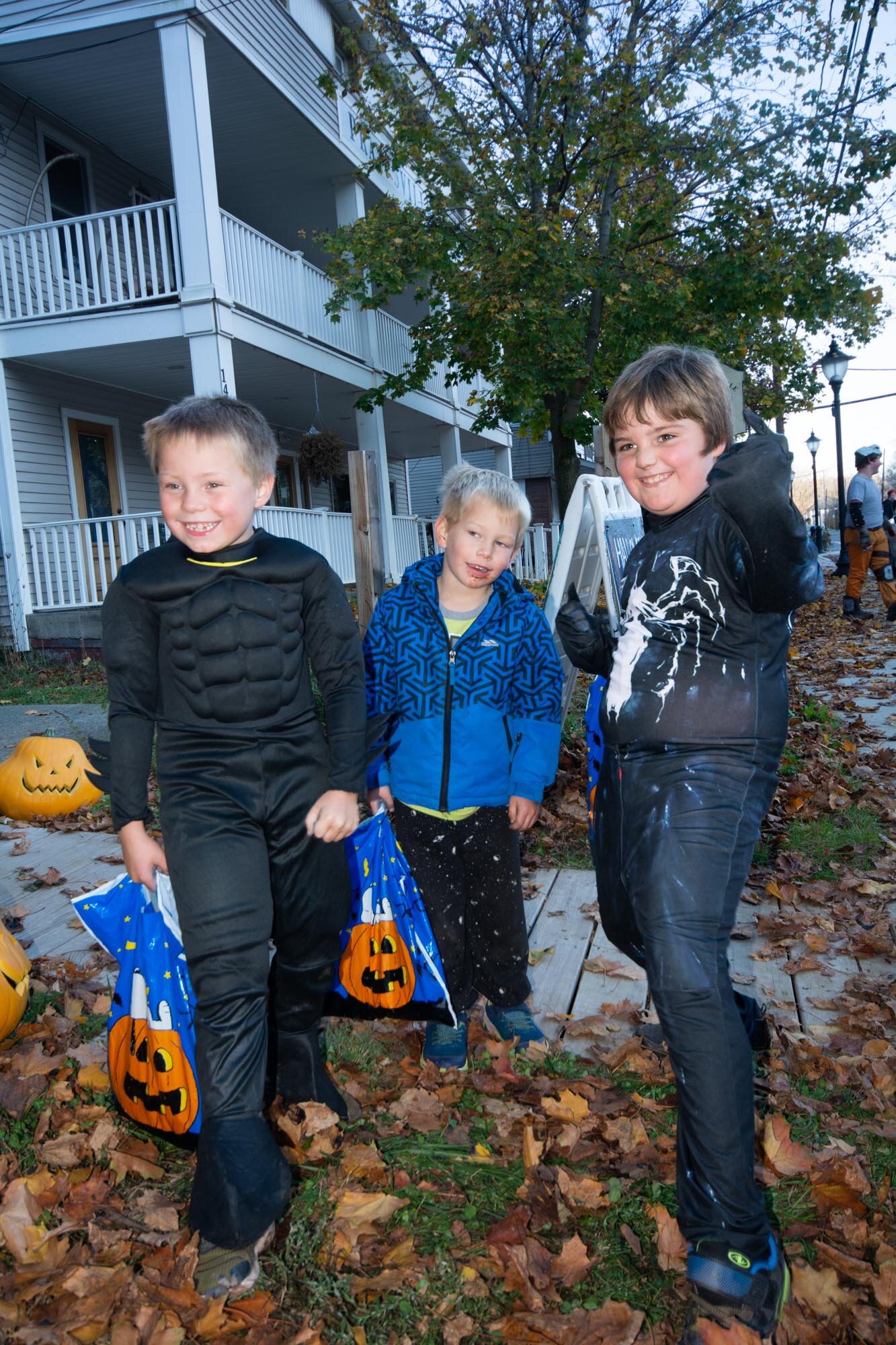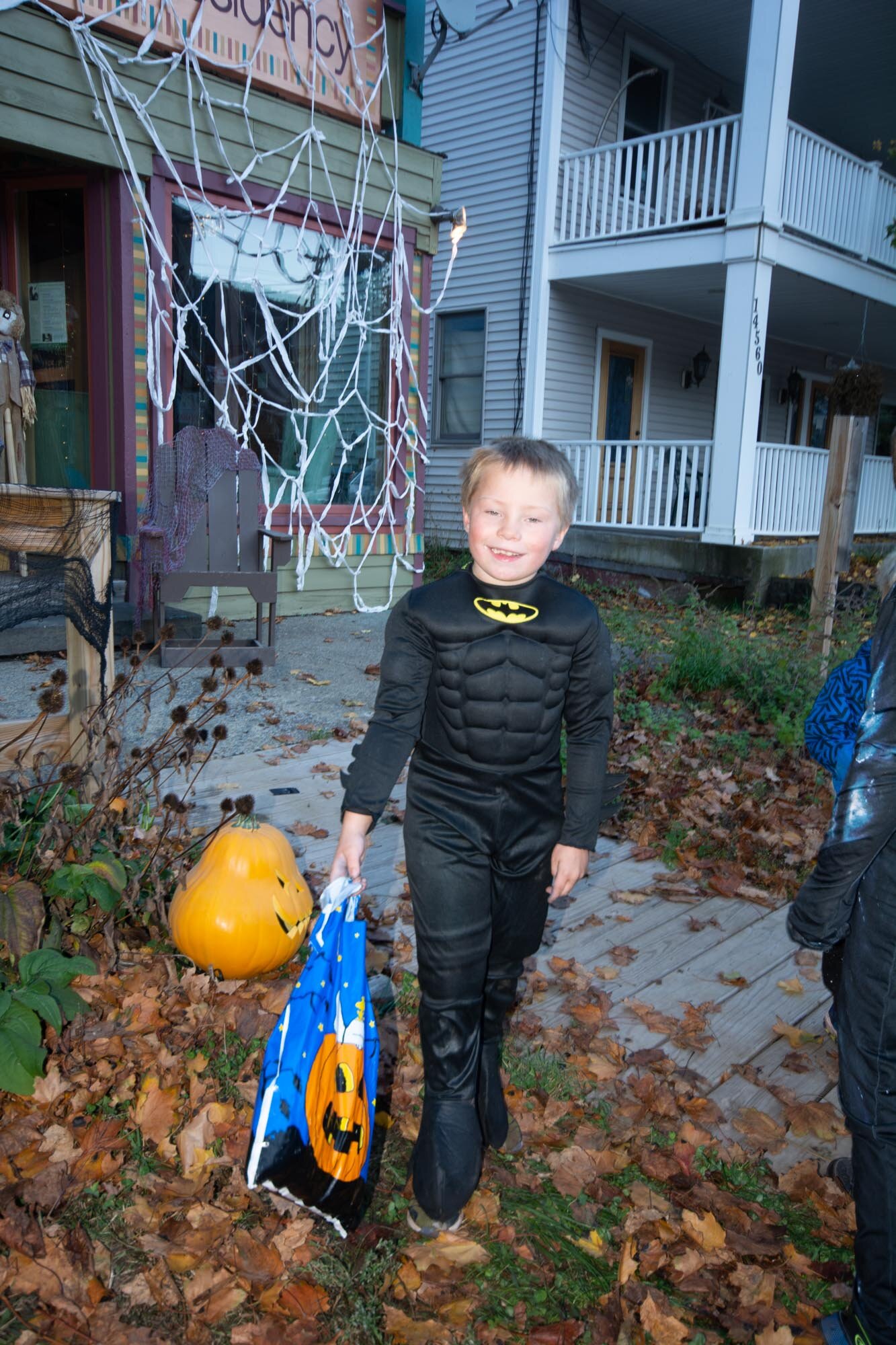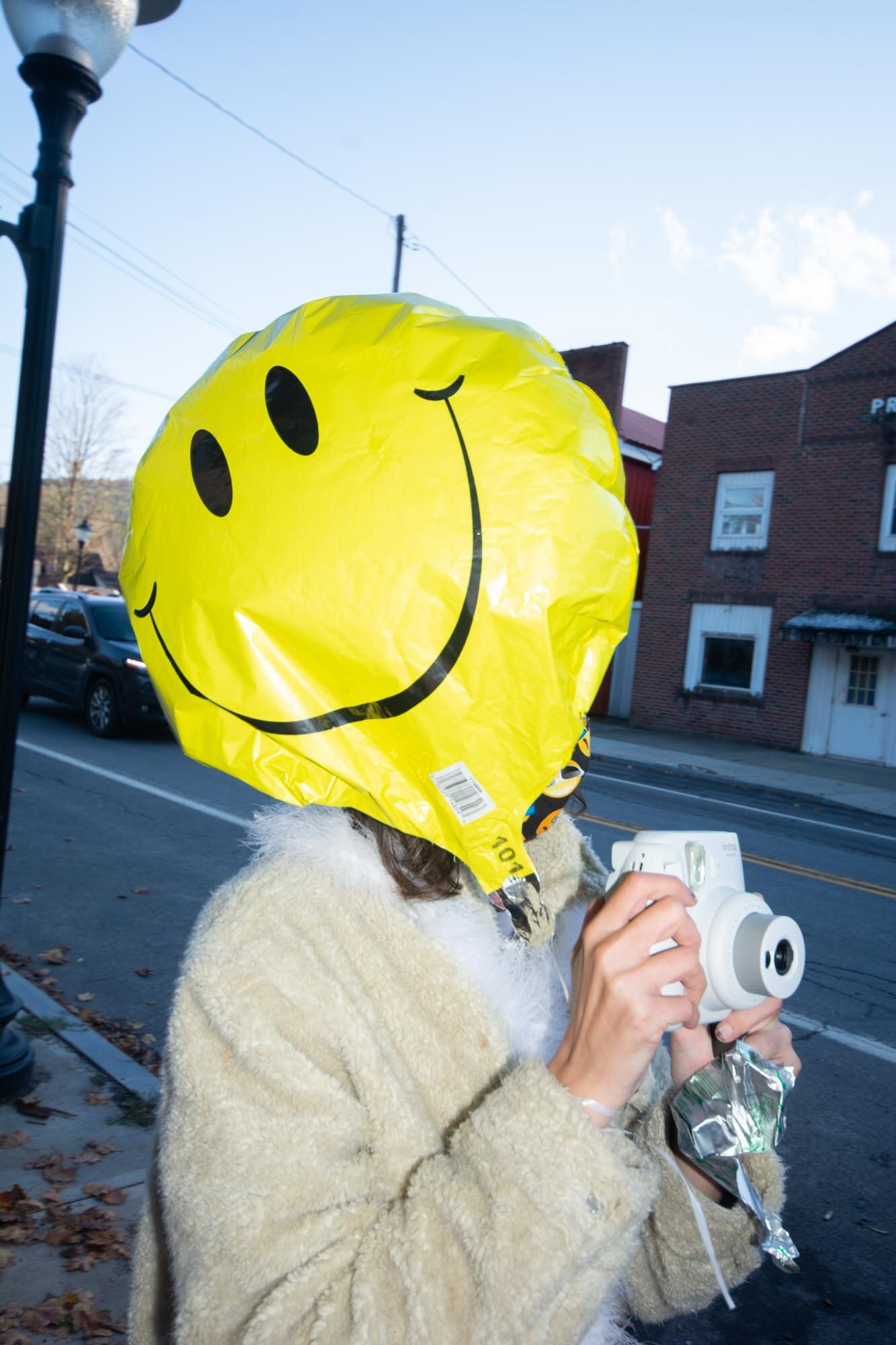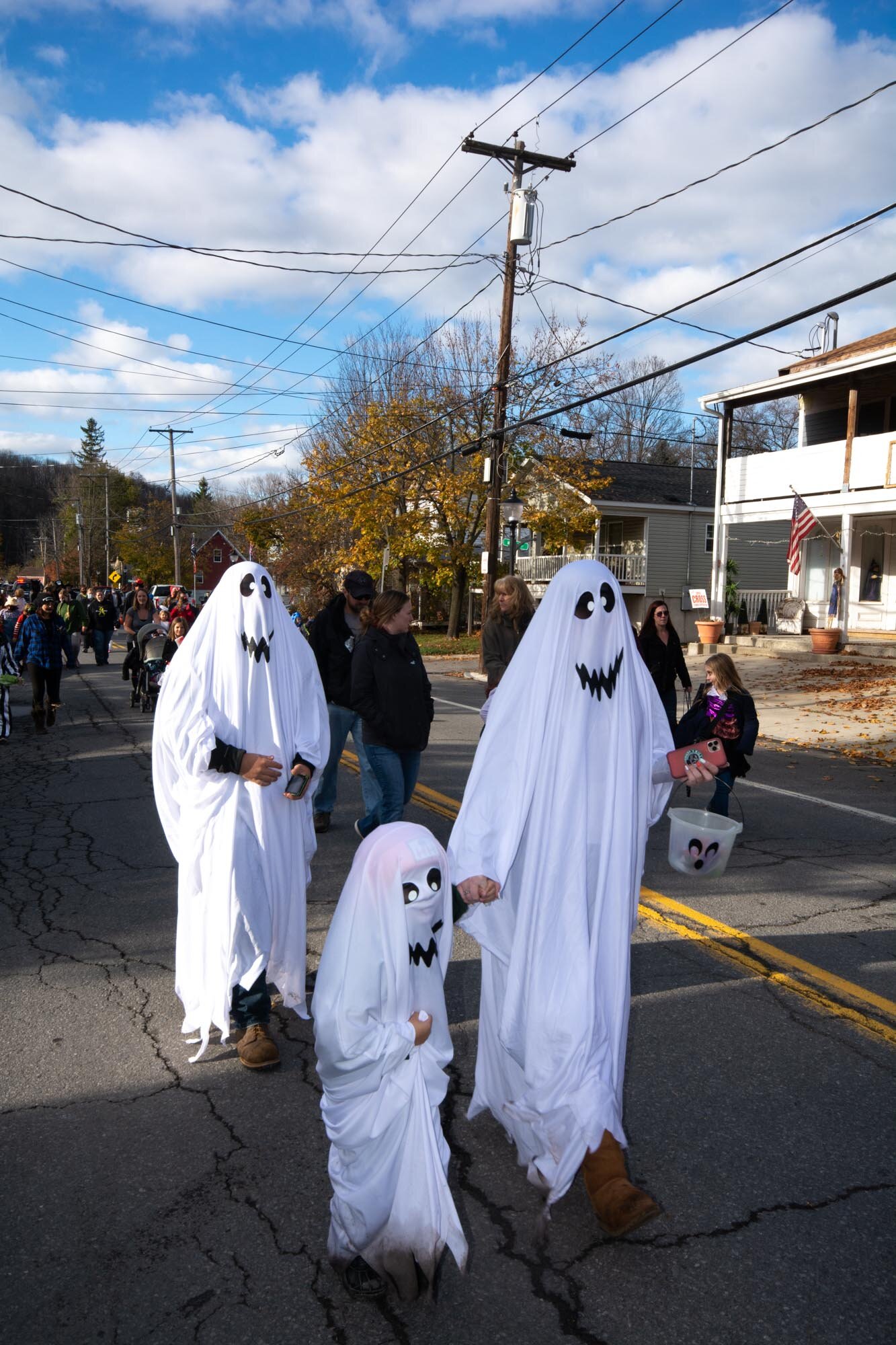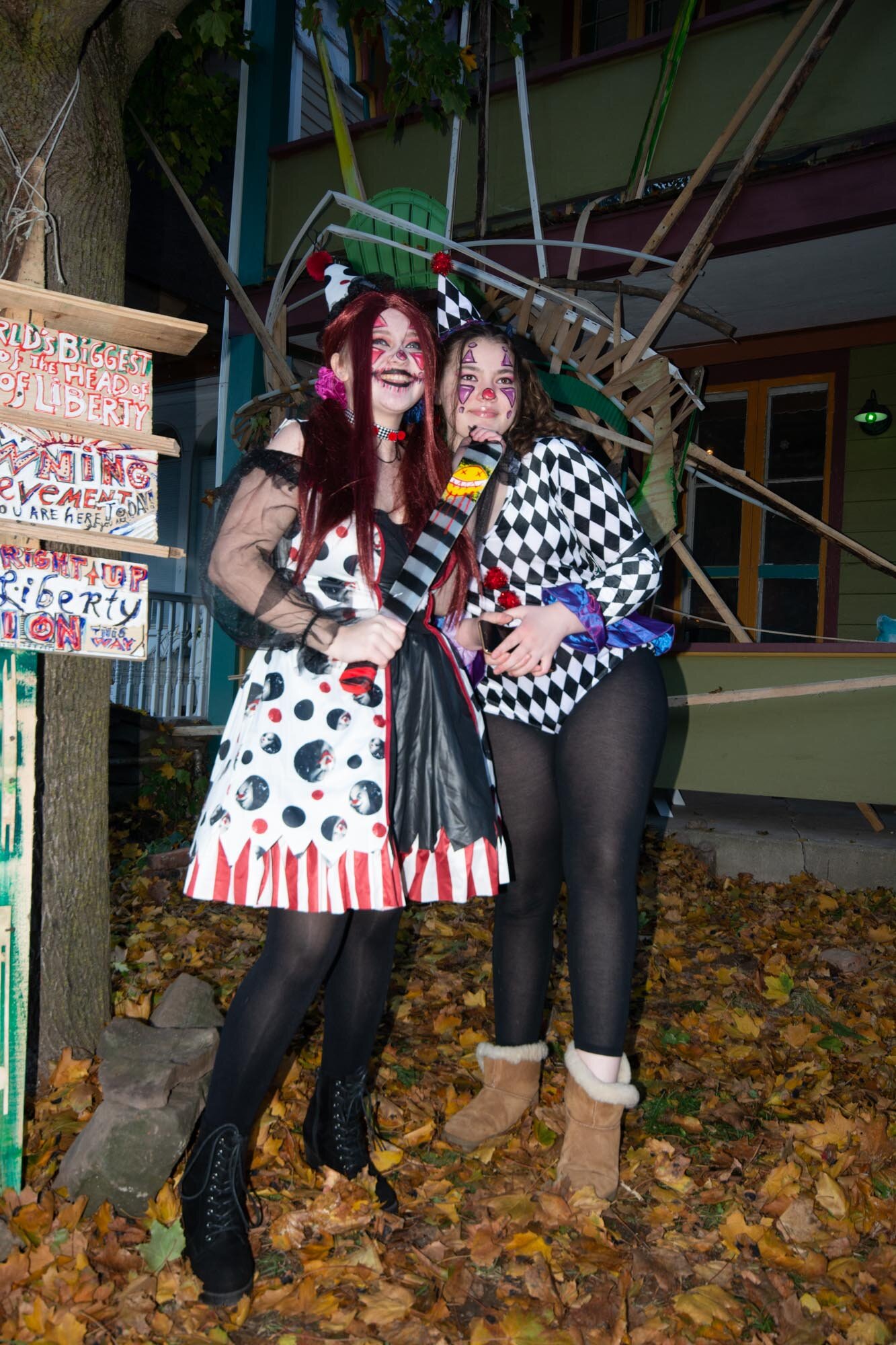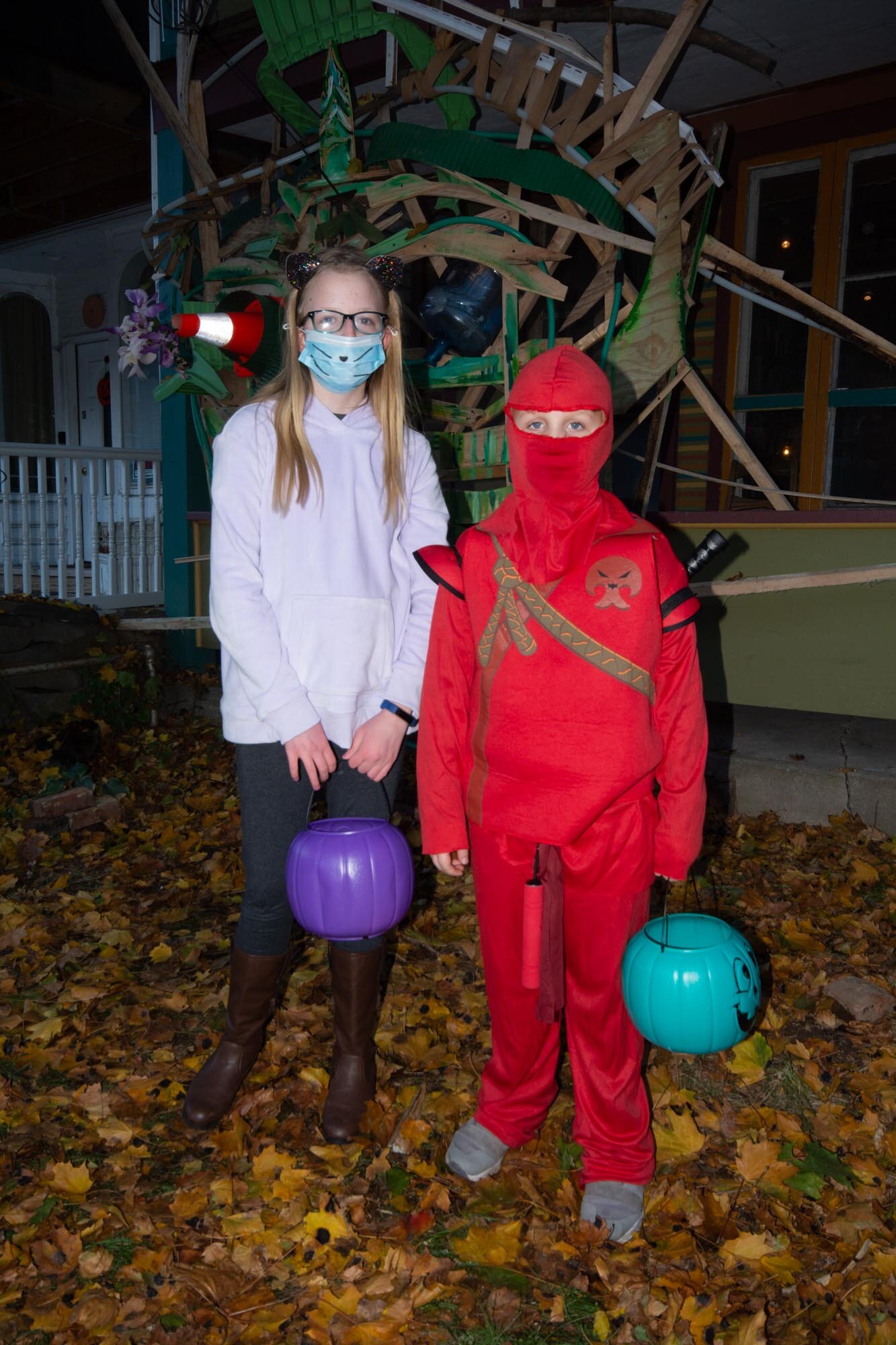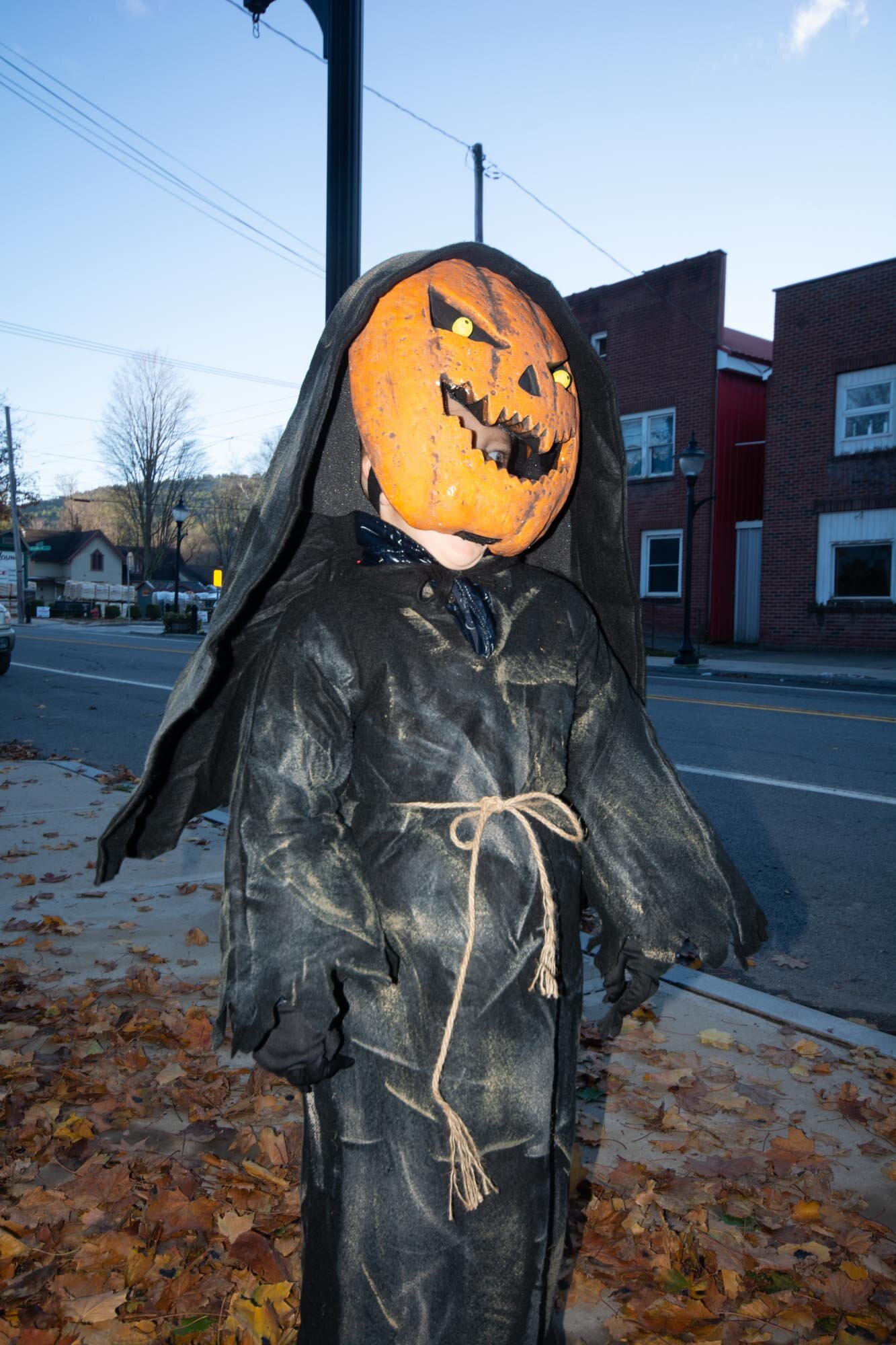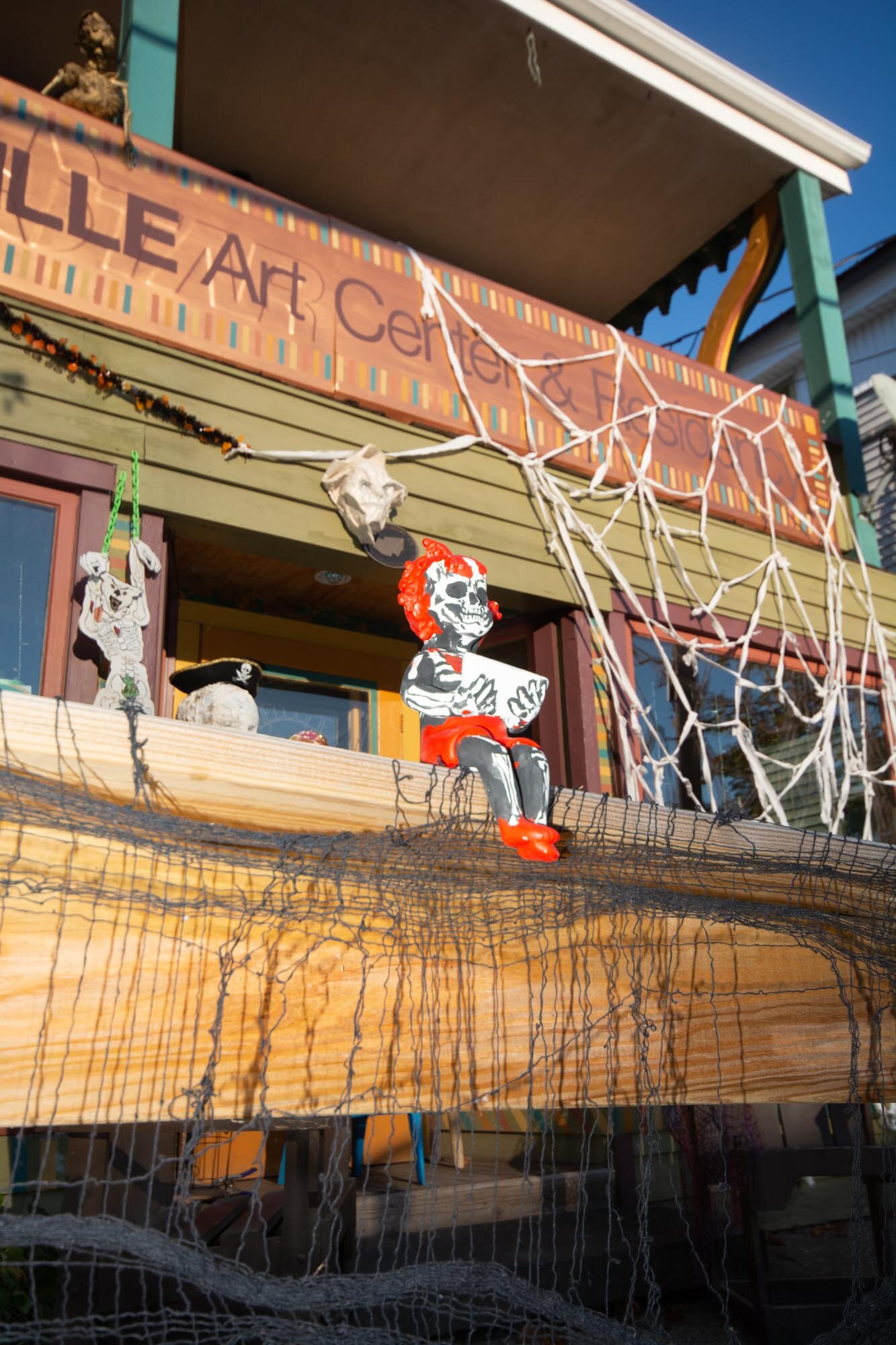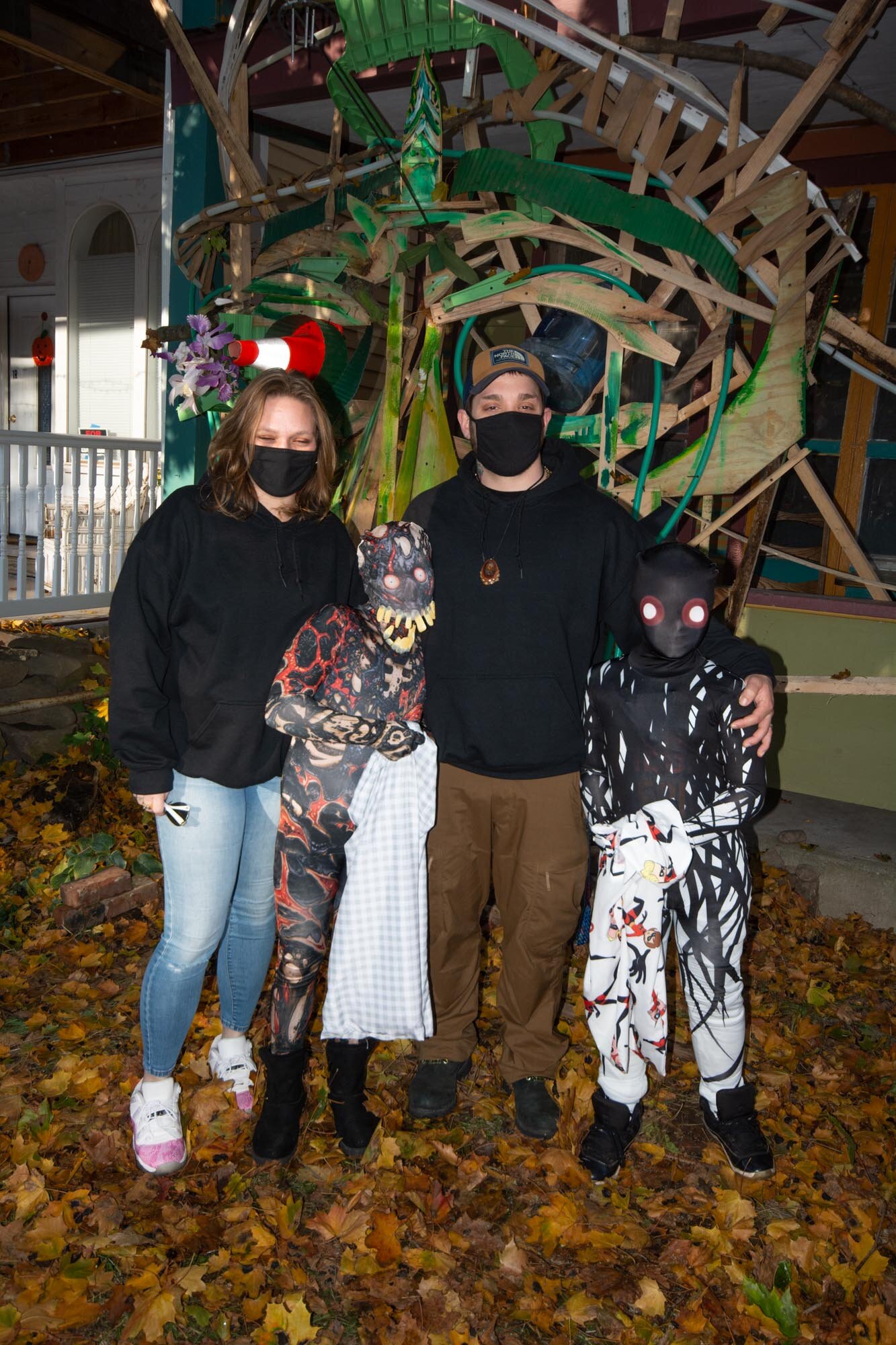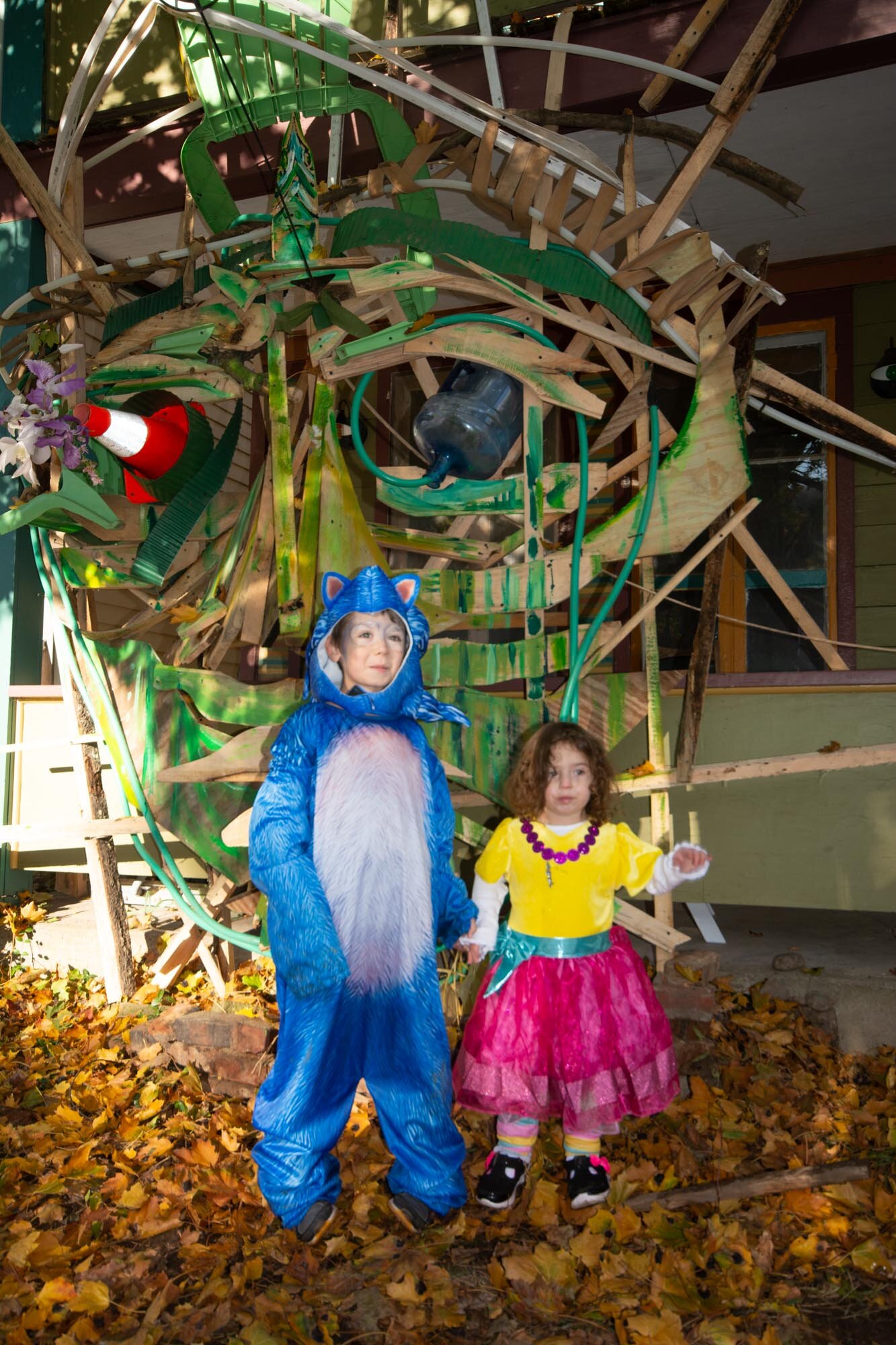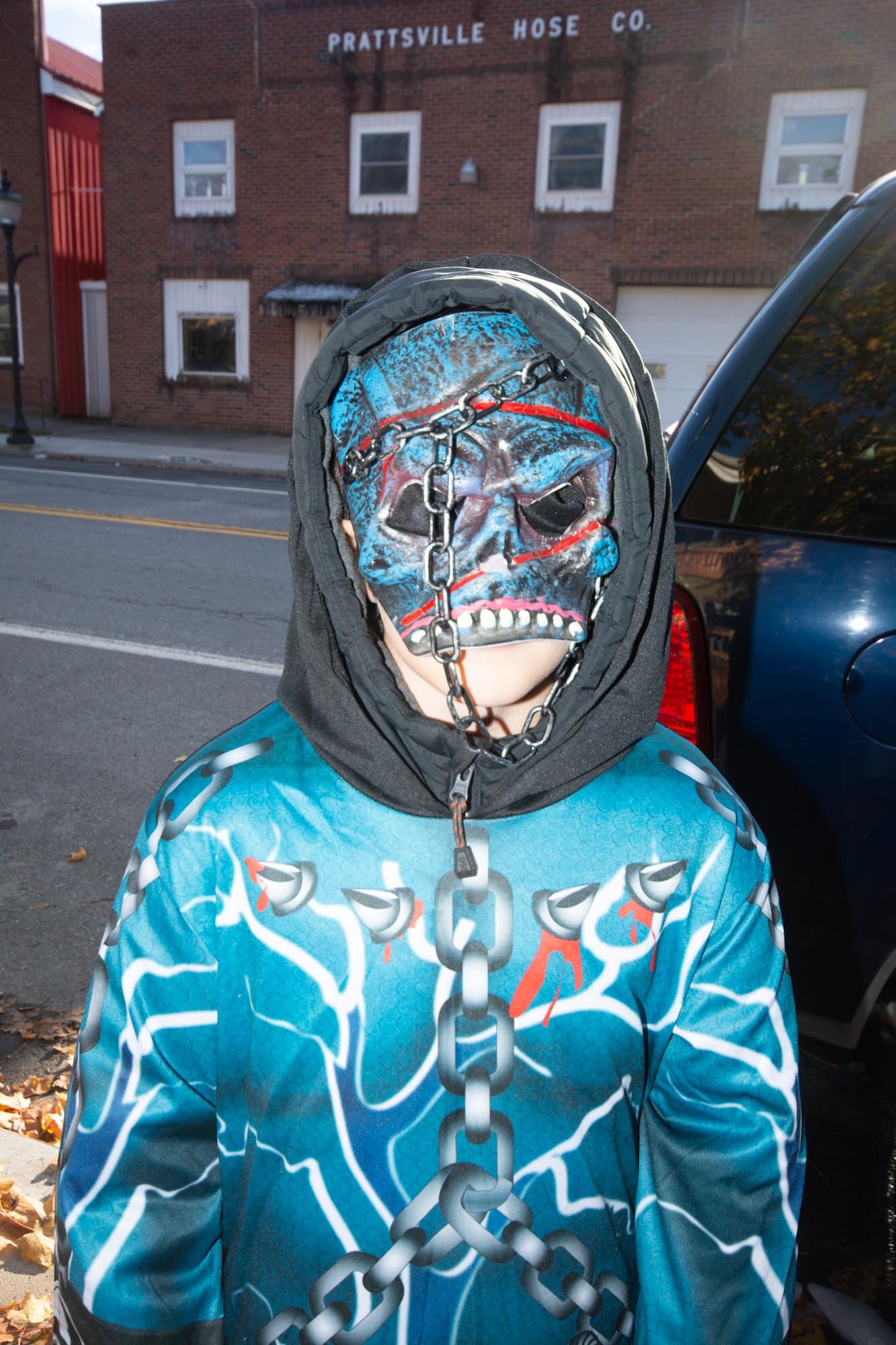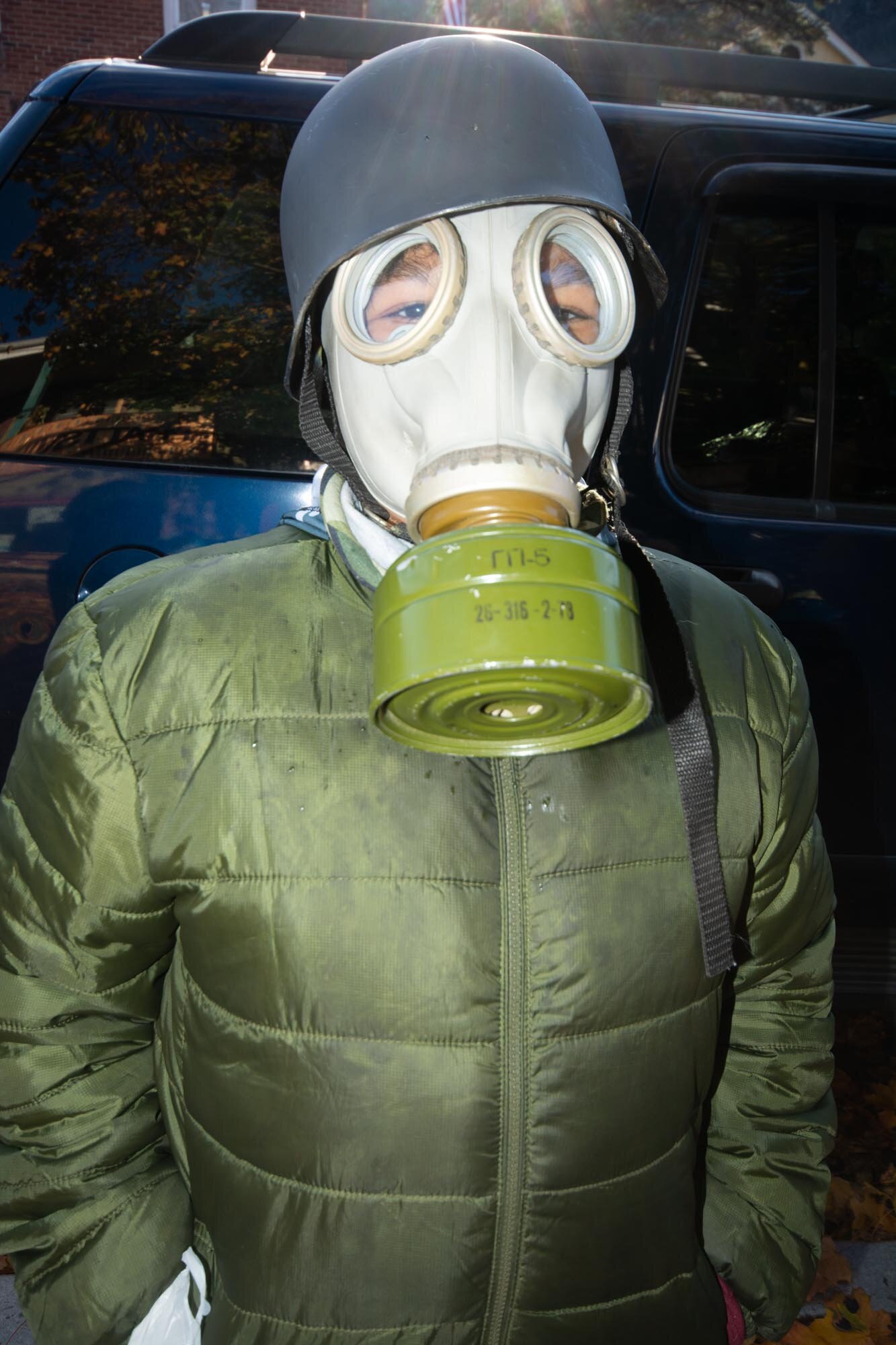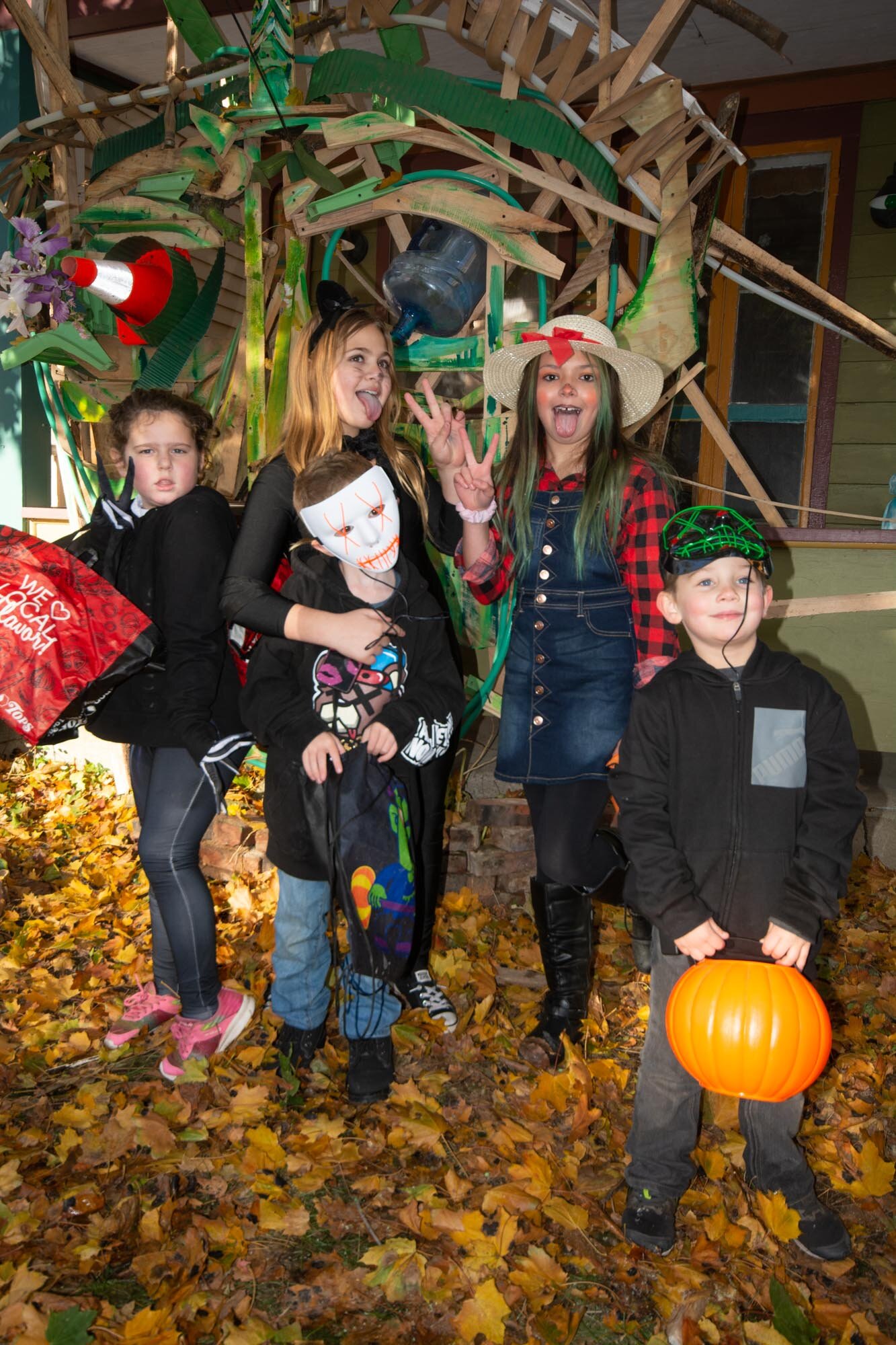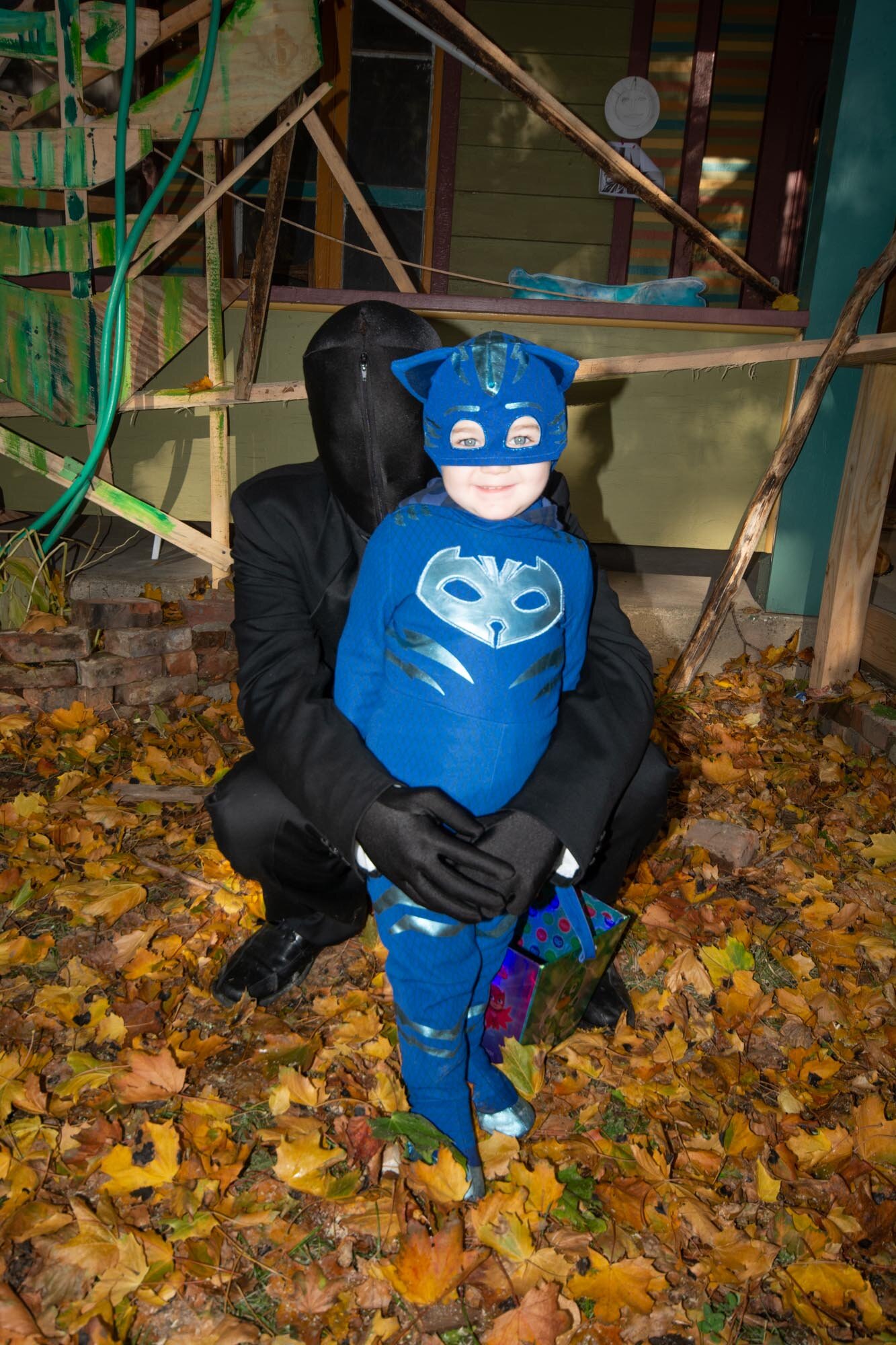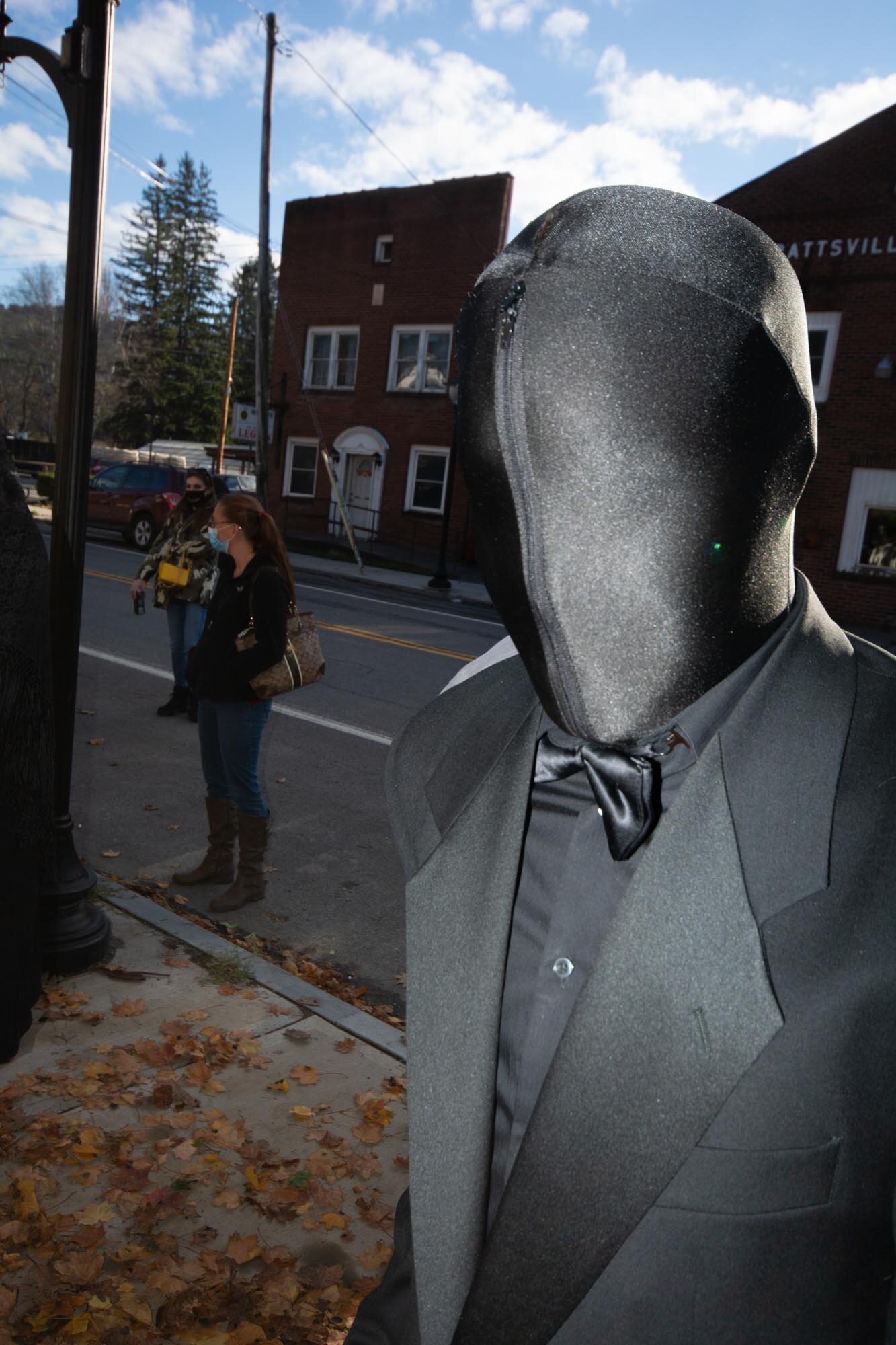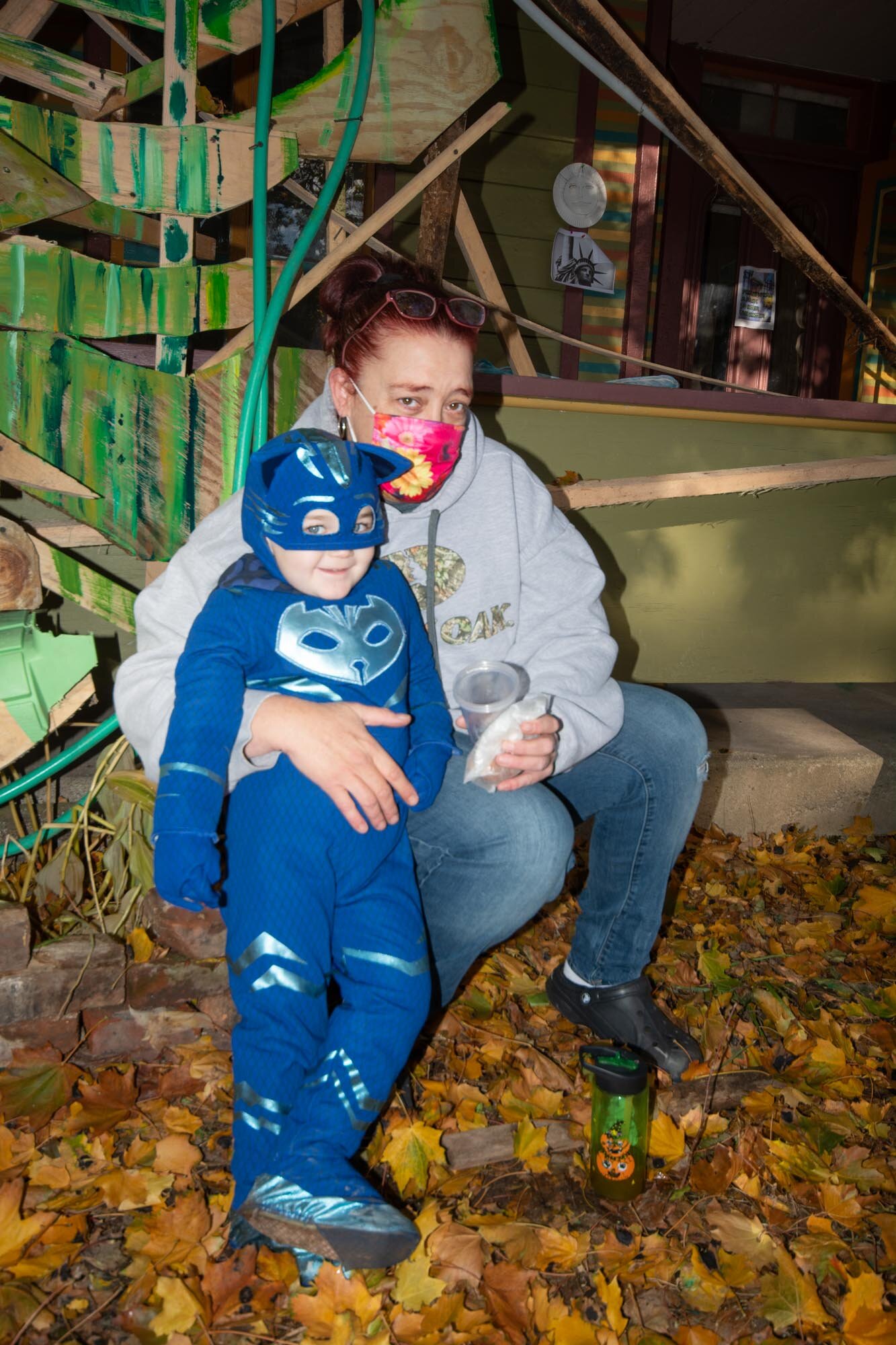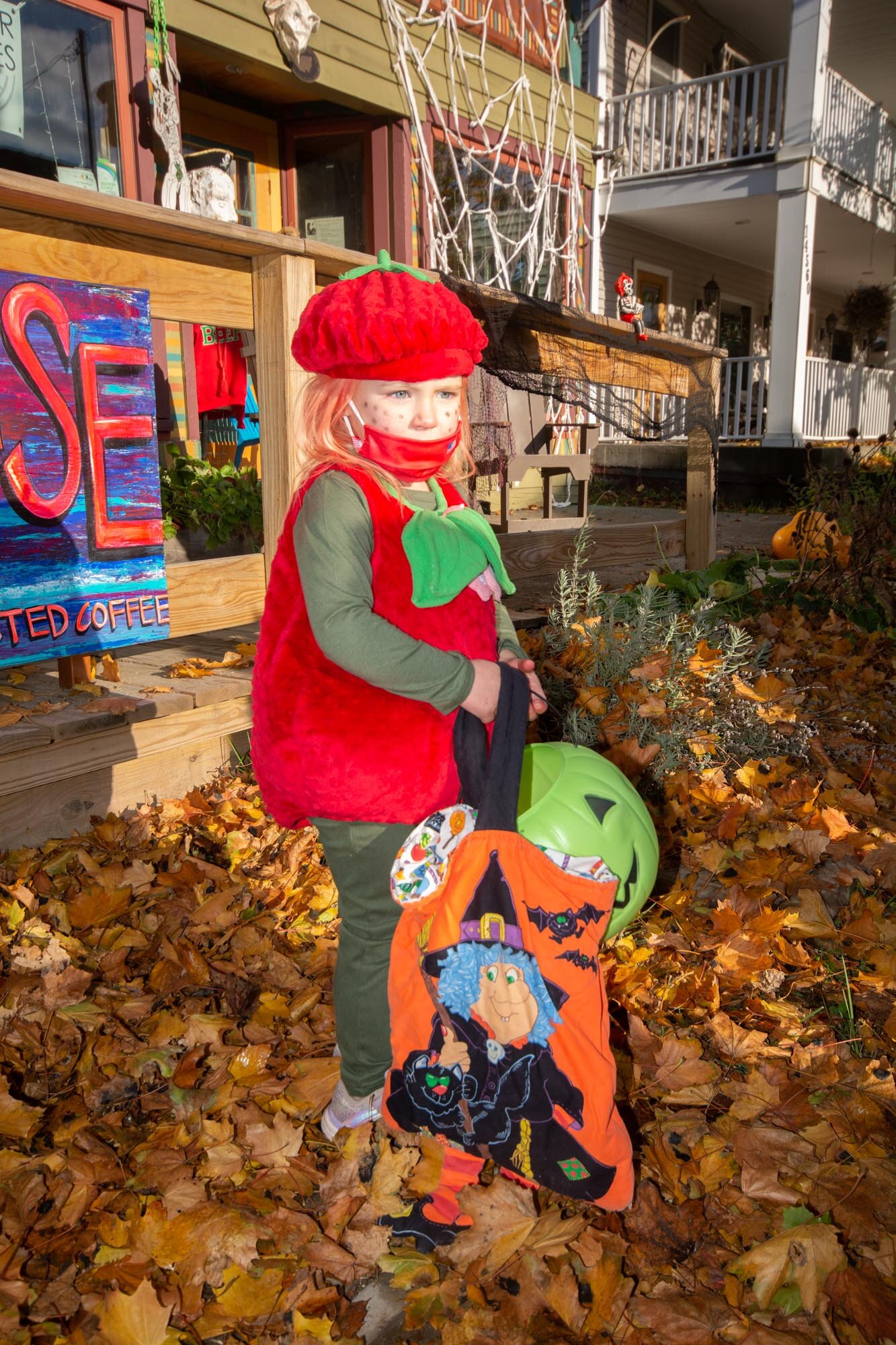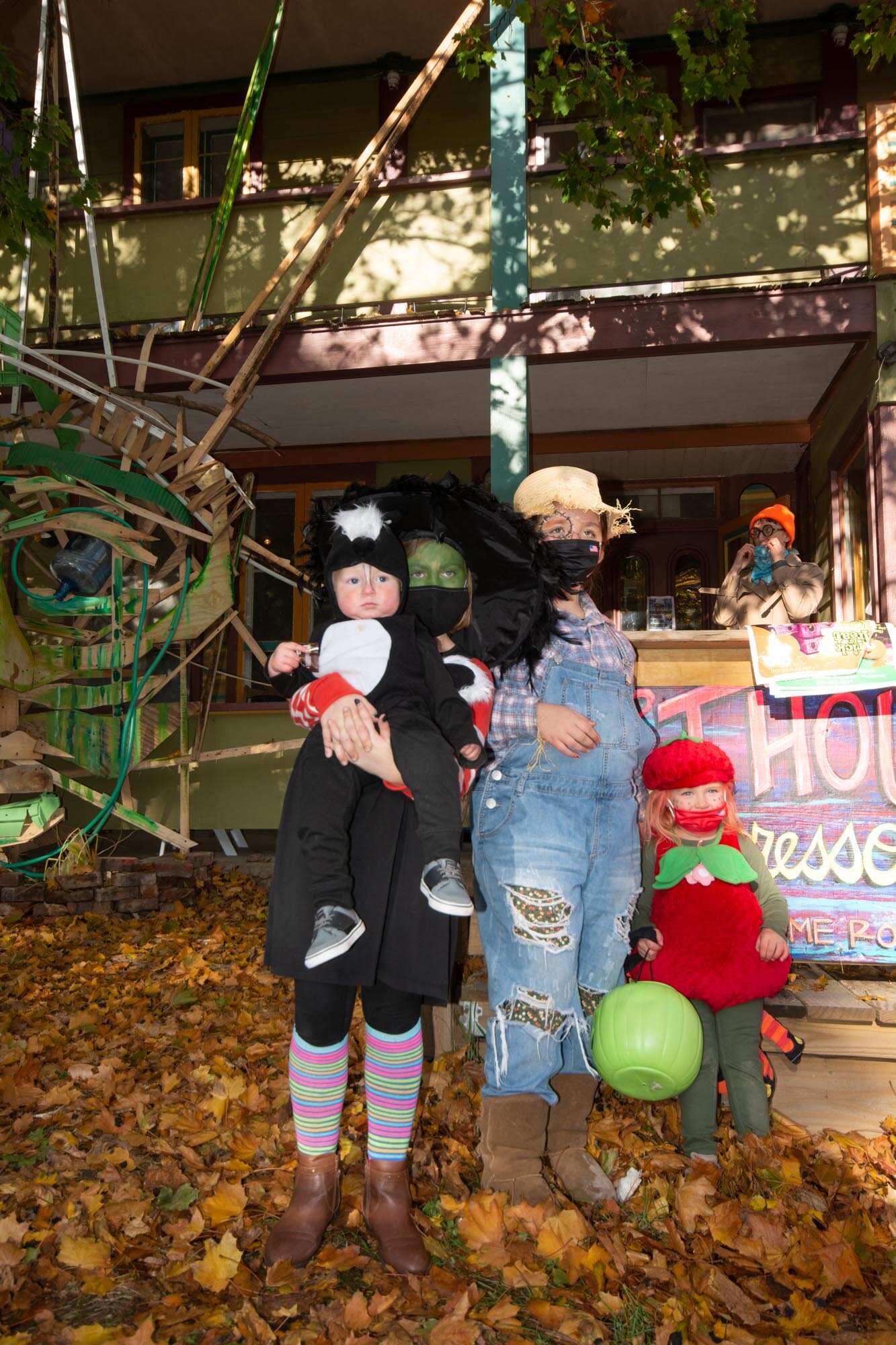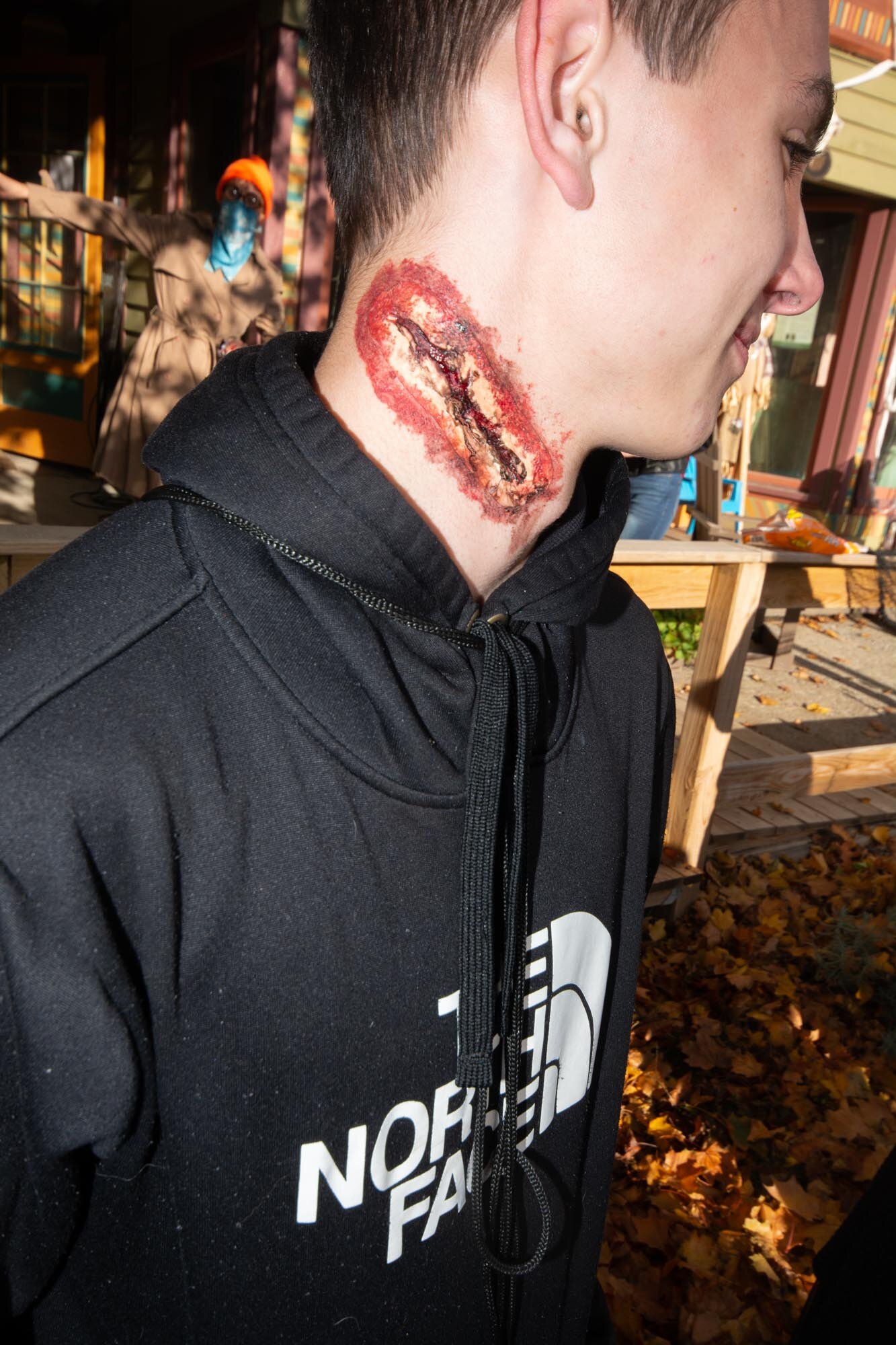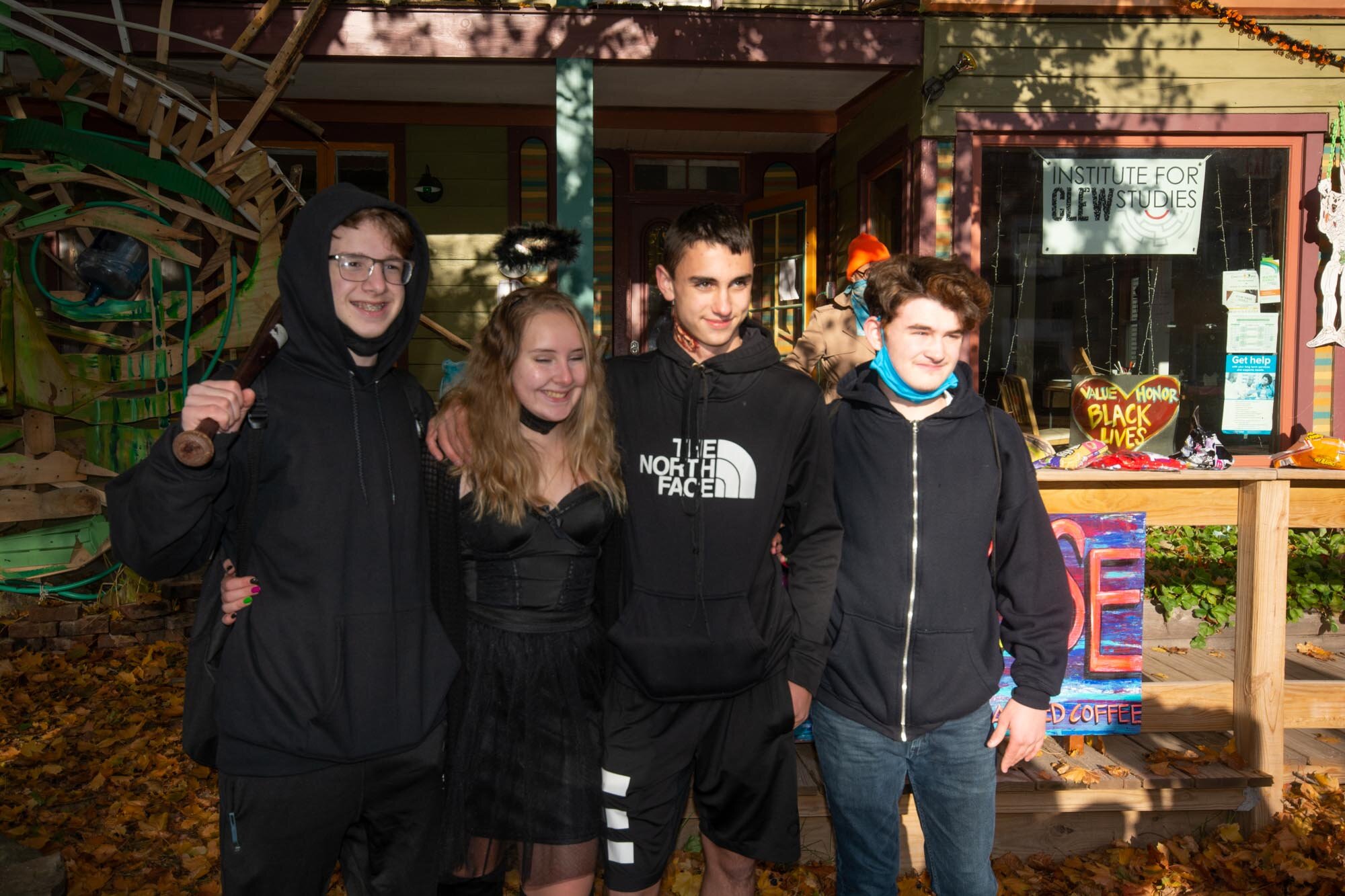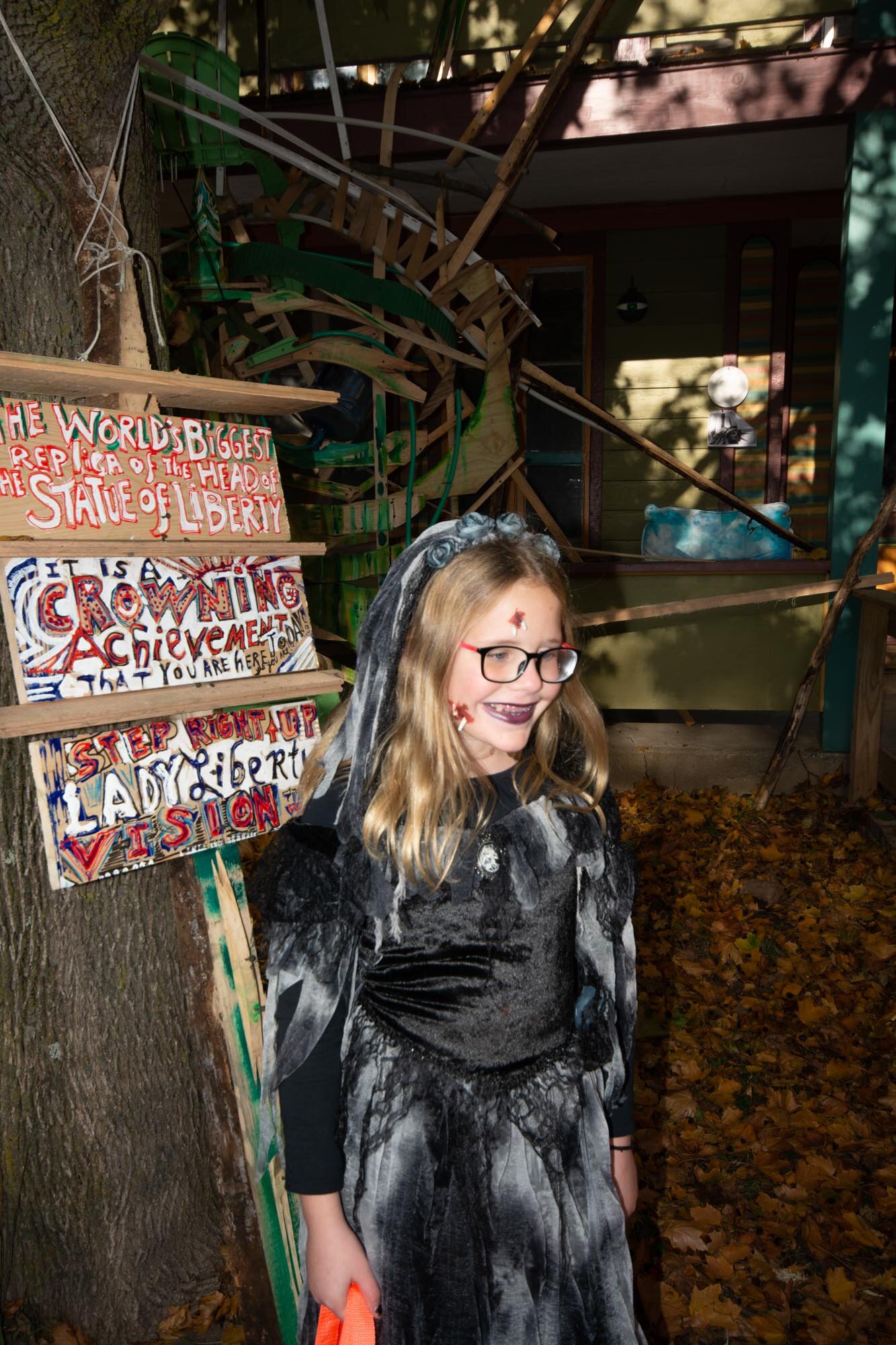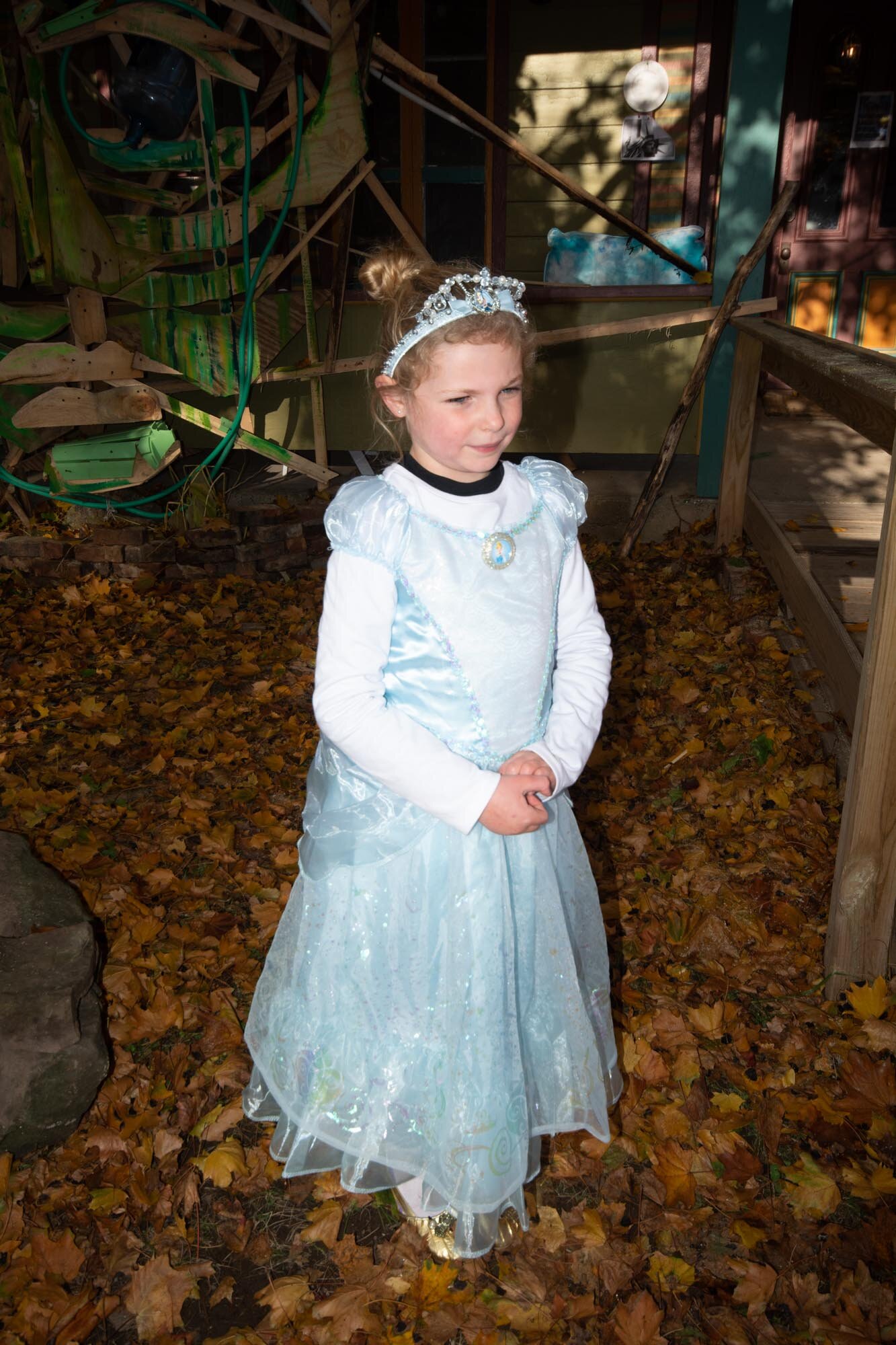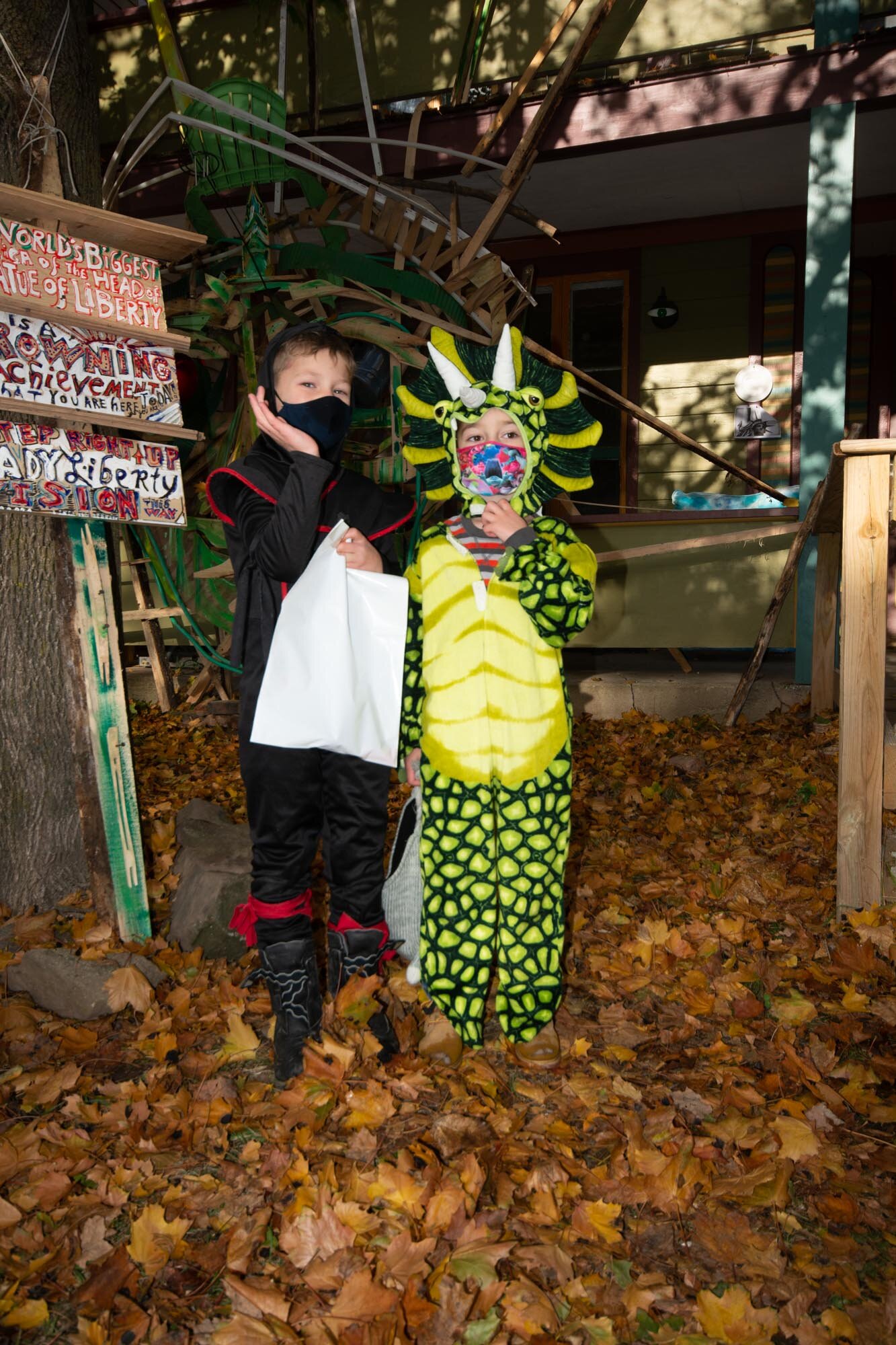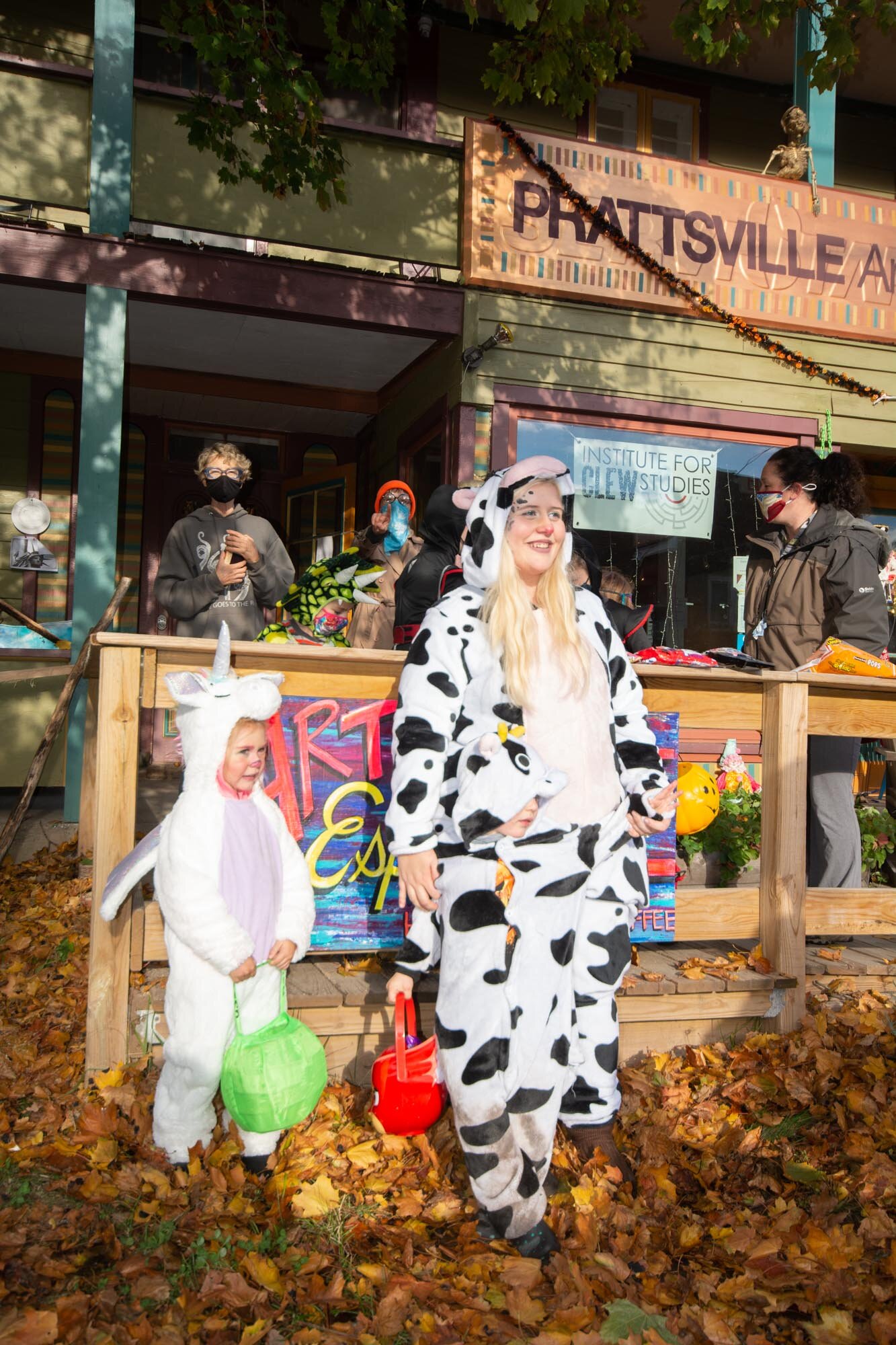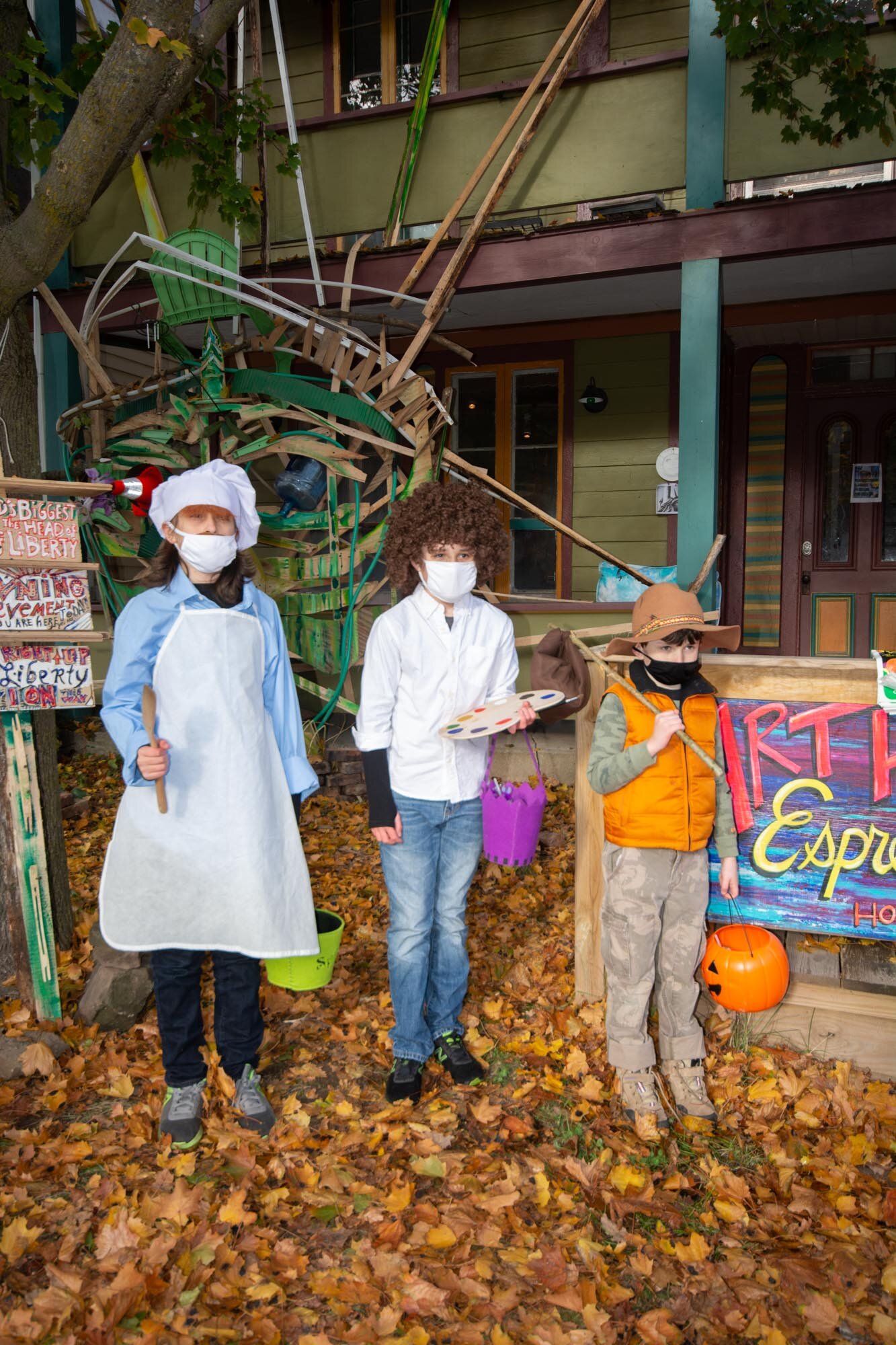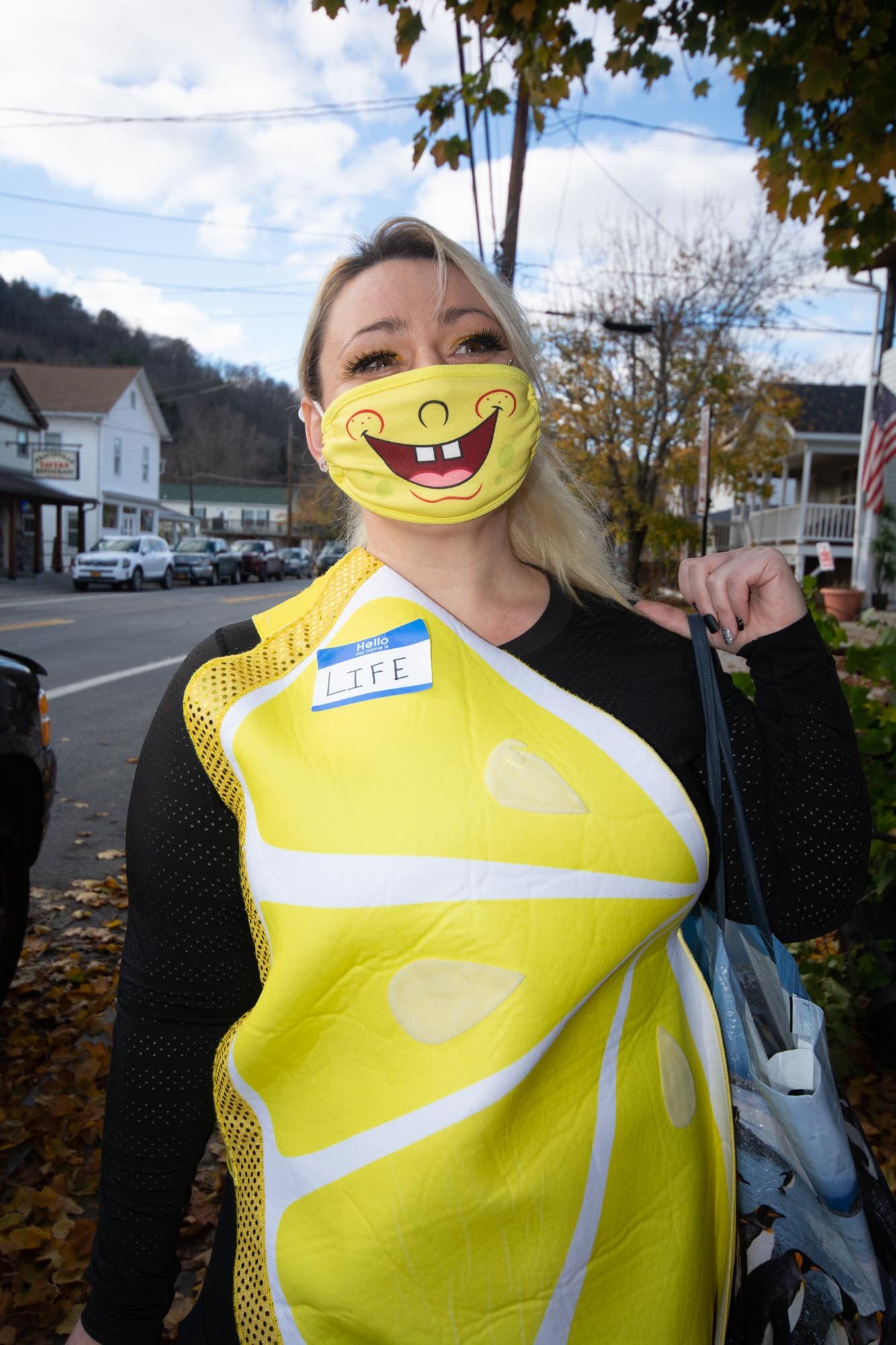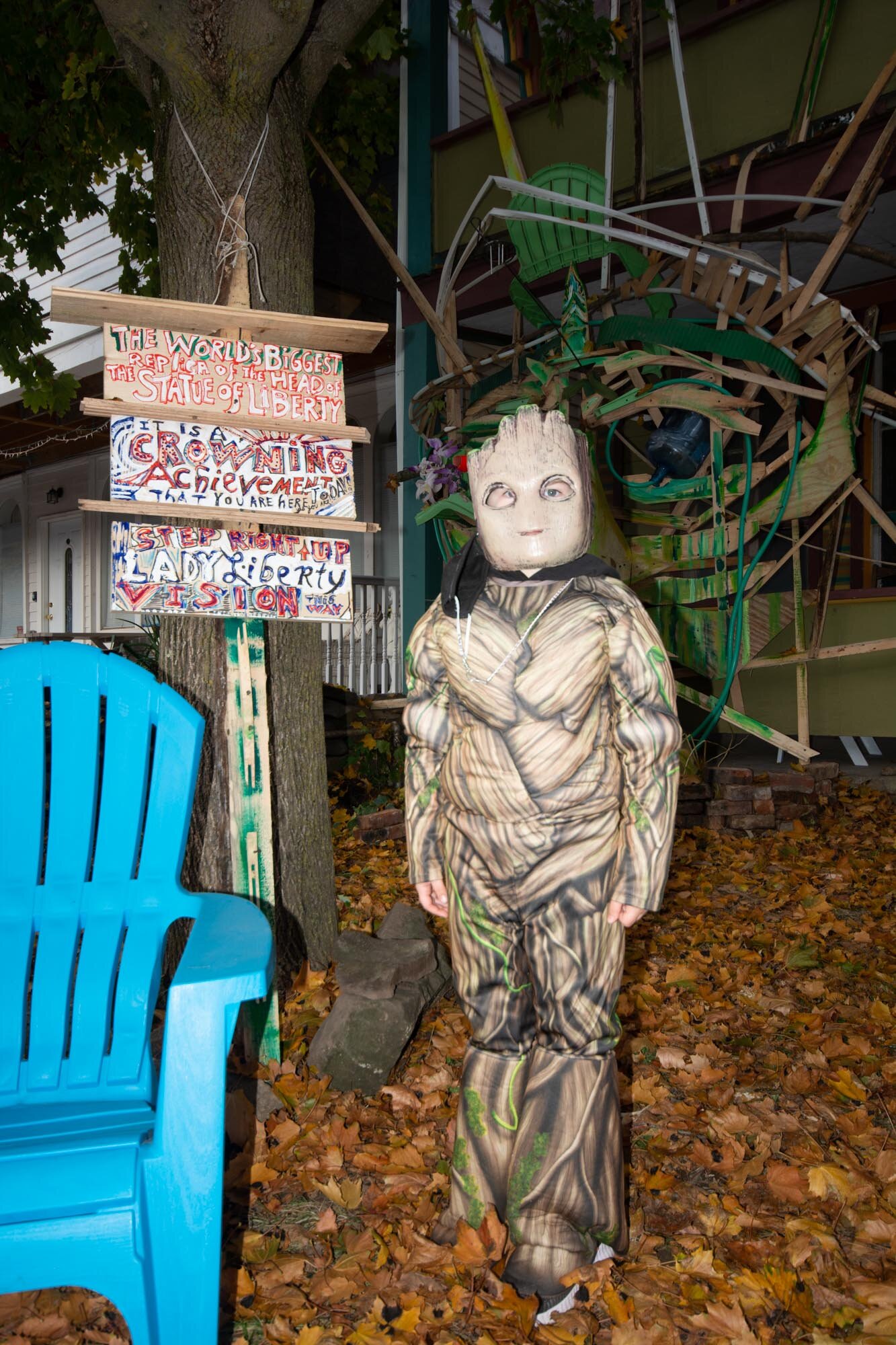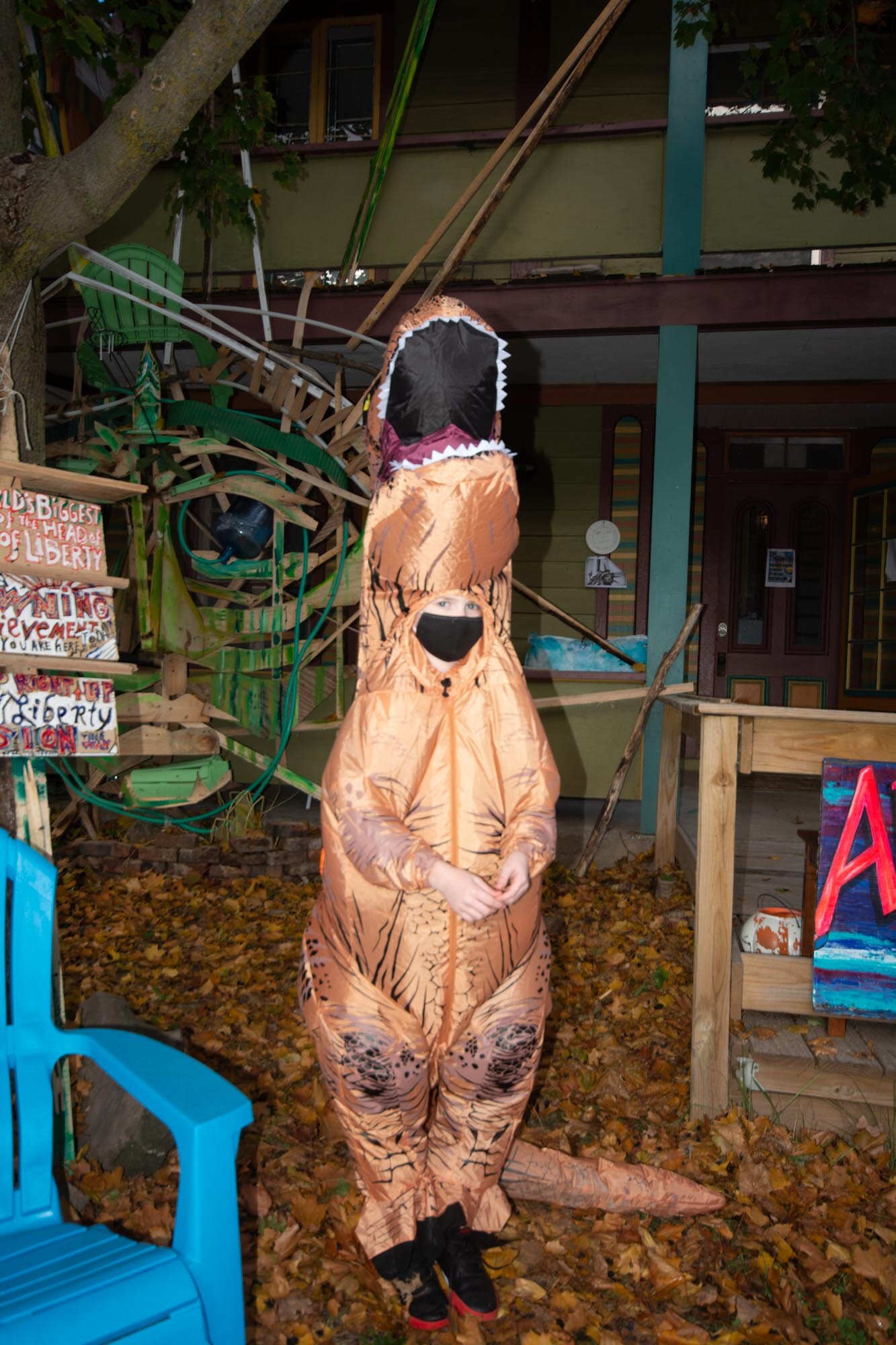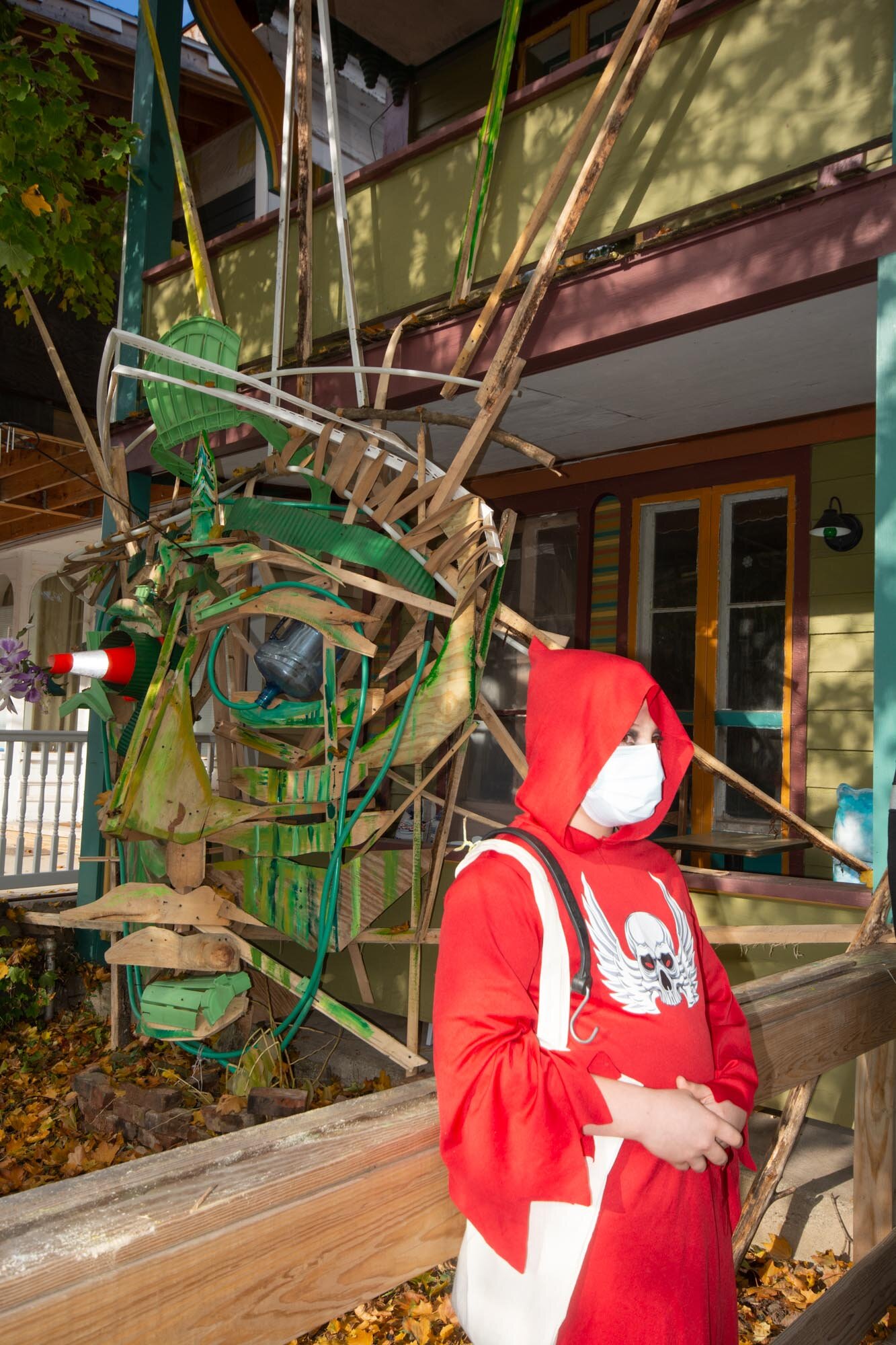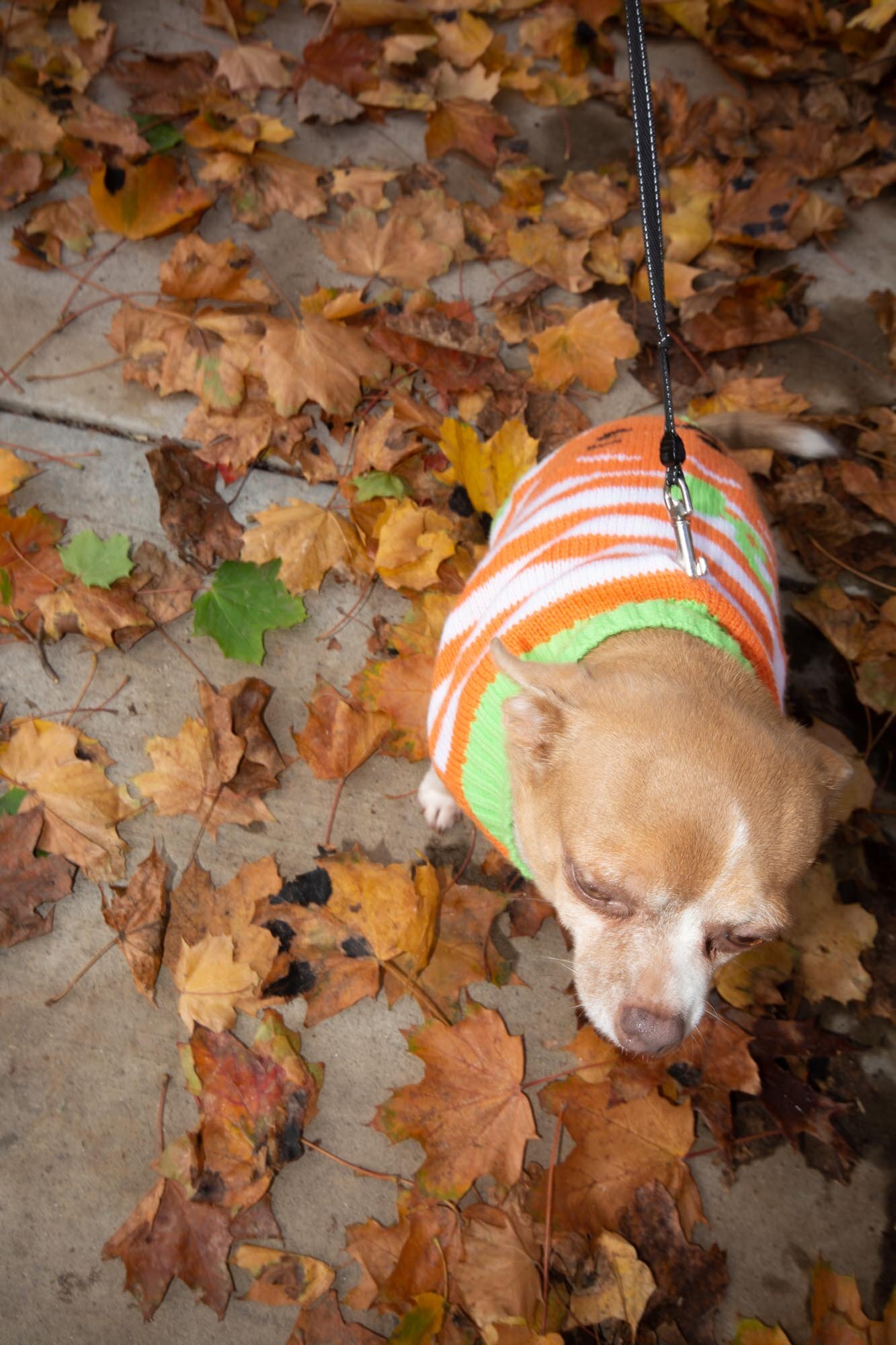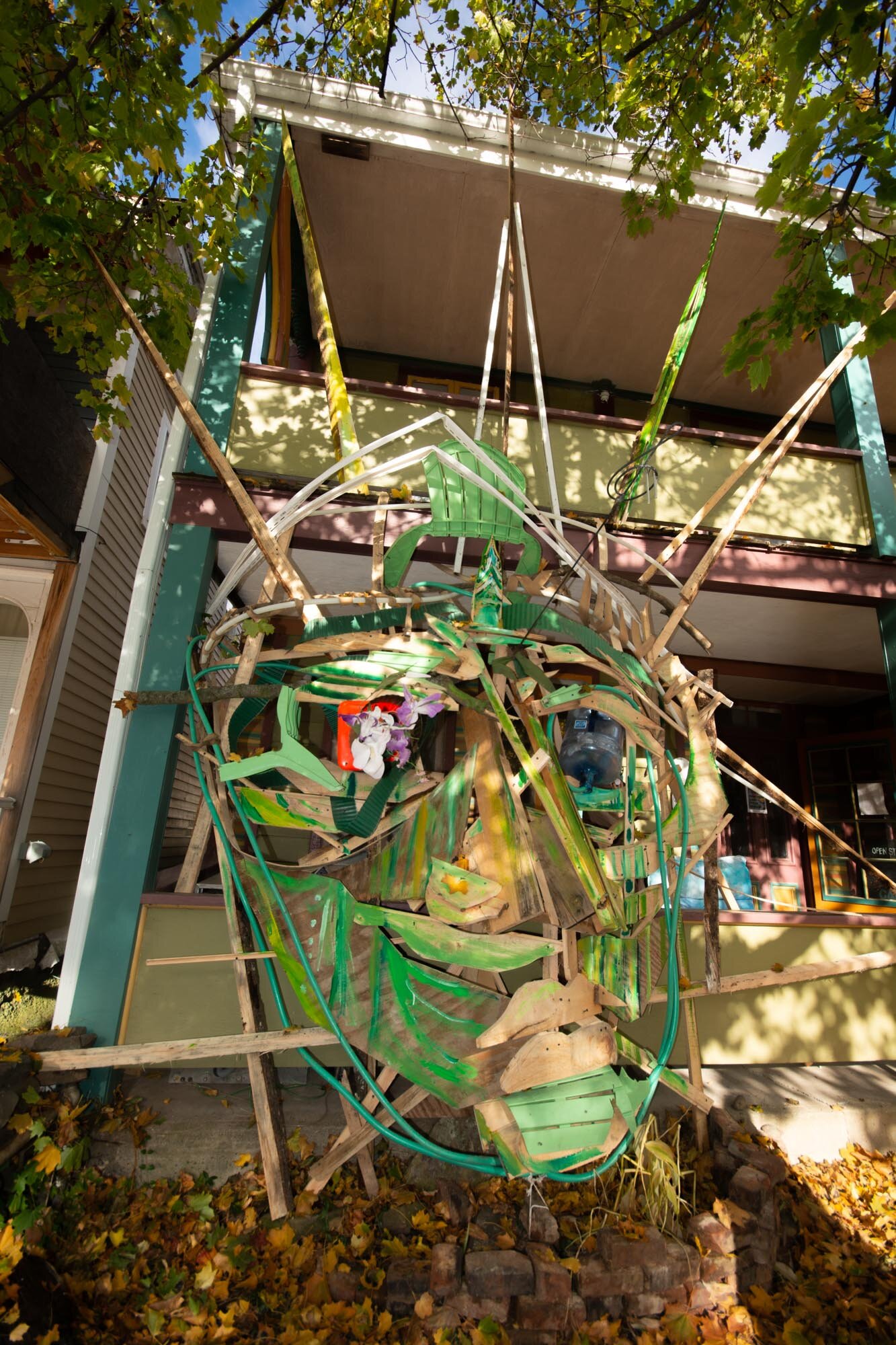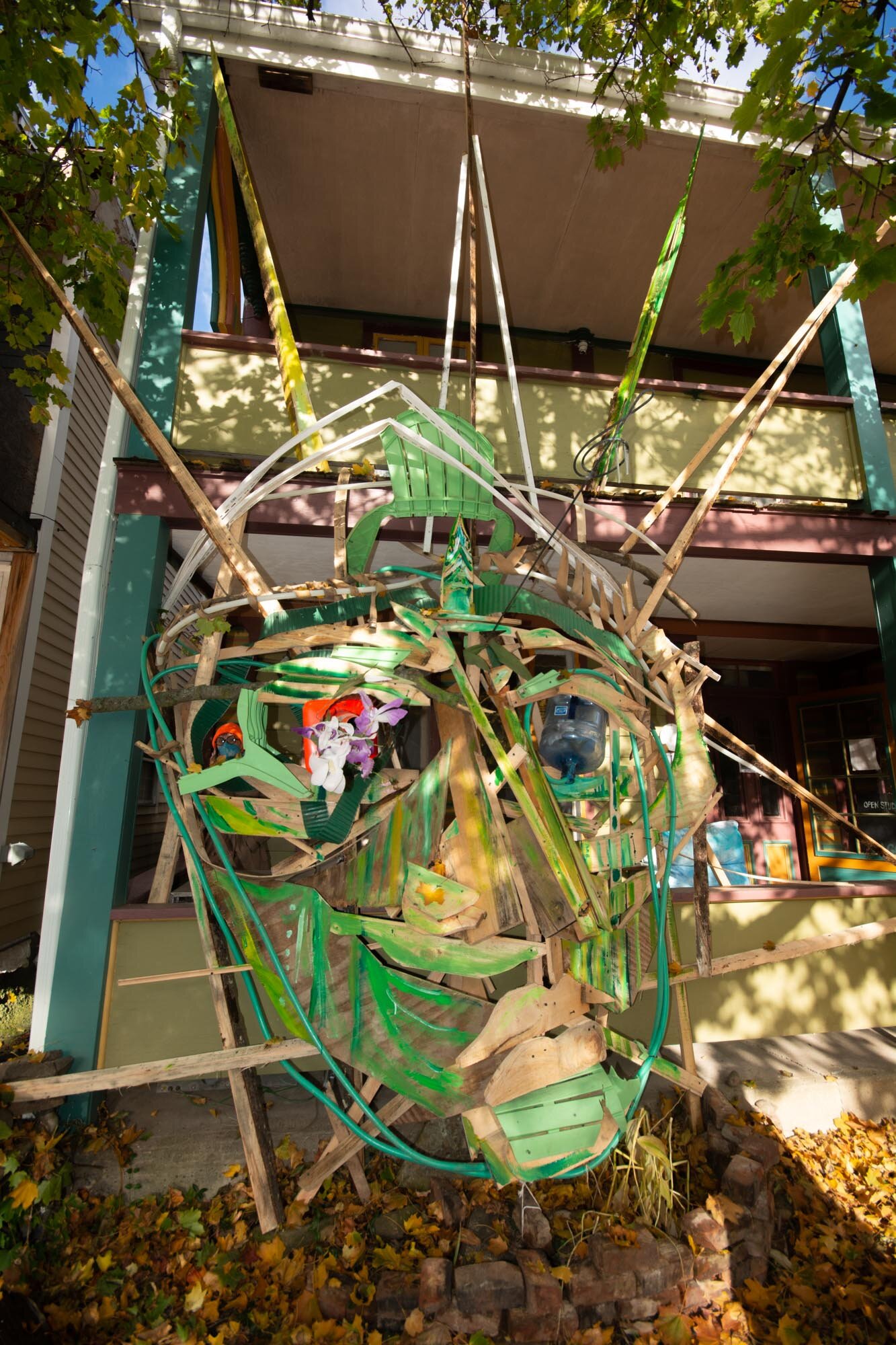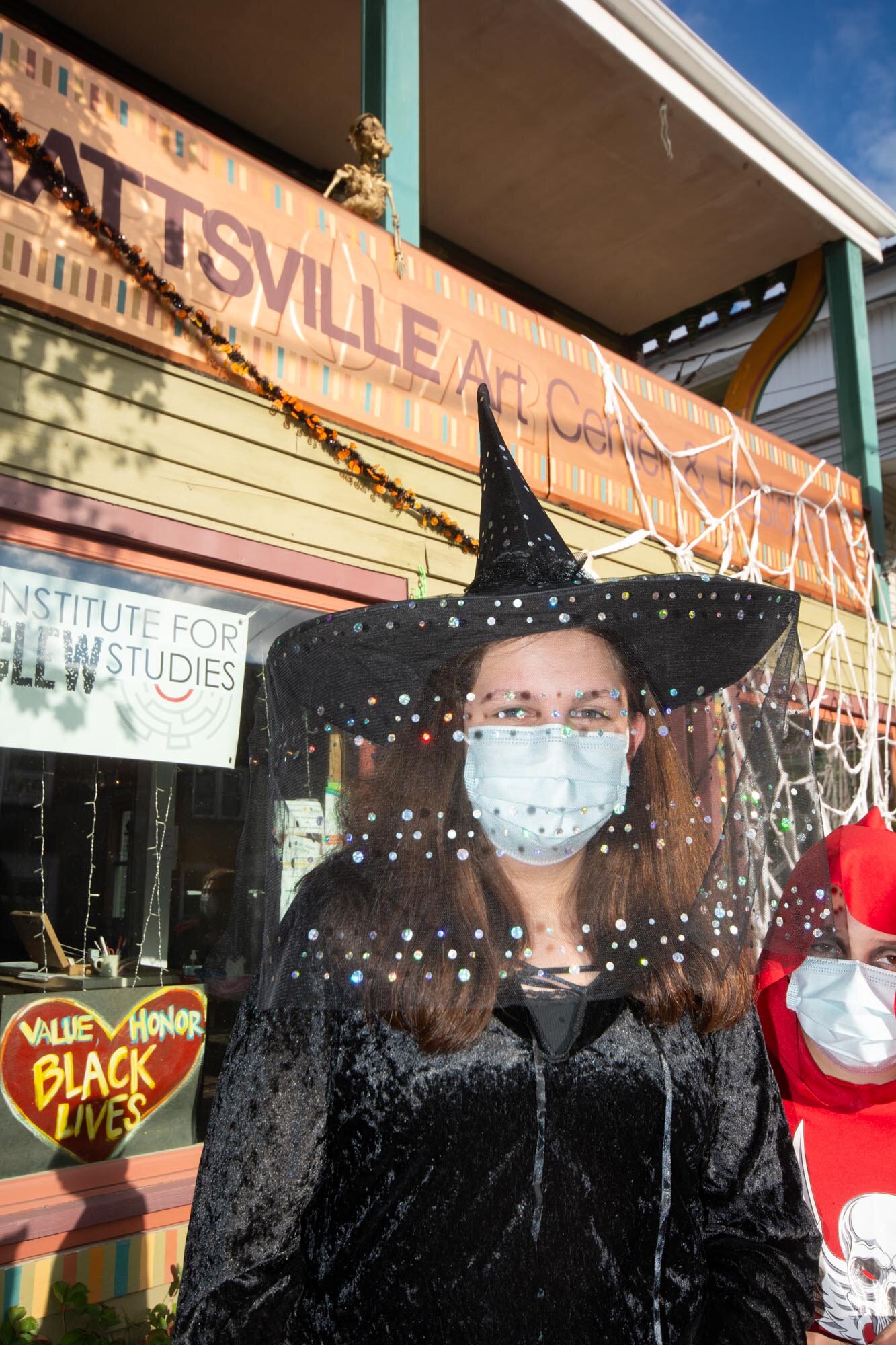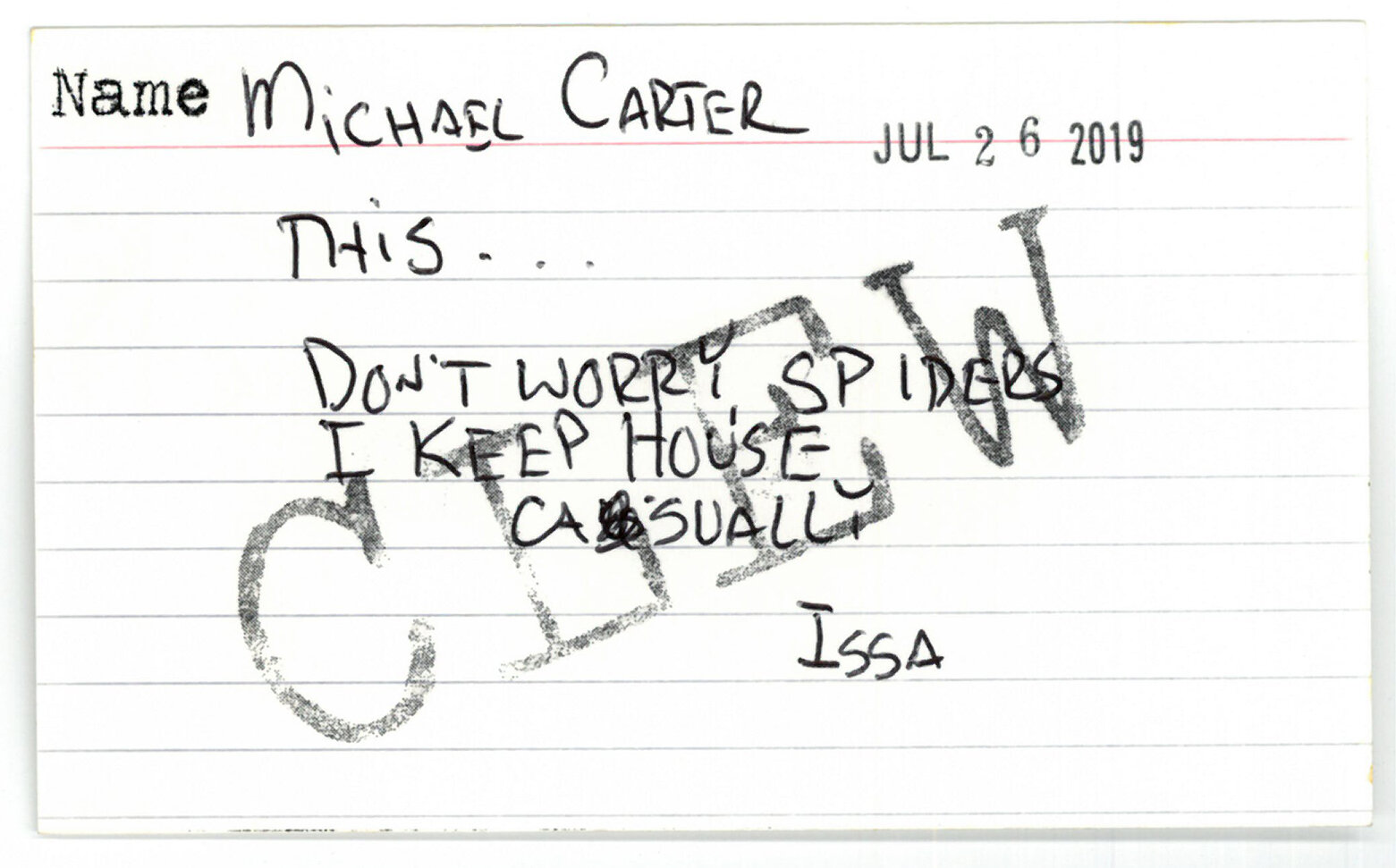sorry by mourning dove
The Music Box on Main Street
The Music Box on Main Street, is a transformative work of carpentry, sculpture, electronics, and music that recreates a flood damaged building on a small town Main Street as a magical interactive work of “musical architecture.” Artists Delaney Martin and Taylor Lee Shepherd, the founders New Orleans’ internationally renowned “Music Box Village” have created “outposts” of their Music Boxes from Coney Island to the Kennedy Center, and from Eastern Europe to the Middle East, but this is the first time they have been able to create a permanent “Musical House” where residents will interact with their sonic interfaces on a daily basis. The Music Box project ties Prattsville to New Orleans, two communities that have used art and music to build resilience and community in the a struggle to recover from devastating hurricanes.
The Music Box on Main Street was sponsored by the National Endowment for the Art’s Our Town project, awards from New York State Council on the Arts, Greene County and our community. The three-year creative placemaking process brought together artists, planners, and communities from the Hudson Valley and the rural Mountaintop, linking the remote Town of Prattsville with Greene County Government and the Hudson Valley, and engaging the rural mountaintop in new partnerships in design and the integration of arts, nature, and disaster recovery.
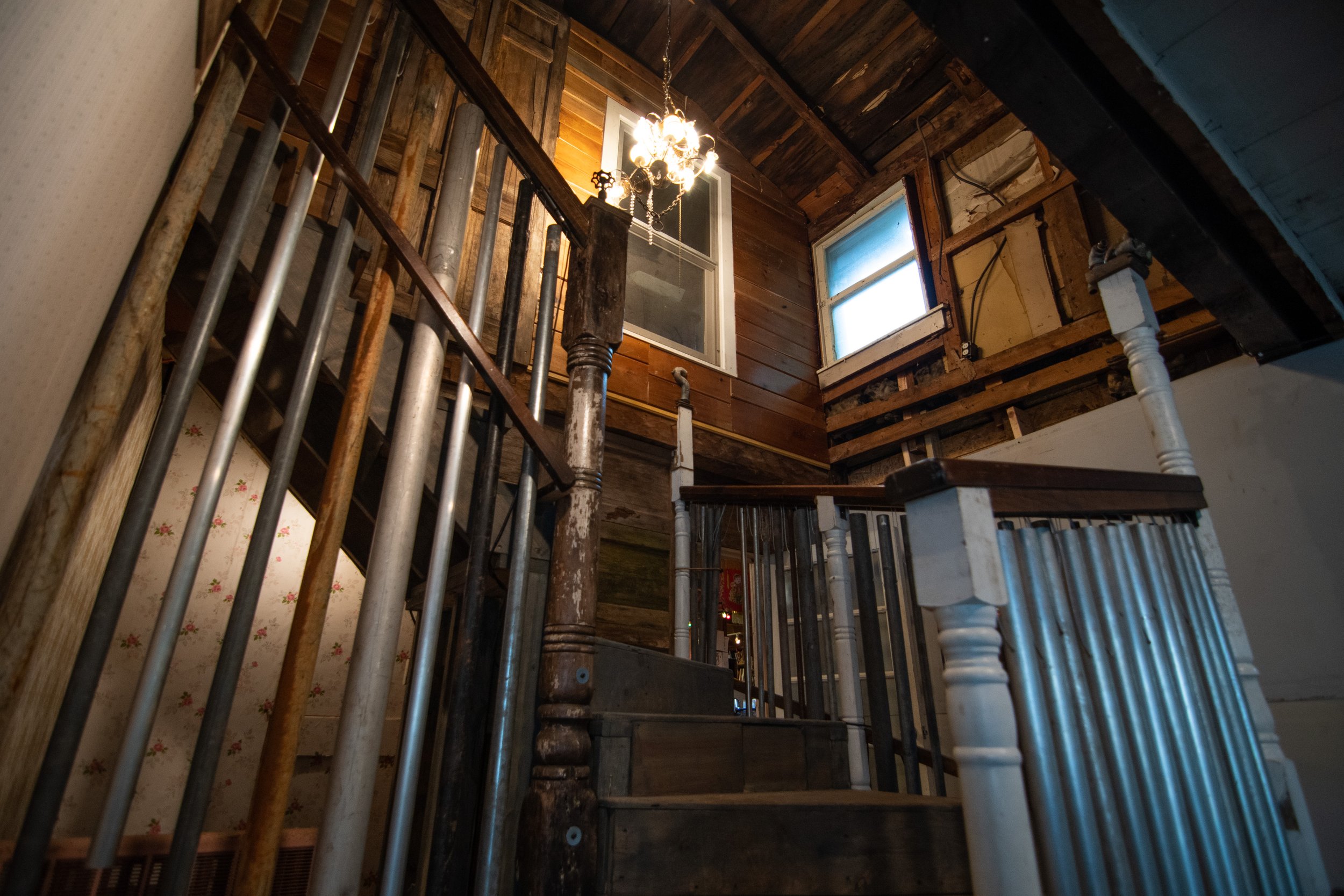
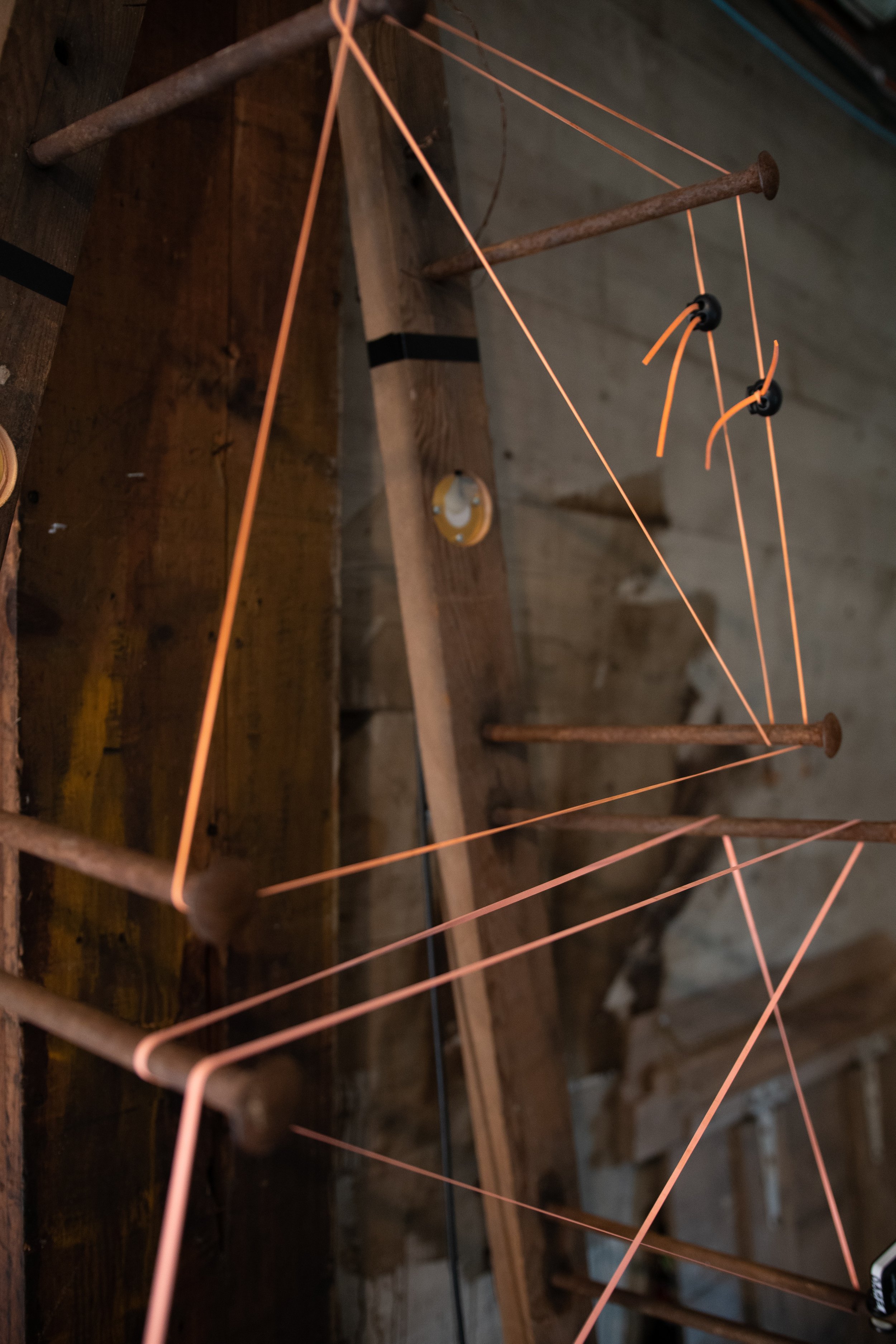
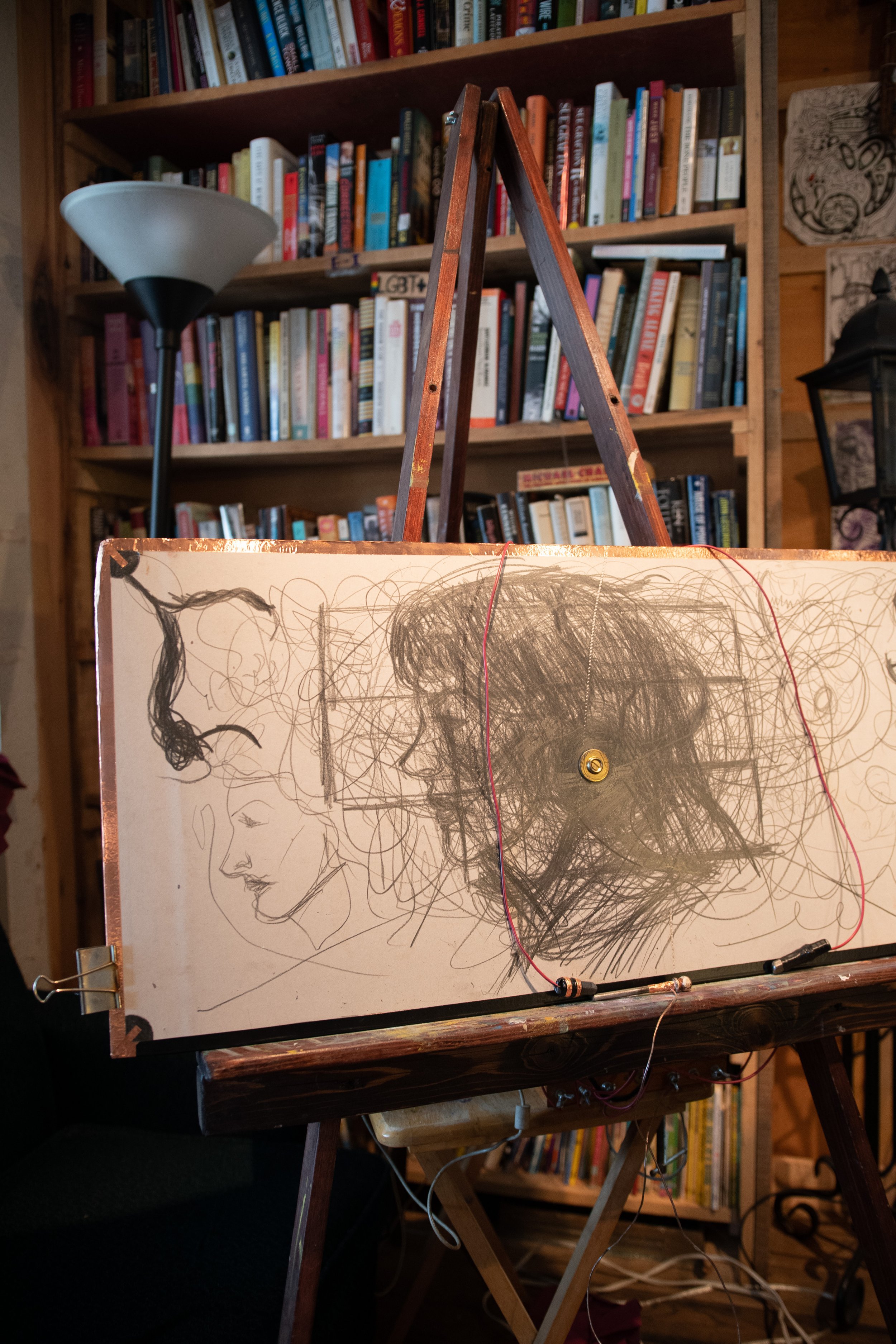
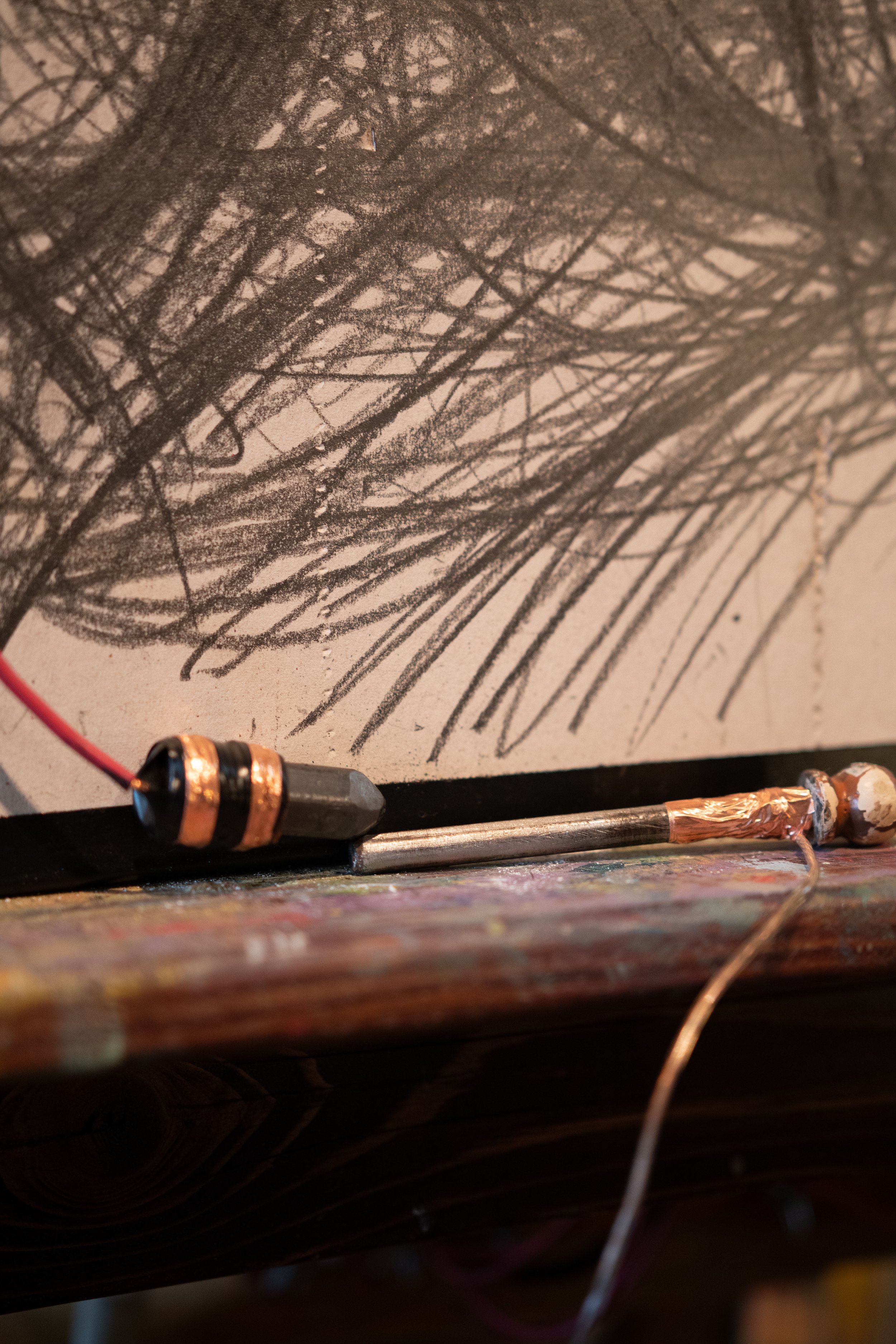
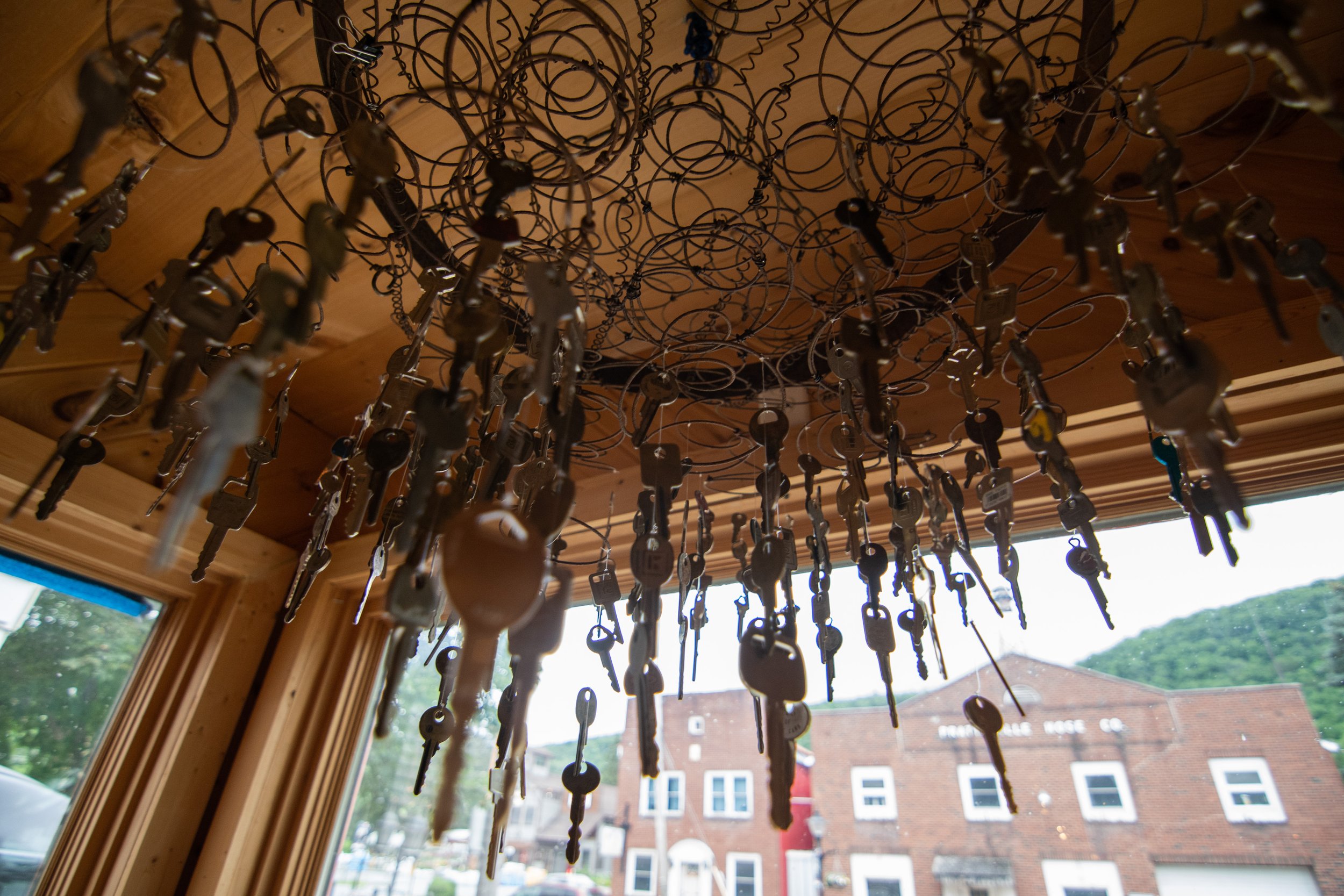
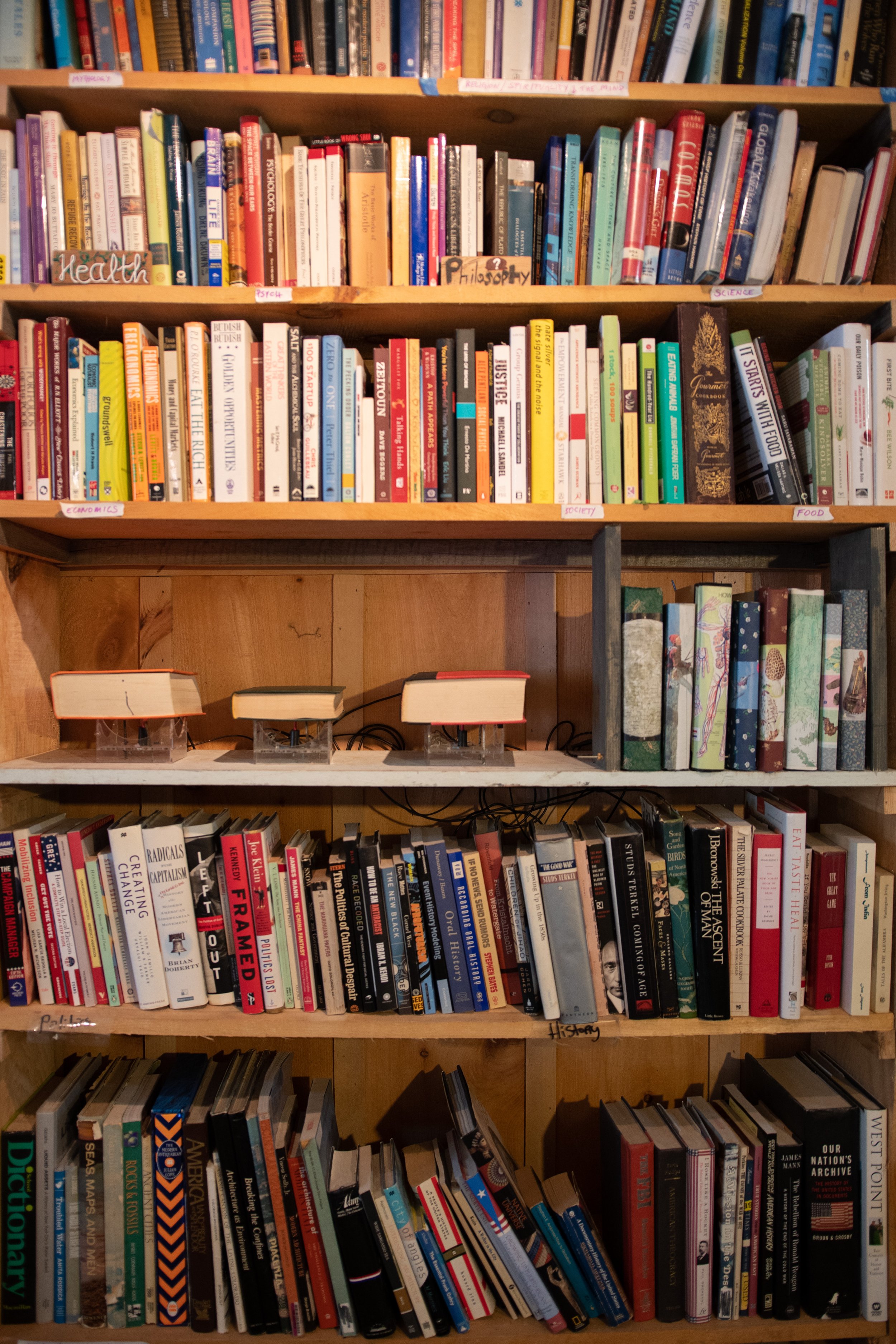
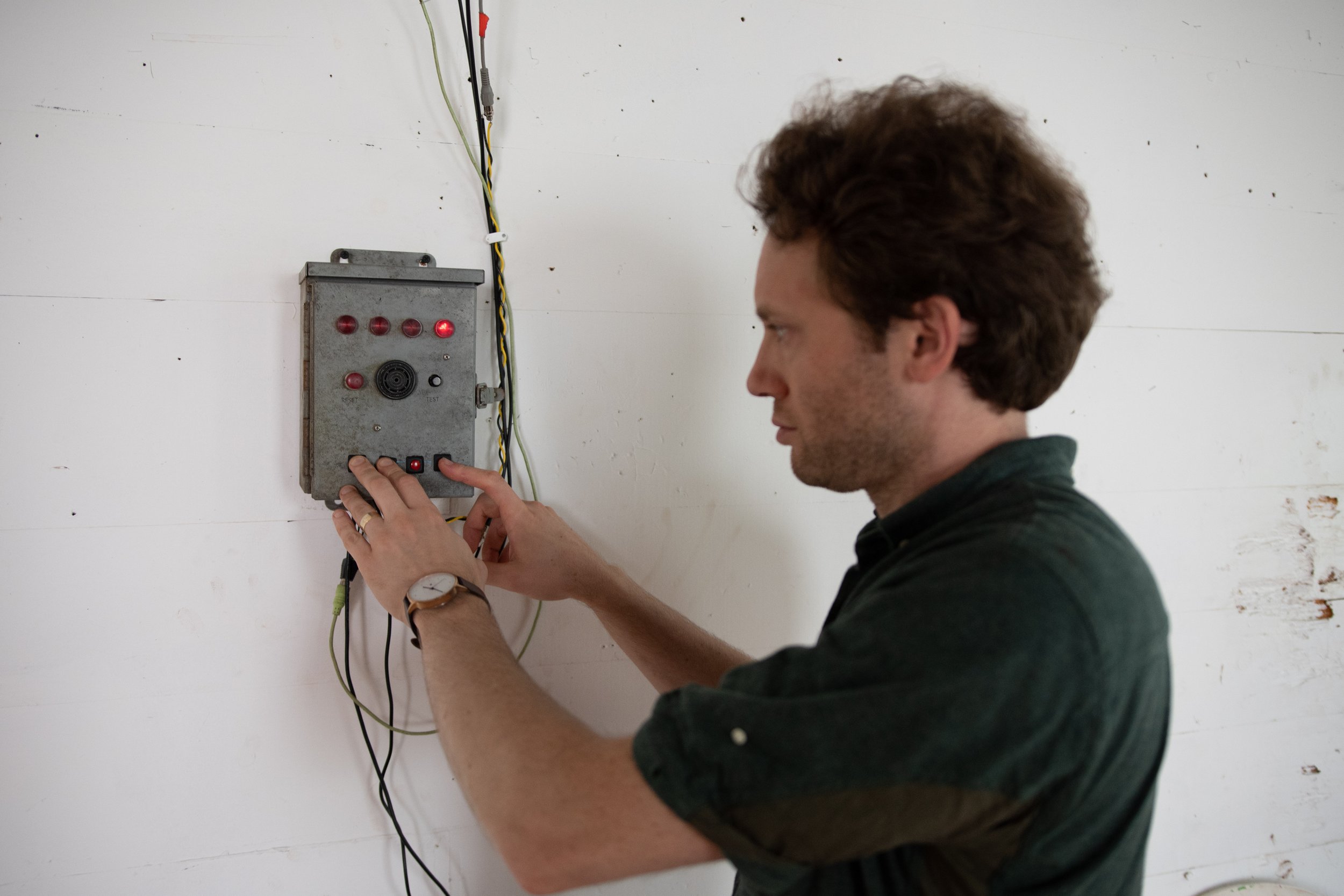
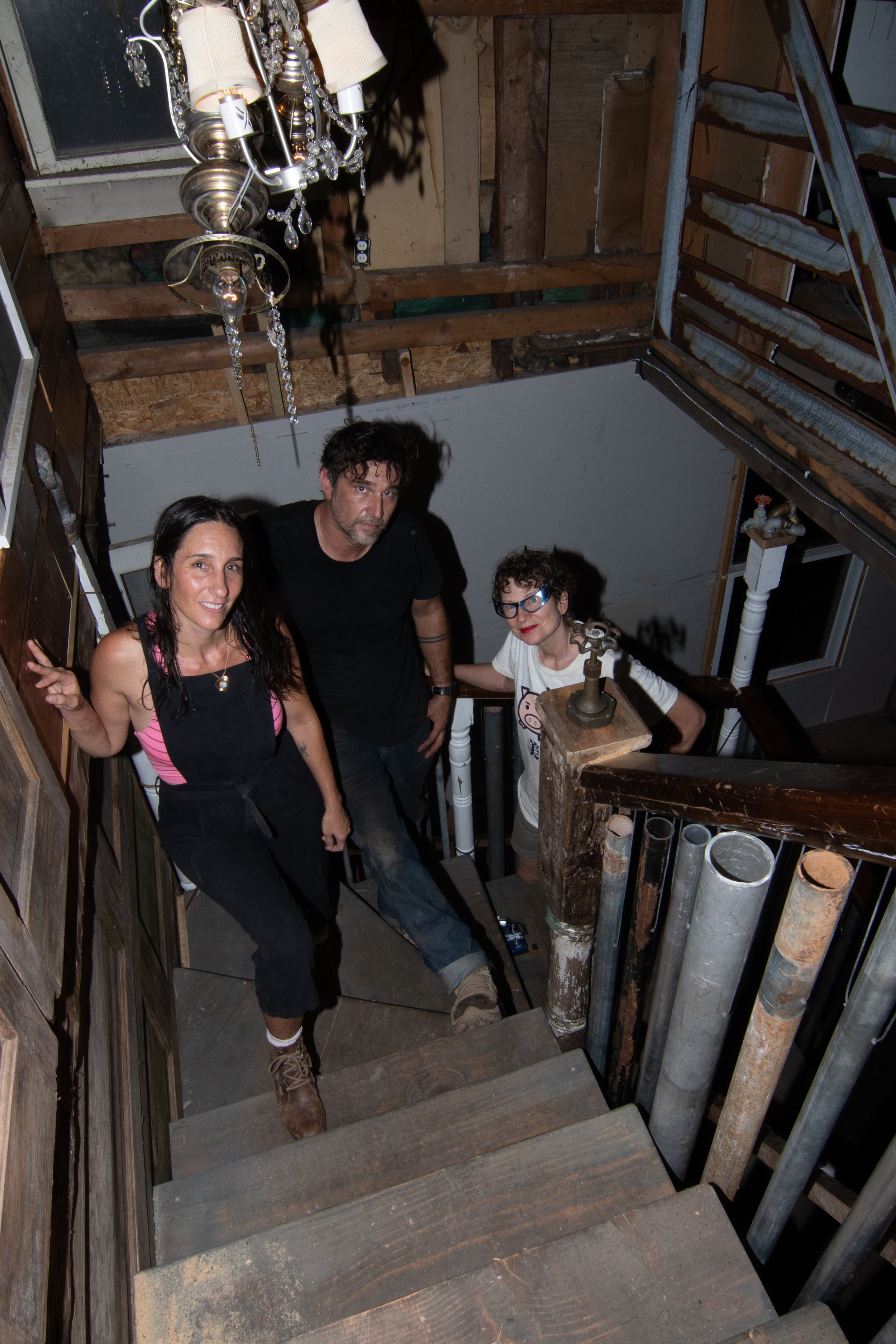
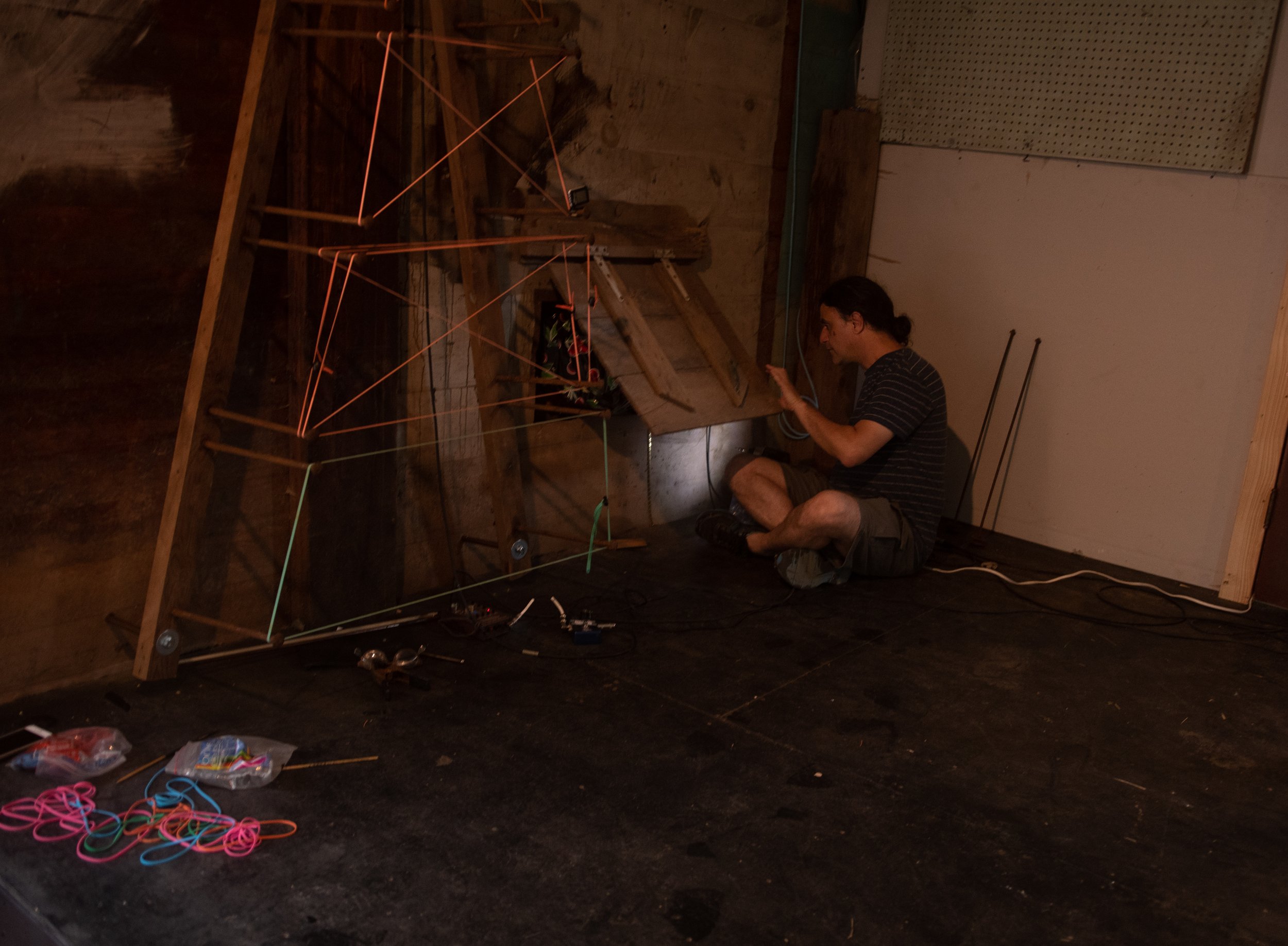
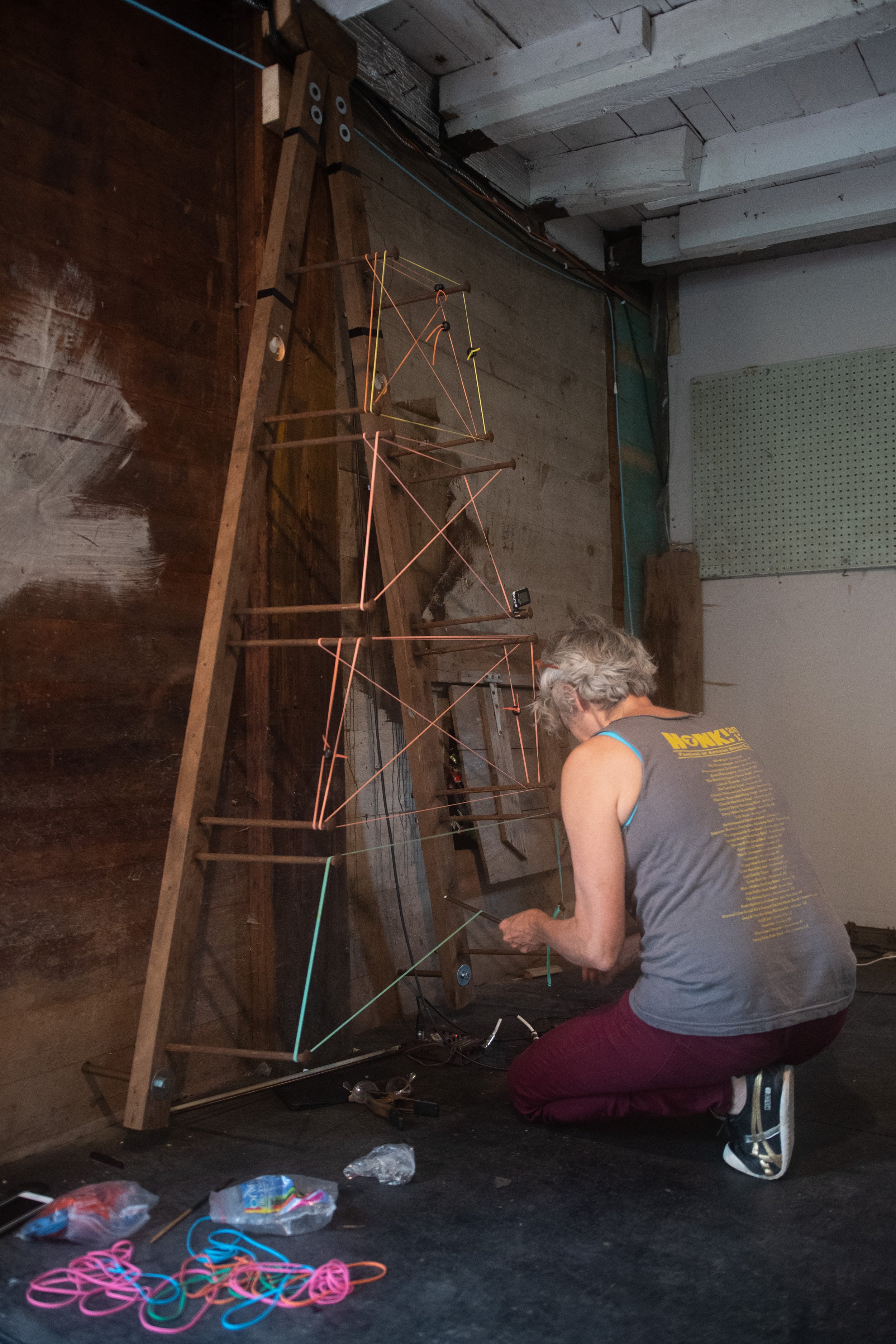
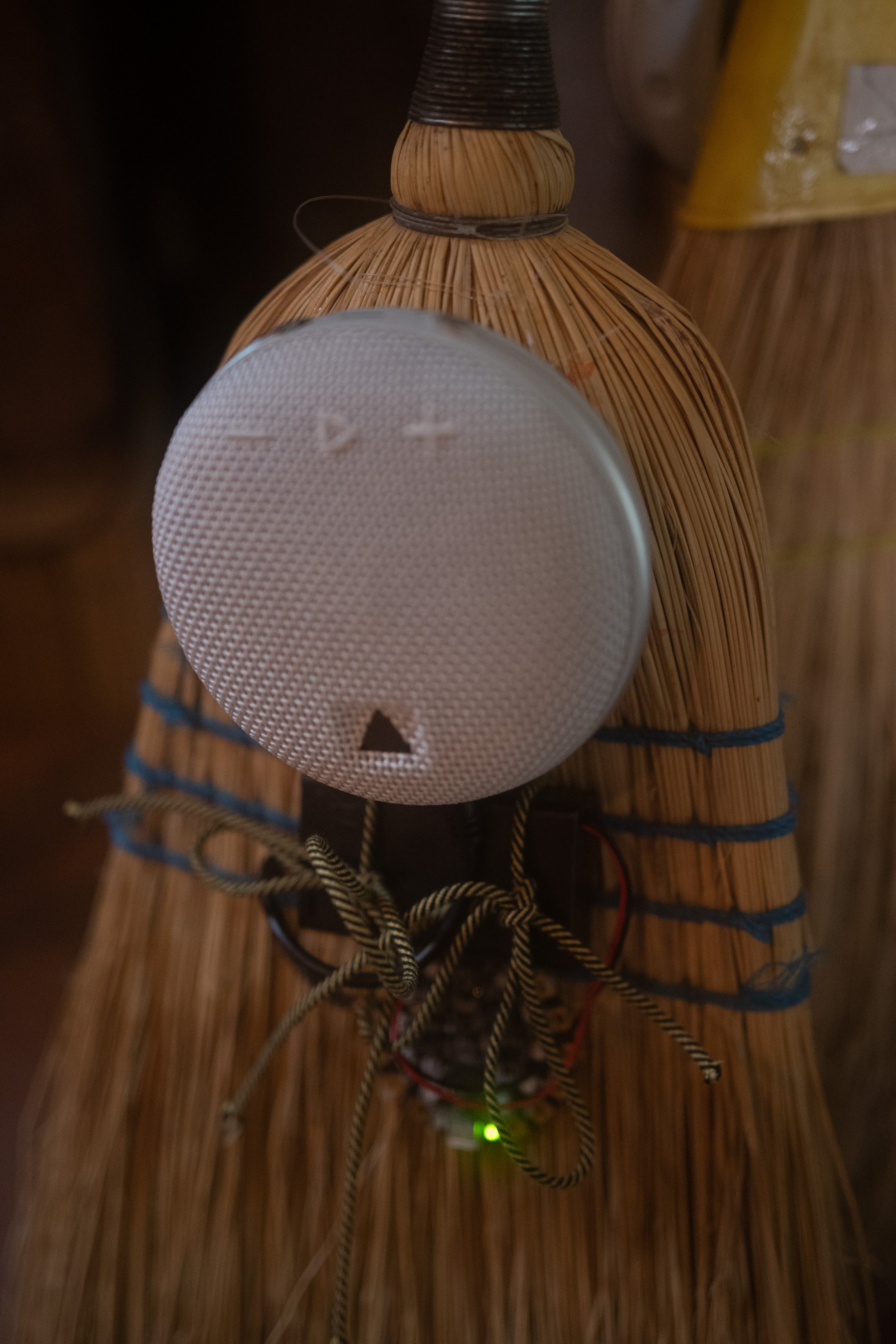
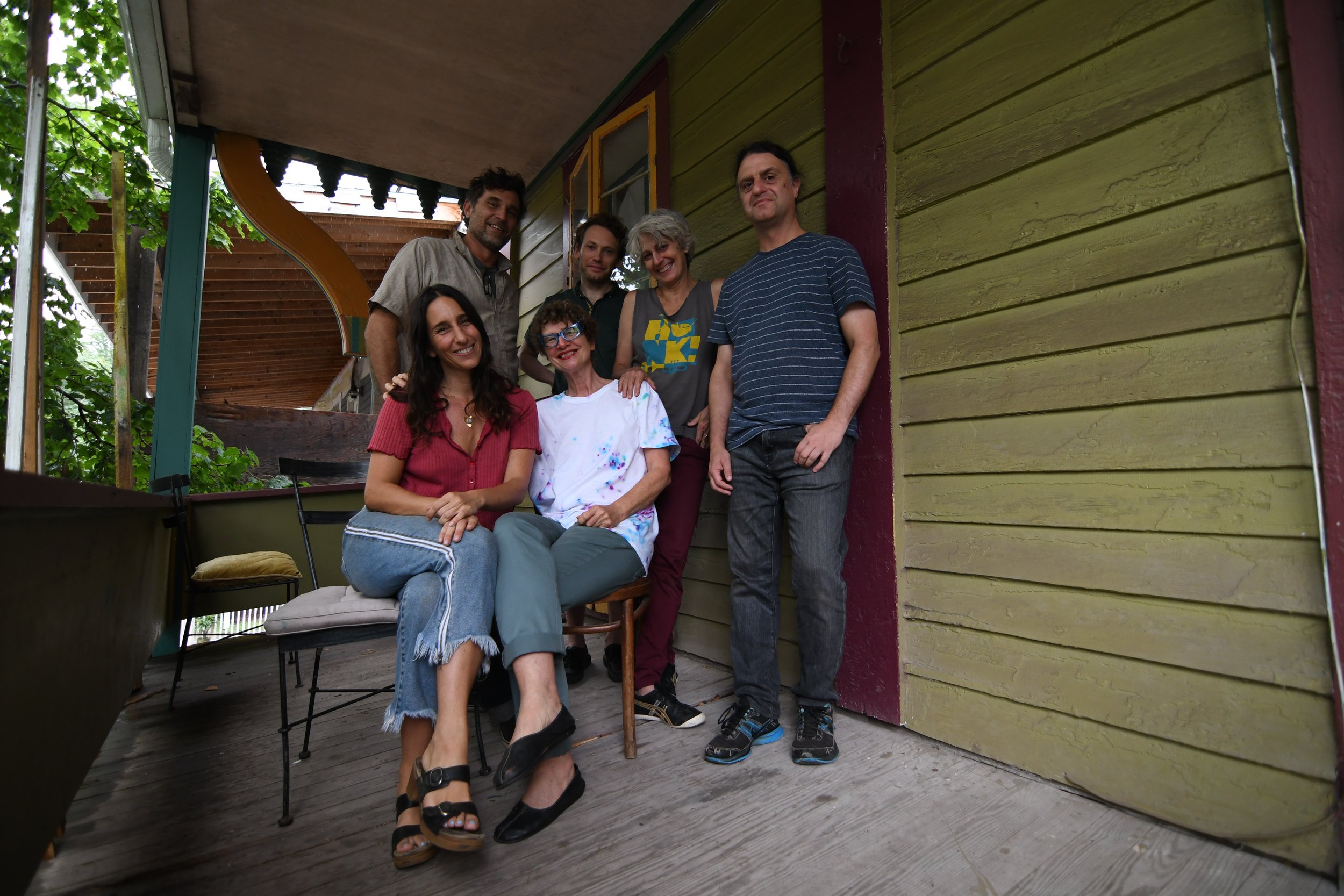
The Centerpiece of the Music Box’s Prattsville Outpost is a winding musical staircase, outfitted with soaring chime balustrades, hidden percussion interfaces, and sophisticated looping pedals. The Chime Staircase is part of the daily routine of Artists and Performers in Residence, who can also create multi-track musical recordings without stepping off the stairs. The Music Box on Main Street is part of a new performing arts space that integrates playable musical interfaces such as musical brooms, percussive ceiling hammers, a sonic saw, and a wall accordion into its stage. Additional interactive musical and sculptural works were created by Ranjit Bhatnagar, Terry Dame, Nick Yulman, and Hugo Montoya, artists from the New York region. Playful sounds lie in wait throughout the Prattsville Art Center’s building. Every space in the Center includes musical interfaces, from playable library books and an easel that plays ethereal music whenever marks are made, to a door chime made from hundreds of suspended keys, and a singing call and response to the daily noon fire siren.
The Music Box on Main Street is a creative placemaking project that brought the New Orleans artists experience in flood recovery to a remote rural audience, the wisdom they offered was matched by the delight of local residents and visitors of all ages as they played the musical architecture, inventing their own rhythms and melodies with everyday objects.
YOGA BODY - June 20th-August 18th, 2021
Tony Bluestone
The Prattsville Art Center is pleased to announce Yoga Body, an exhibition of new works by Tony Bluestone. Through the use of discomfort and humor, these paintings explore the paradoxes inherent to queer and trans representation. Bluestone destabilizes our sense of what is possible as we follow these figures through the many worlds they inhabit. We watch the subjects twist and contort in response to a distorted sense of self and in turn, they queer the spaces that they exist within. Bodies press up against their surroundings and jumble on top of one another – sometimes claustrophobic, sometimes erotic, we see them simultaneously liberated and stuck.
Rather than perpetuate an outdated paradigm of trying to help marginalized bodies blend into normative spaces, Bluestone exaggerates and celebrates their incongruity. The figures in the paintings test our bodies internal physical wisdom, creating collective transformation through their eroticism, flexibility and formal unreliability. Bluestone often refers to the power her paintings have to 3cast spells ́ and call things into being. Crafted with joy and exuberance, these psychedelic scenes invite us into the dreams, visions and manifested realities of their focused creator. Between day and night; outside and inside; starlight and the glow of an LED screen, we are welcome to watch the subjects transformations and be transported and transformed alongside them.
It is worth noting that the paintings all feature real people from Bluestone¶s own life who are transmuted as they perform in real and imagined spaces. The scenes are often infused with hyper-specific visual references to the real world. Some widely known (i.e. Tiger King, Killing Eve, Bernie Sanders campaign t-shirt, the Georgia Senate Runoff Election), some more intimate winks to friends or family (i.e. the view from the window of Columbia Presbyterian Hospital, the 1986 World Series, Dean Spade’s Mutual Aid Book, Ericka Phillip’s dream of buying a southern plantation) and references to other painters and their paintings (Angela Dufresne, Scott Reeder, Elizabeth Murray, R.J. Messineo). The incomprehensibility of many of the forms/bodies/spaces in these paintings aren’t meant to intentionally elude the viewer, rather they flag themselves to those who’ve already nourished lives in these awkward spaces. Their incitation is private and public just like the multiplicity of our bodies in space.
Tony Bluestone (b. 1979, Englewood, New Jersey) received a BA from Bard College; an MFA from Hunter college; and has participated in residencies including The Shandaken Project, The Basil Alakazi Residency, DNA Residency, and The Prattsville Art Center Residency. She has had solo shows at Elaine L Jacob gallery at Wayne State University in Detroit, at Larrie Gallery, and a Two-Person Show at La Mama Gallery in New York City. She has had work in group shows at Rachel Uffner, Freight and Volume, the Academy of Arts and Letters, the New School, Etay Gallery, and Left Field Gallery, and has also performed written works at Storm King Art Center. In 2017, she was awarded the John Koch Award by the Academy of Arts and Letters. Bluestone is a teacher at Cooper Union and SUNY Purchase.
Triple Take
Kirsten Harvey, Emma Ressel, Sue Roh and Jordan Walters
Prattsville Art Center Gallery April 17 – May 8 / Gallery Hours Friday – Sunday 11 – 5 & by appt.
The exhibition Triple Take aspires to capture the fleeting essence of a place that is created when a community is formed (then dissipates) around it. In a time when gathering together is nearly impossible, this project attempts a gathering apart, stringing together various processes and experiences to catch a glimpse of connectivity across time and through space.
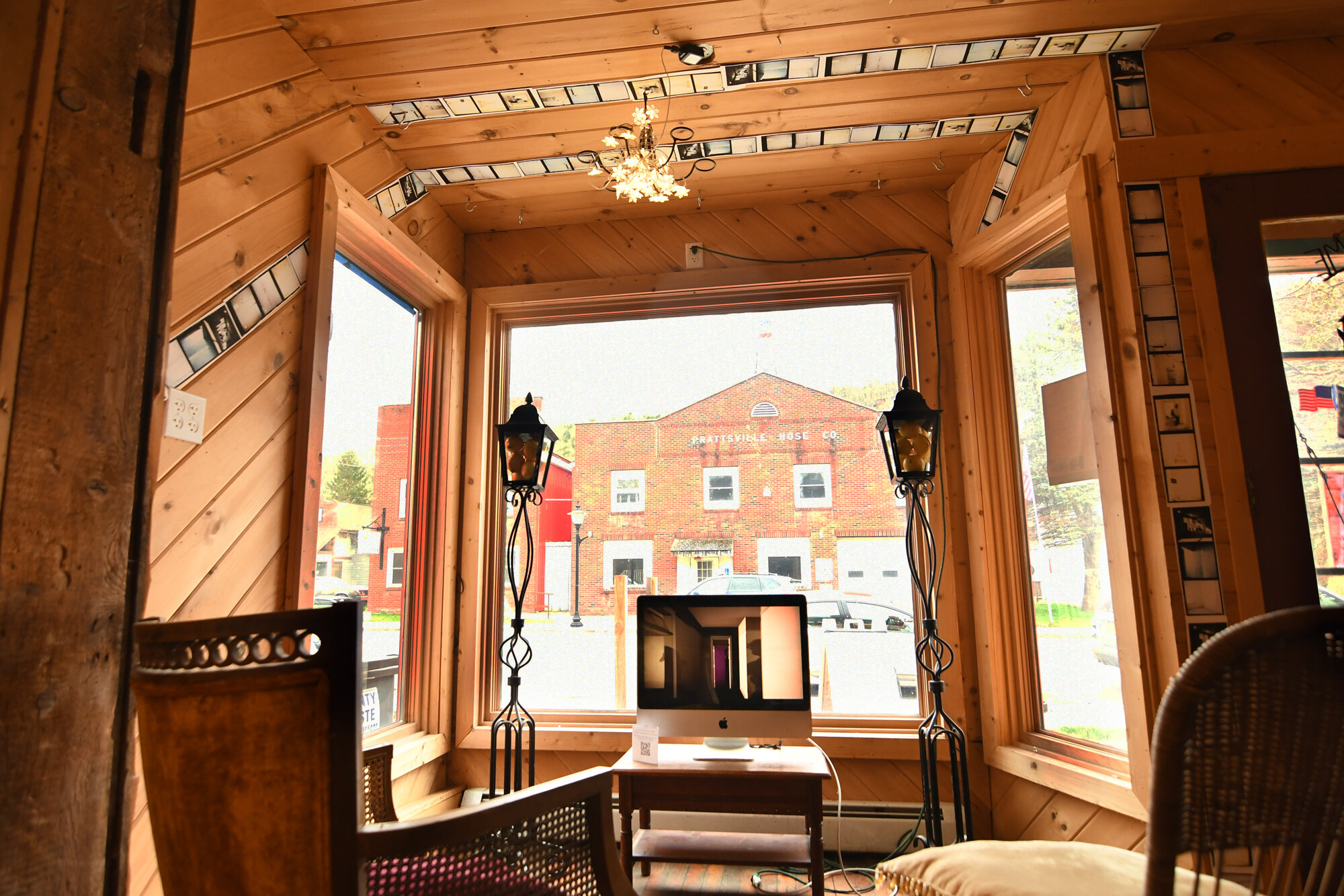
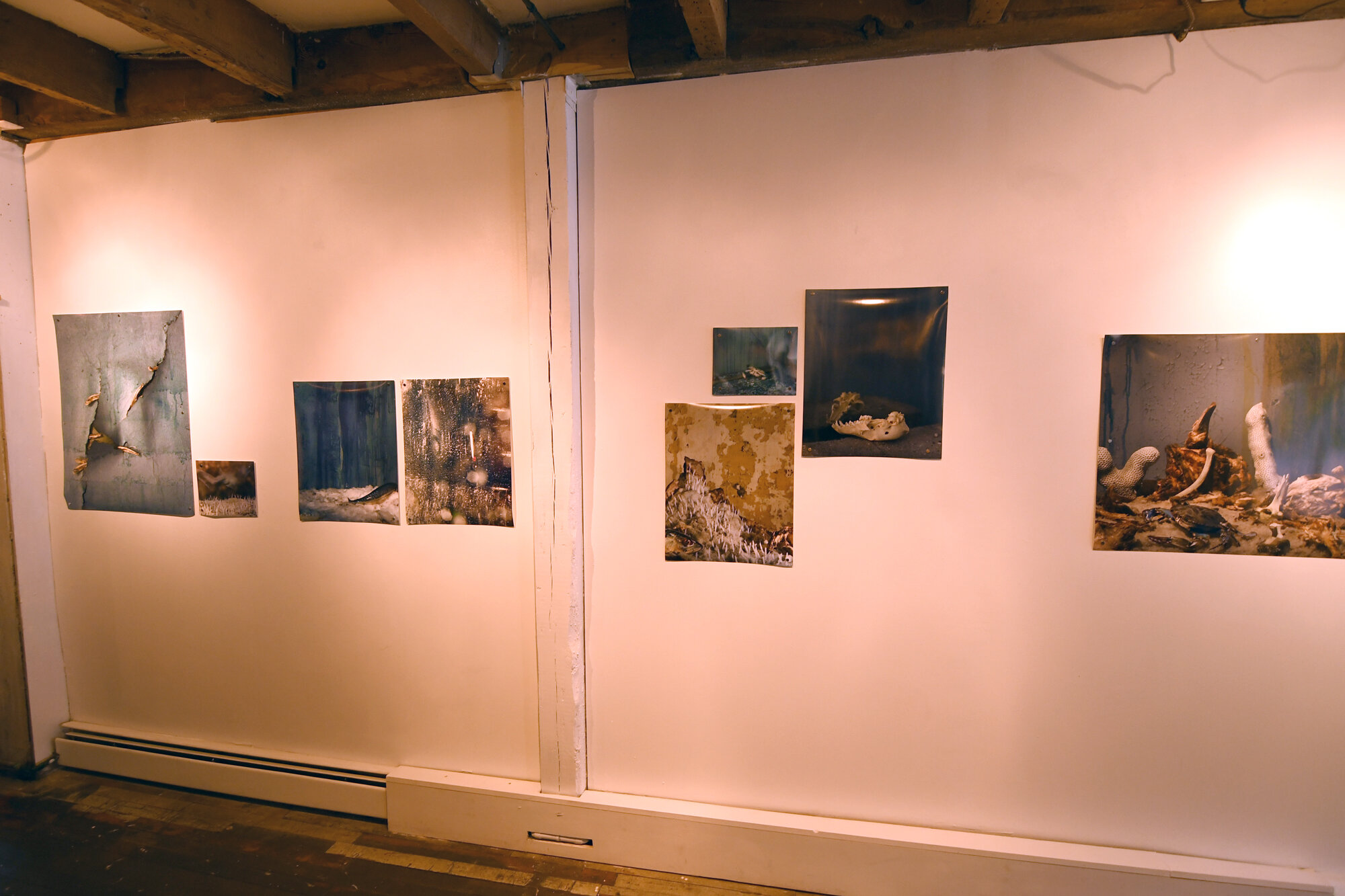
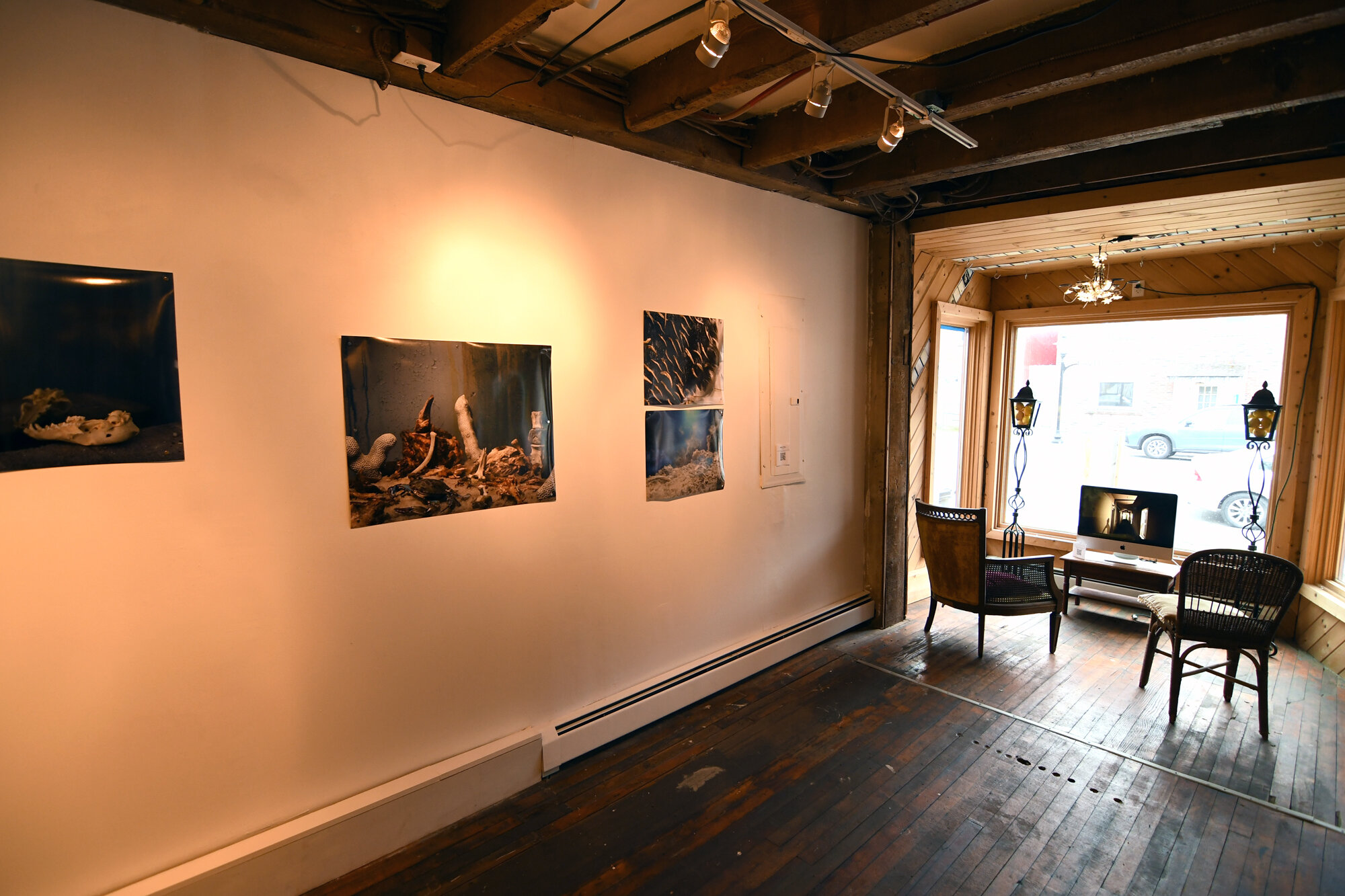
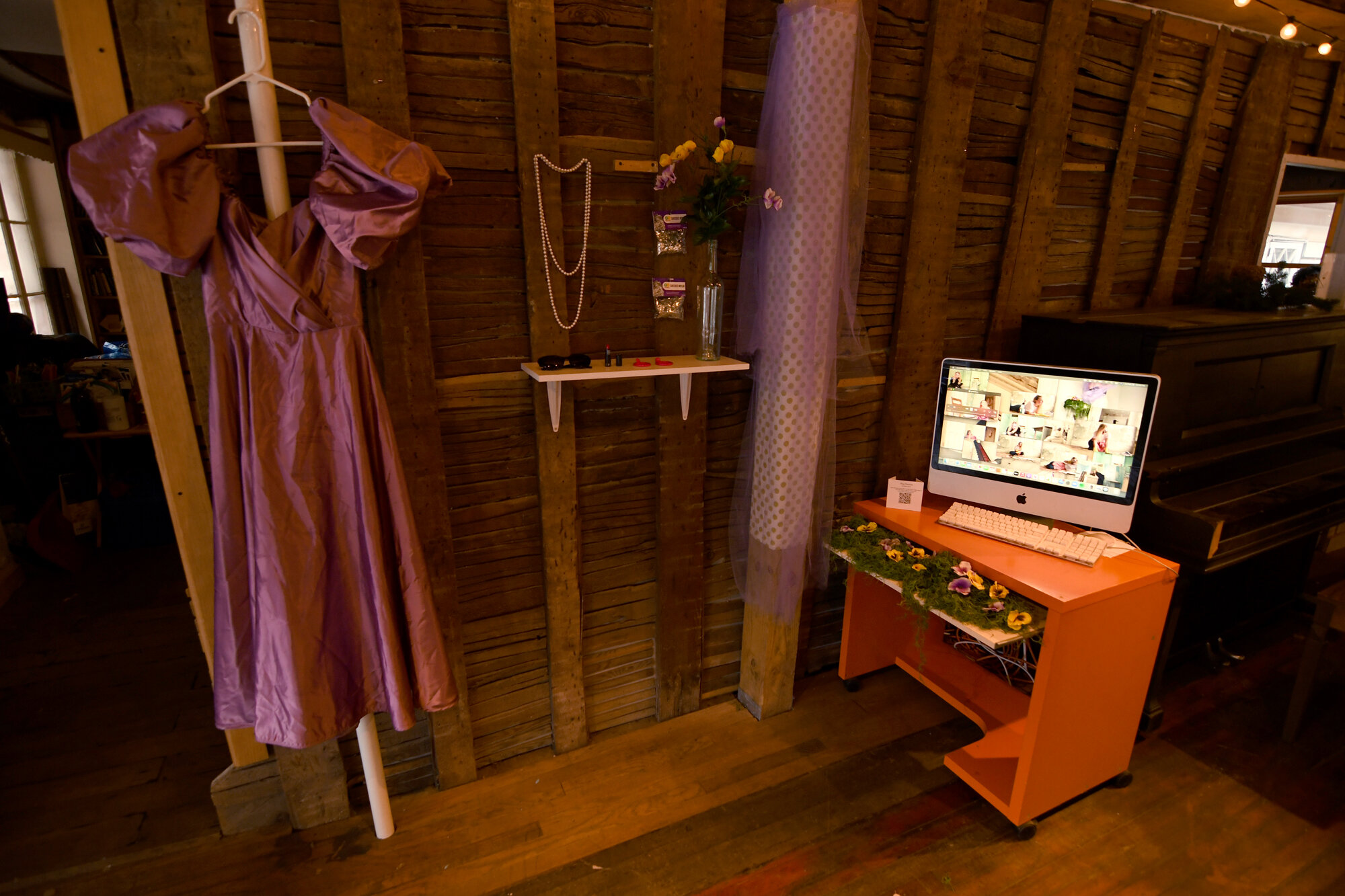
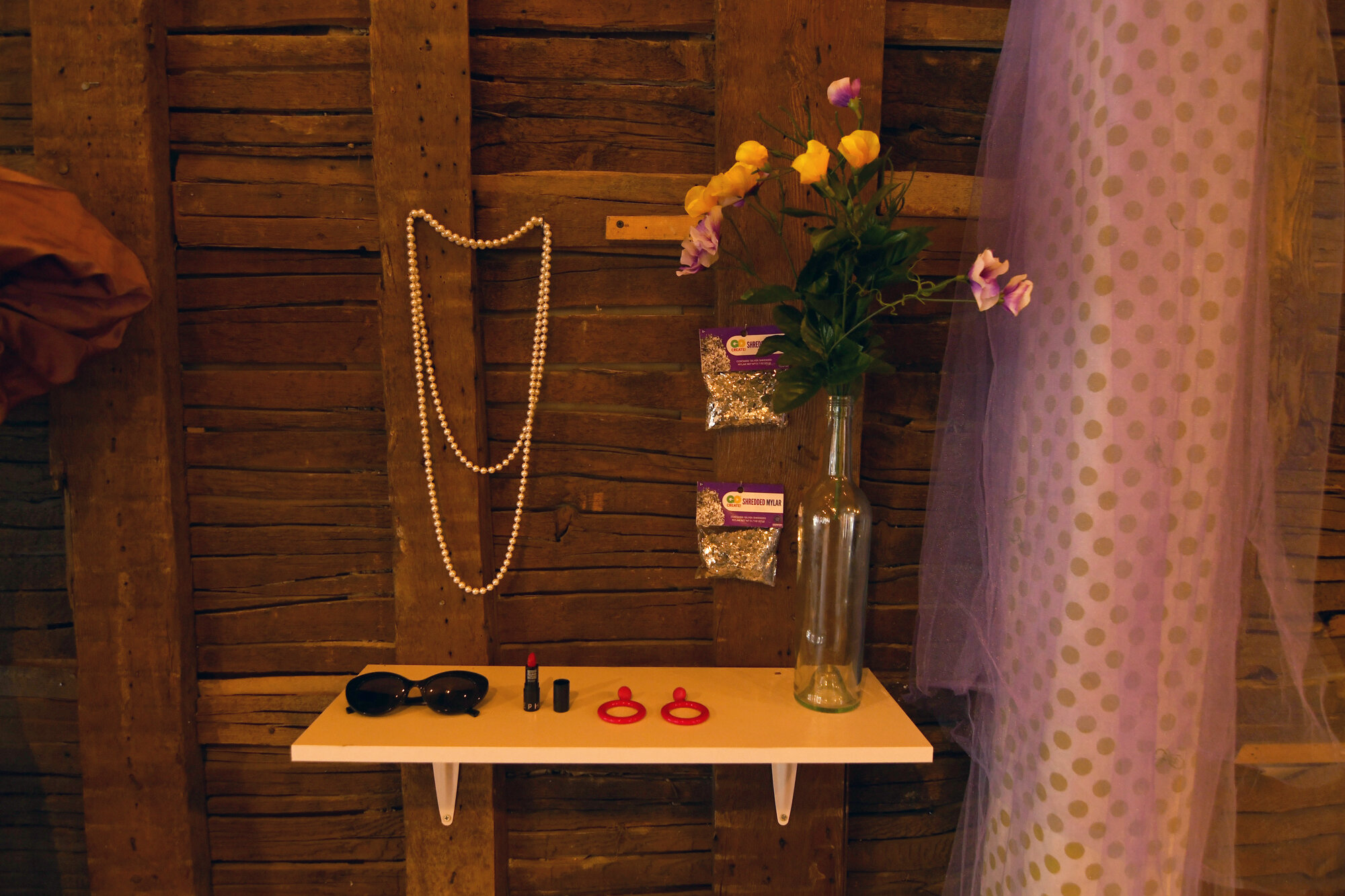
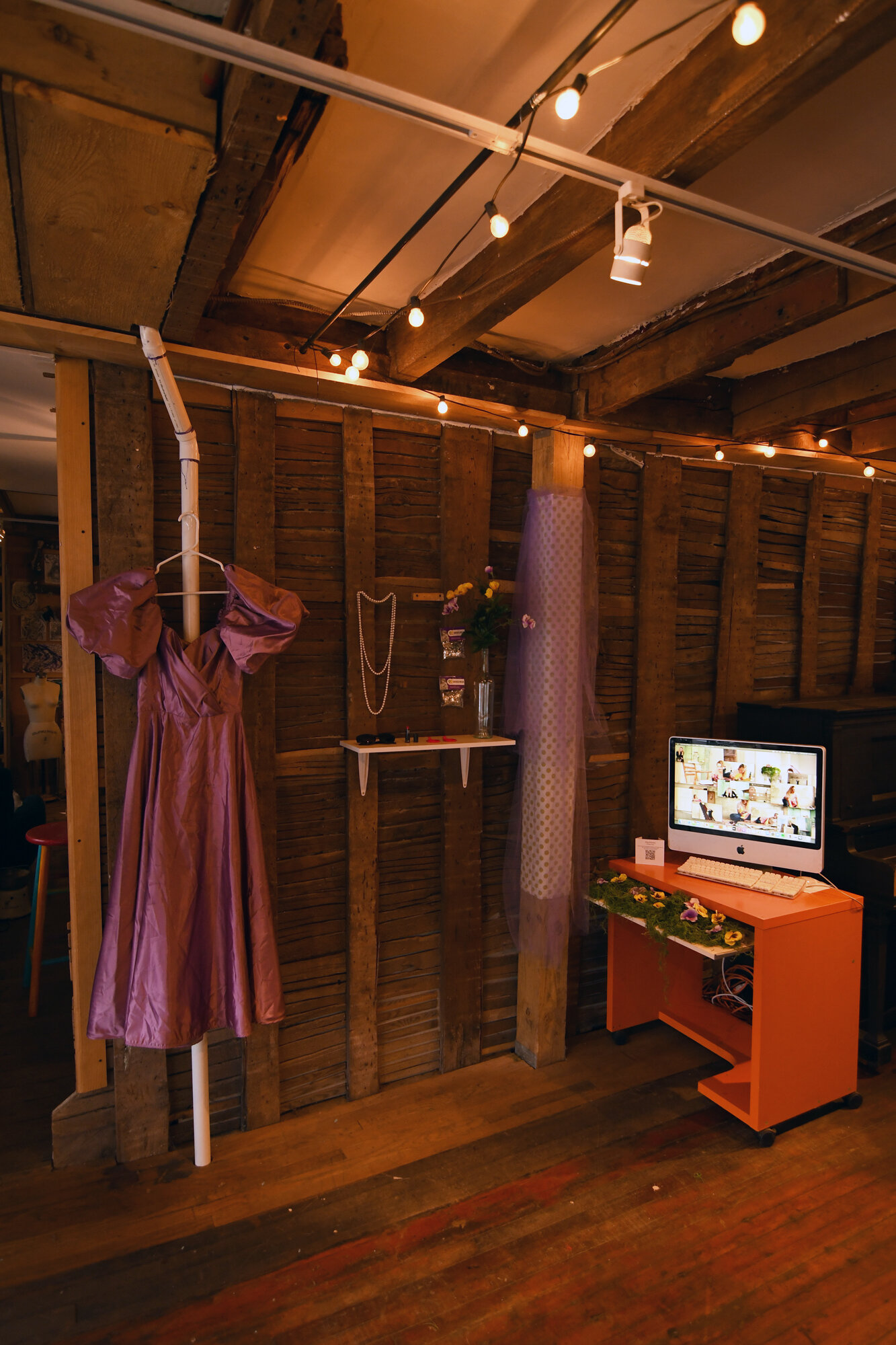
Kirsten Harvey, Emma Ressel, and the collaborative team of Sue Roh and Jordan Walters with Claire Dickson were provided with Artists’ Residencies at the Prattsville Art Center, while also creating work in, around, and about the historic Lexington House, both towns are located in the High Peaks of the Northern Catskill Mountains. Using the Lexington House as a point of departure, each artist investigated the flexible and multifaceted nature of an abandoned place; as canvas, as backdrop, as archive.
FOUR-D is a curatorial and exhibition design project created and run by Grace Caiazza and Lizzy Chiappini. With respective backgrounds in architecture and interactive technology, Caiazza and Chiappini are interested in non-traditional exhibitions that hinge on interactivity and site-specificity. FOUR-D’s aim is to reframe the experience of art viewing as a series of performative “encounters” with artworks, as well as bring audiences closer to each artist’s creative process. Their exhibition history includes Studied at The Spring/Break Art Show, Devotional at the Church Troy, as well as many other exhibitions taking place in a variety of sites including a blackbox theater, a storefront, and a former Freemason’s lodge.
Halloween in Prattsville
200 rural residents closed down the Main Street of Prattsville to celebrate Halloween in style. They were greeted at the Prattsville Art Center by a giant bust of the Statue of Liberty and artists taking instant photos documenting the moment Special thanks to Rebecca, Rowan, and the Prattsville Recreation Committee. Photos below by Otto Ohle.
Prattsville Clews
a project by Clover Archer
Prattsville Clews is made possible through the generosity of: The Prattsville Art Center, Washington and Lee University’s Lenfest Grant, & The Zadock Pratt Museum
Clew Cards are available at the Prattsville Art Center, come in and add your story to the archive.
Click on the Cards below to read Some of the Clews recorded last year in Prattsville:
Prattsville Clews was created during 18 months of collaboration between long time local families who shared their family trees and local stories with the community. Clover Archer’s delicate graphite drawings, annotated by rural family member commemorate this process.
Cammer Family Tree - Detail
Conine Family Tree - Detail
The Clew Registry Project
Is an ongoing archive delighting in the absurdity of attempting to resist the inevitable obscurity that awaits all but a select few of us. We cannot save, remember, or record all aspects of our ordinary lives for posterity. Thus, this project invites contributors to write down a detail, fact, characteristic, event, habit, story about themselves that would otherwise be lost time. This isn’t about revealing personal information or intimate secrets (unless one wants to!). Rather, the project is about documenting something that would be forgotten or not otherwise known--a detail that is not part of the public record or findable on the Internet. ICS asks contributors to think about the particular minutiae that accumulate in each of our uniquely led lives and constitutes our very humanity.
To see all the Clews in the Clew Registry, please visit:
http://instituteforclewstudies.com/exhibits/show/clew-registry/clew-registry
Alle Family Tree - detail
PRATTSVILLE CLEWS
by Clover Archer
The Clew Registry project documents micro or granular histories --small ordinary moments in everyday lives that fill in the vast amount of time around lifetime milestones or what is more generally considered “important.” I call these small human histories -- “clews.” Our contemporary word “clue” is derived from the word “clew”, originally meaning a ball of yarn or thread. In one Geek myth, a “clew”, or ball of yarn, is used to lead the way out of a labyrinth, which is how we have come to understand the word to mean something that leads to a solution or an answer. Thinking of the labyrinth as a metaphor for life, I consider these granular histories to be the moments that lead us through the maze of our existence--guiding the way and filling the time between the more memorable, and more commonly documented, occasions.
Community Collaboration
As a creative endeavor that combines contemporary artistic practice with historical research, the Prattsville Clews Project online exhibition is a collaboration between Prattsville Art Center and Zadock Pratt Museum. This project brings together the missions of Prattsville’s historical foundation and its creative community center to examine overlooked trajectories between the past, present, and future, and to celebrate this unique area of the Catskill region.
In one half of this two-part presentation, the Prattsville Art Center will host on its website the Clew Registry. Newly registered Clews will be added to the website over the course of the digital exhibition. At the Close of the exhibition, the Registry will double as a lottery wherein a select number of registrants will receive Clew drawing illustrations -- original artworks depicting their submissions.
In the other half of this two-part presentation, the Zadock Pratt Museum will host a digital exhibition of the graphite drawings that are illustrations of “Clews” contributed by Prattsville citizens who shared memories, stories, and histories about their families-- many going back many generations in the area.
Visit the Pratt Museum Website to see the drawings section of this exhibition:
https://zadockprattmuseum.org/prattsville-clews-exhibition/#jp-carousel-640
LOCALLY GROWN
Curated by Lindy Lapin
What does it mean to grow up here, in rural upstate New York? What does it mean to grow up anywhere? Students from local high schools in Greene, Delaware, and Schoharie counties have had a show every year at the Prattsville Art Center on the theme “Locally Grown”. This year, as schools and arts spaces have been closed, we have connected with students to show their work online. These students have all grown up on the internet, with many new questions about place, identity, and growing up.




